August 8, 2021
Martha O'Kennon
.
I finally decided that most of the vegetation in the yard was either annoying or dangerous. For one thing, walking around in the side yard meant dodging junk tree branches at my head AND at my feet. So Chaim and I have been lopping trees small enough to get the lopping shears around their trunks. Then chopping the tree into lengths capable of being stuffed into the city yard waste can. Not to mention that some of that vegetation is right against the house. In fact, that Trumpetvine managed to climb up and meld itself with the phone cable! So I've also asked a local yard-improver to come and take out a few bigger trees and carry that mess away. But you can still find some flowers!
In fact, on August 1, guess what was blooming? My favorite Day Lily, whose name just happens to be "August Orange". The bluish-purple Spiderwort seems to be folding itself into a jelly earlier in the morning - it has been faithfully blooming till noon up to now. Here you can see the edges turning into protoplasm.
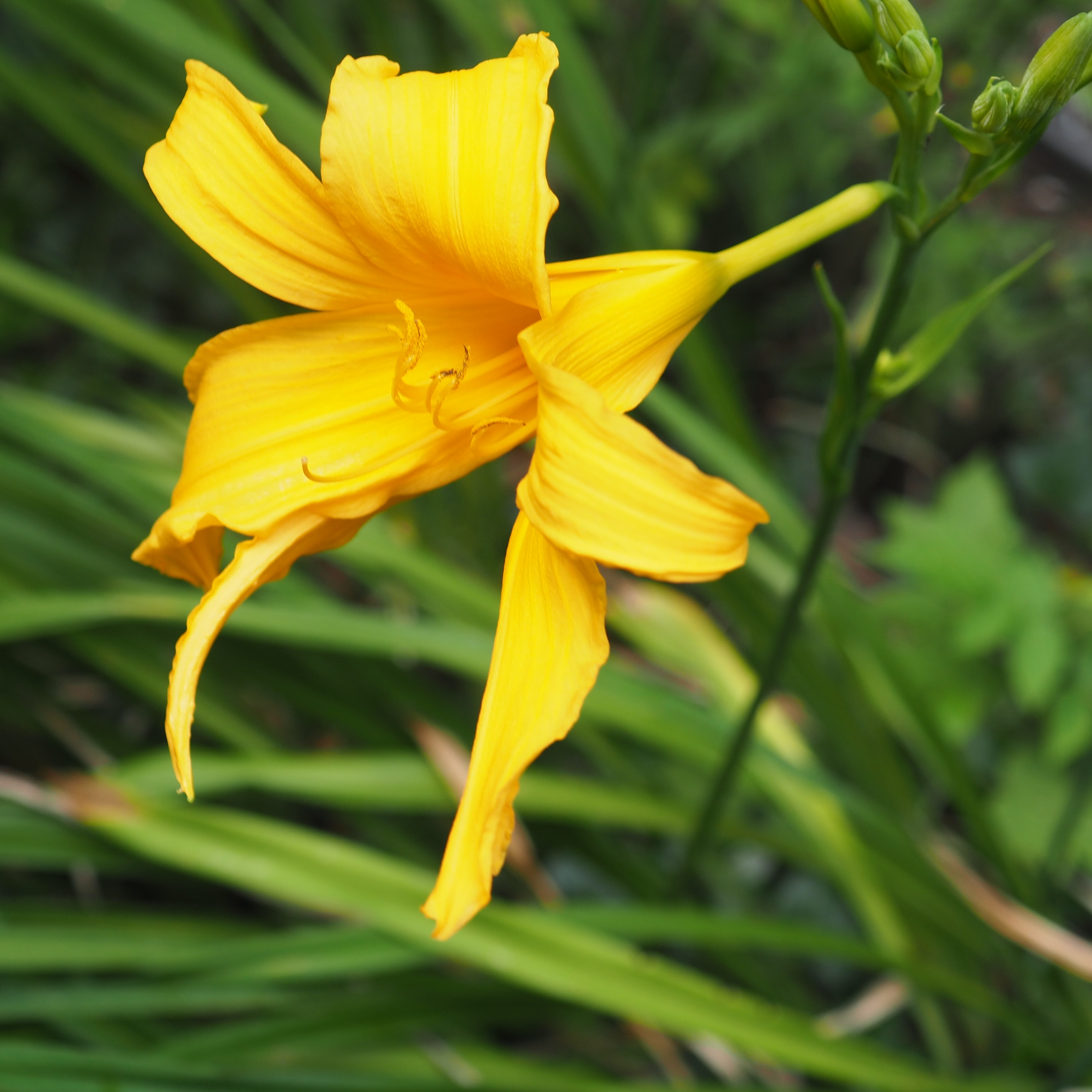
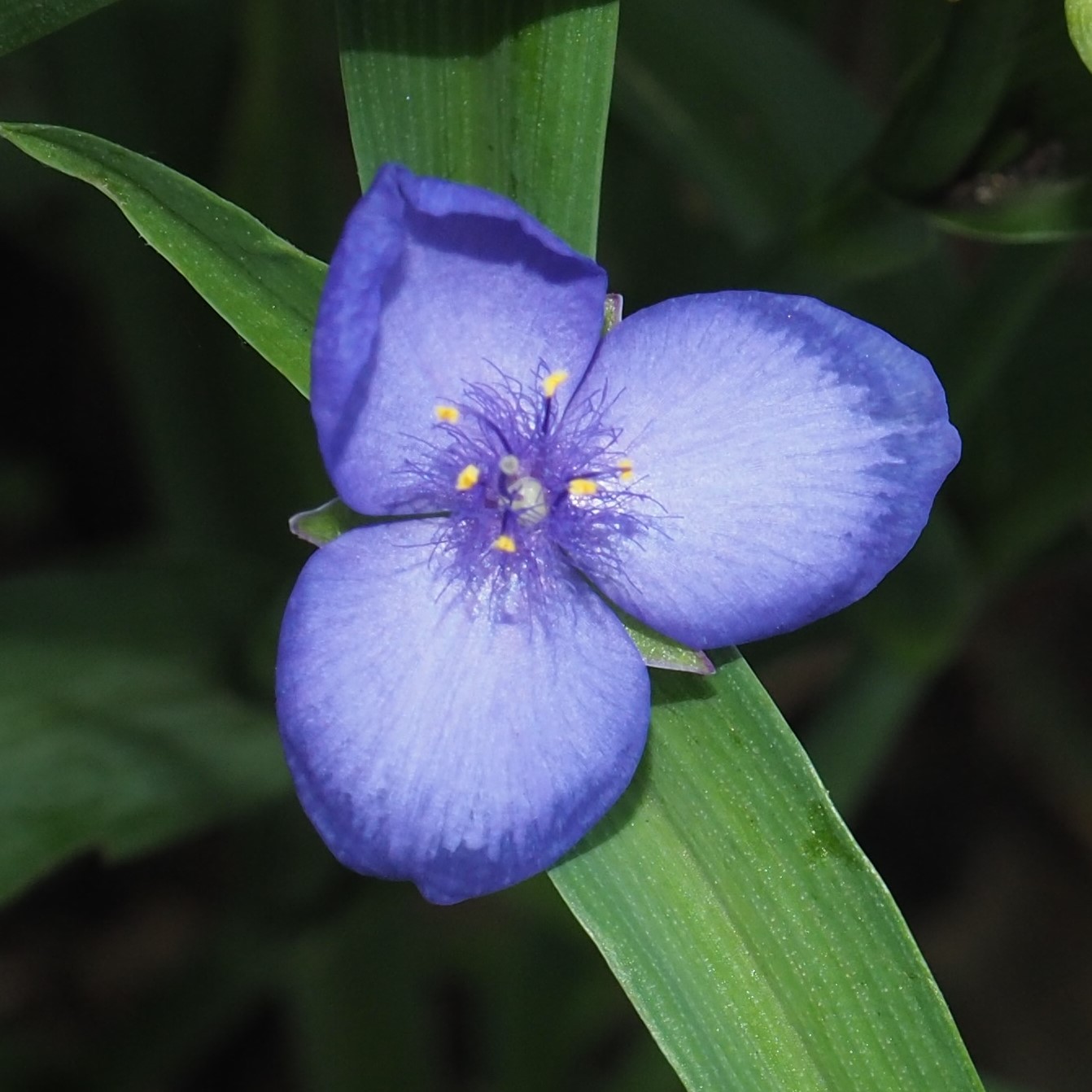
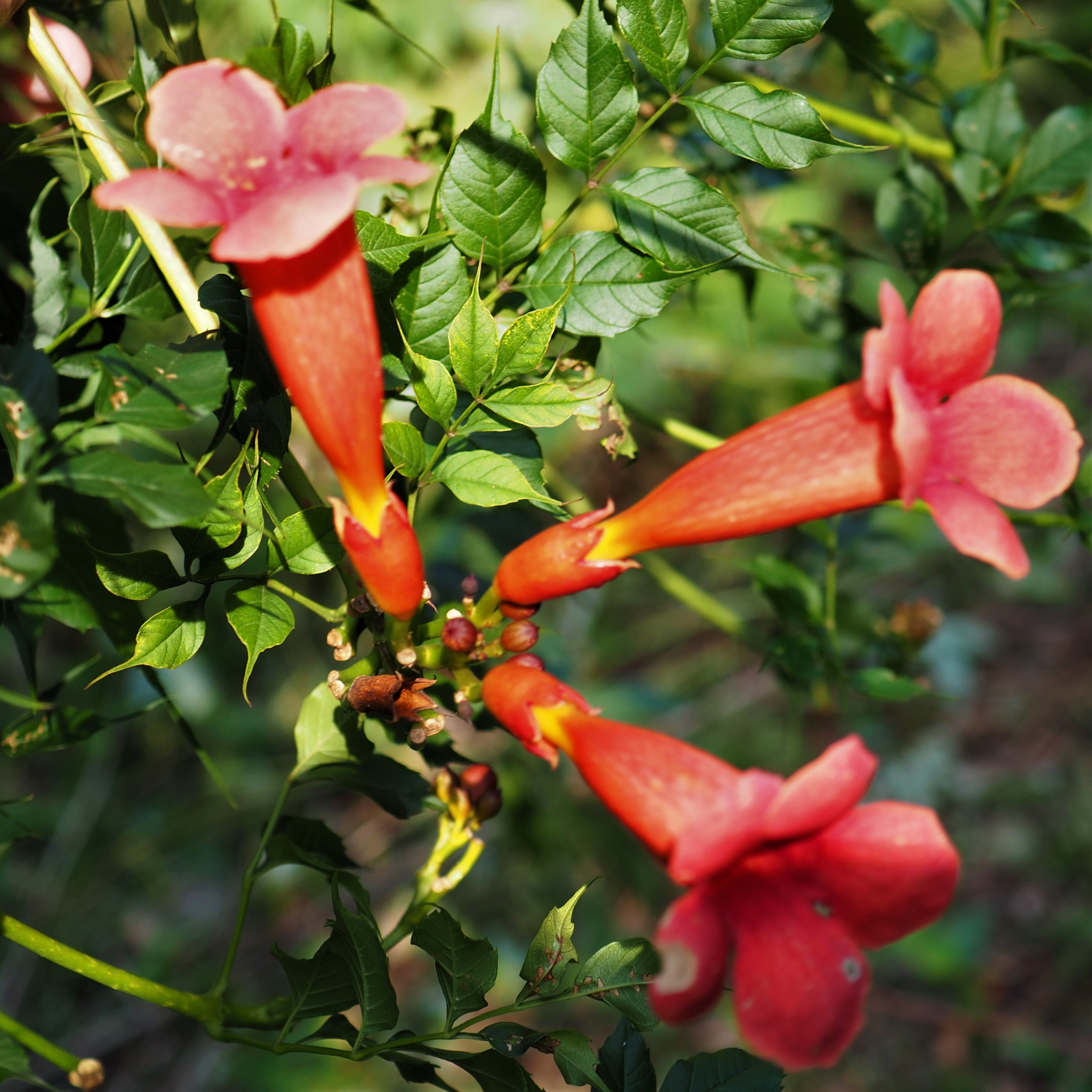
Remember that there is information in the name of the file for each image. You can see it by mousing over the
image - look at the lower left of the screen. Or you can click on the image to get to the (usually) larger image.
Then the info is displayed in the address line above. Sometimes the second click will actually display a
different view of the original image.
The Ants avoid the Shop siding until the sun is not blasting it. The South Wall is hot to the touch until Noon, and even part of the Afternoon. But here is a brave Eastern Black Carpenter Ant. Second is a Smaller Carpenter Ant (I always go by that red thorax). Third is one of them with a huge Moth prey item.
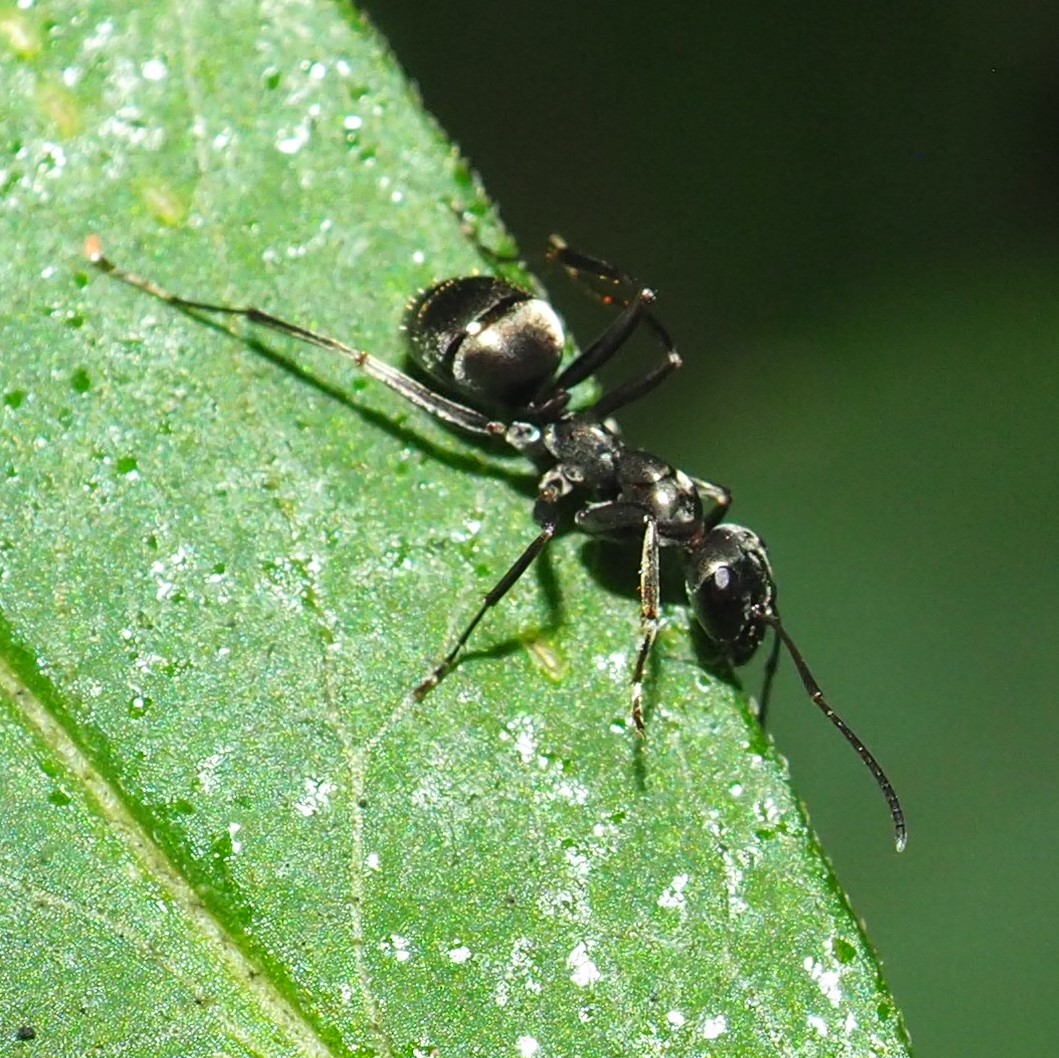
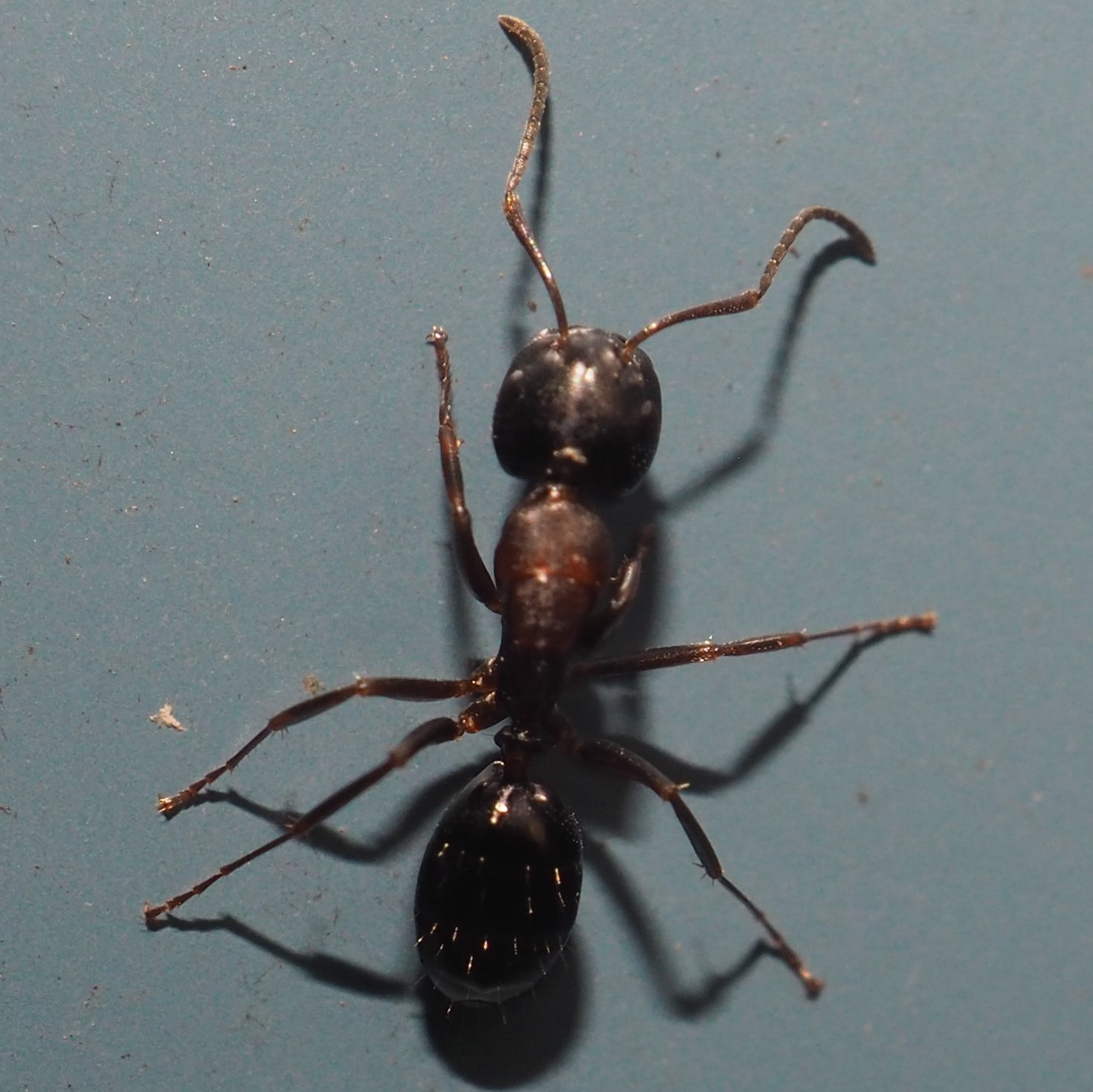
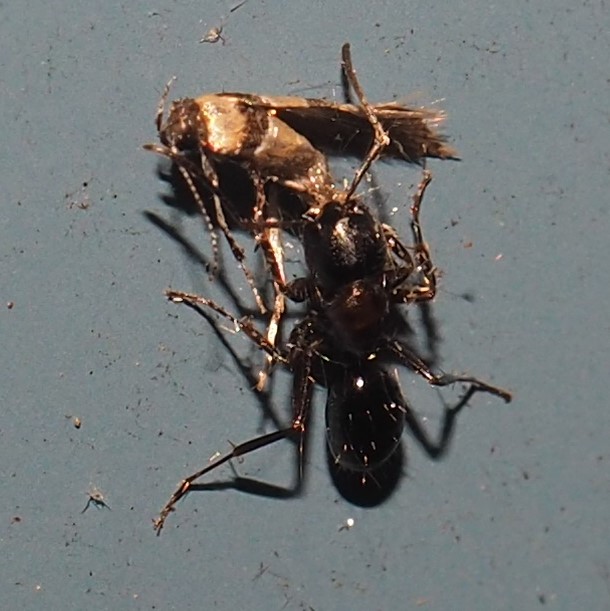
Here is a picture of a Smaller Carpenter Ant who has found a Fly which seems to have been wrapped by a Spider The Ant wants to carry the Fly off to its nest but the Spider silk has fastened the Fly to the Wall. Try as she may, the Ant just cannot seem to get a good enough grip on the Fly so that she can move it.

The Barklice are beginning to work on the North Wall again. The Ectopsocus meridionalis are especially busy laying multiple piles of eggs. I've mentioned this before, but you might wonder why I never show any mating scenes involving this species. Well, as my friend and Psocid psex expert exlained, the females are parthenogenetic, that meaning they are capable of producing fine eggs without ever having got into the back seat of a male's old car.
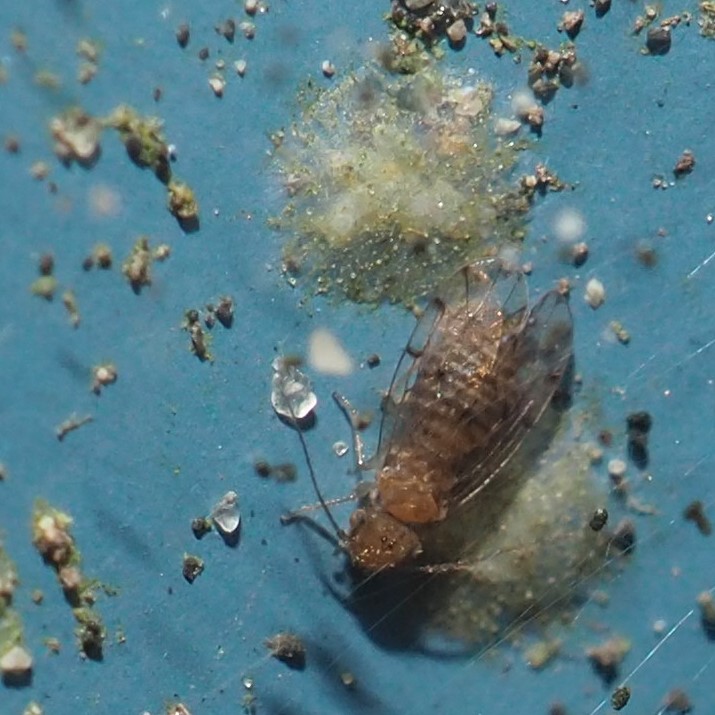
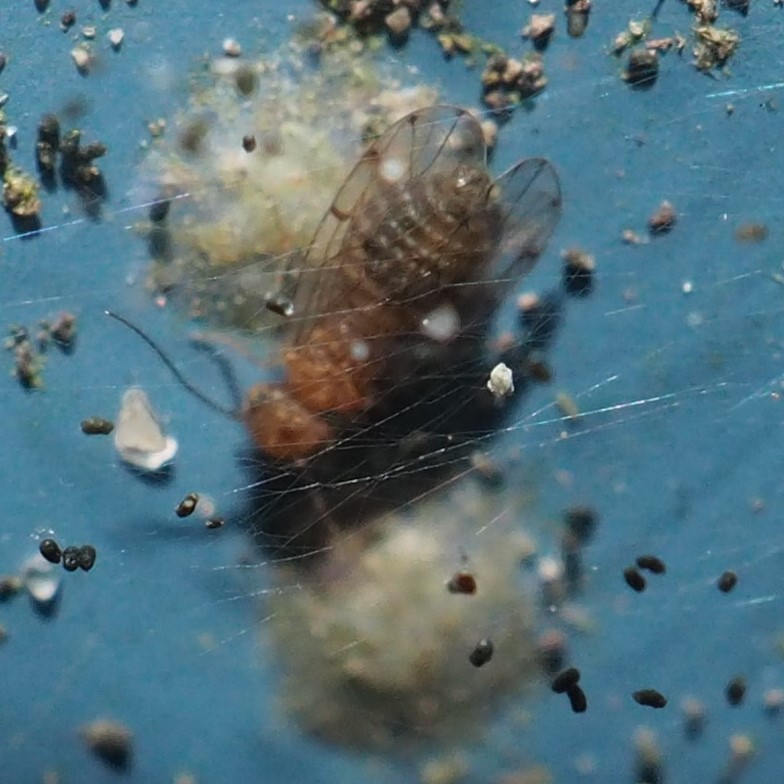
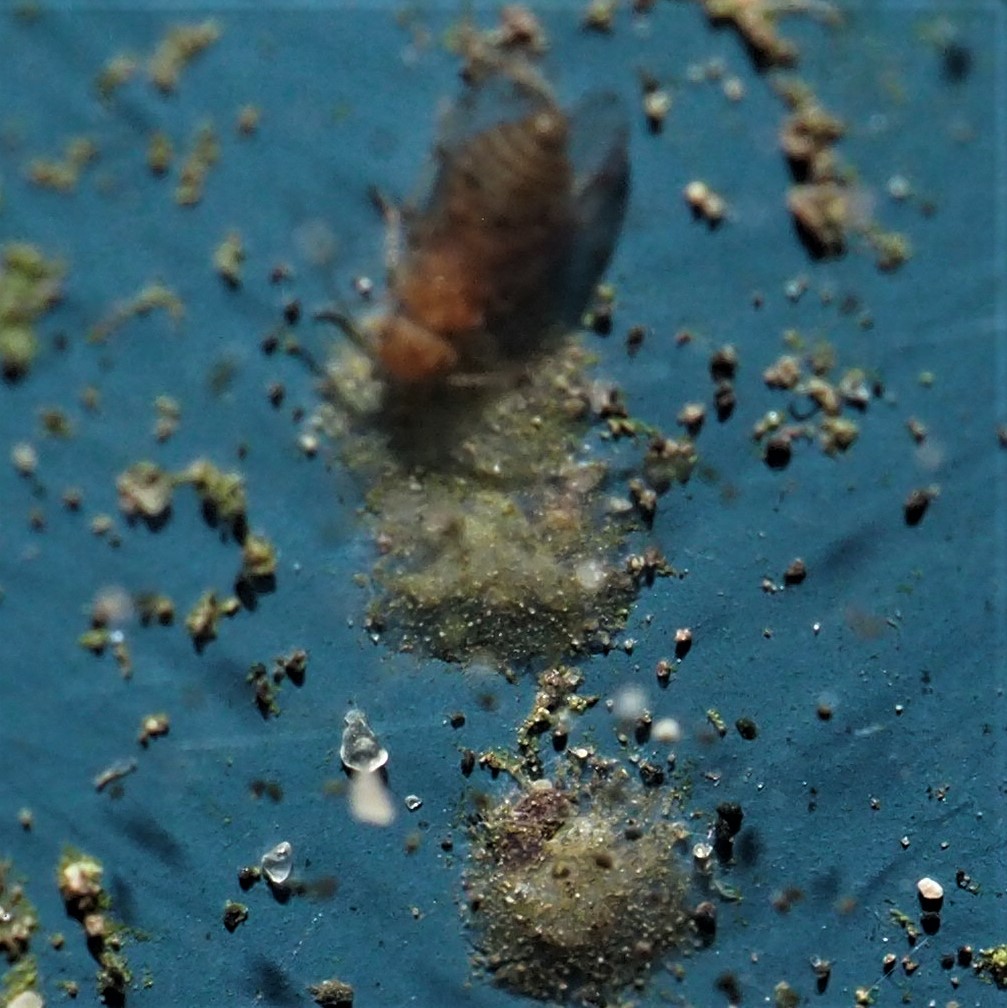
Here is a picture of two E. meridionalis nymphs on August 2, and then in about the same scene, on August 4, a newly-moulted adult and the nymph. Actually, the new adult probably emerged on August 3, but her wings are still almost transparent.
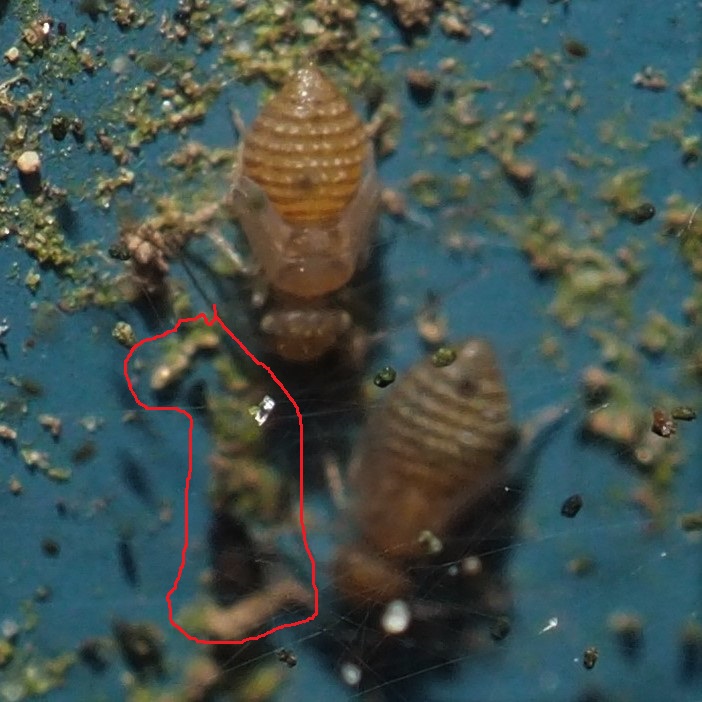
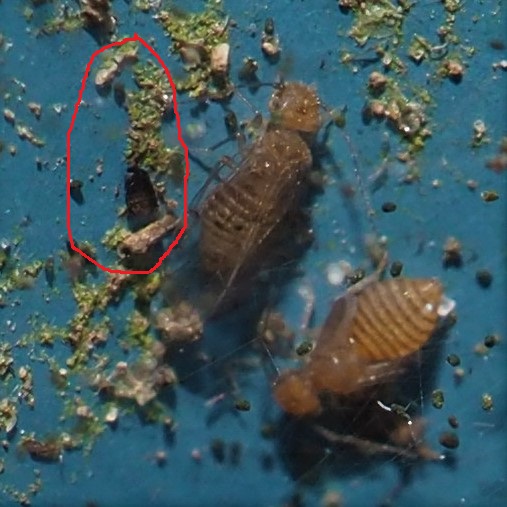 Last week we saw the orangeish Barklouse eggs on North 2, and then those eggs mostly hatched (picture 1). Some have left the scene in this picture taken on August 2. But I'm sure that we have discovered the match between the orangeish eggs and the baby P. corruptus. Here is a nice female.
Last week we saw the orangeish Barklouse eggs on North 2, and then those eggs mostly hatched (picture 1). Some have left the scene in this picture taken on August 2. But I'm sure that we have discovered the match between the orangeish eggs and the baby P. corruptus. Here is a nice female.
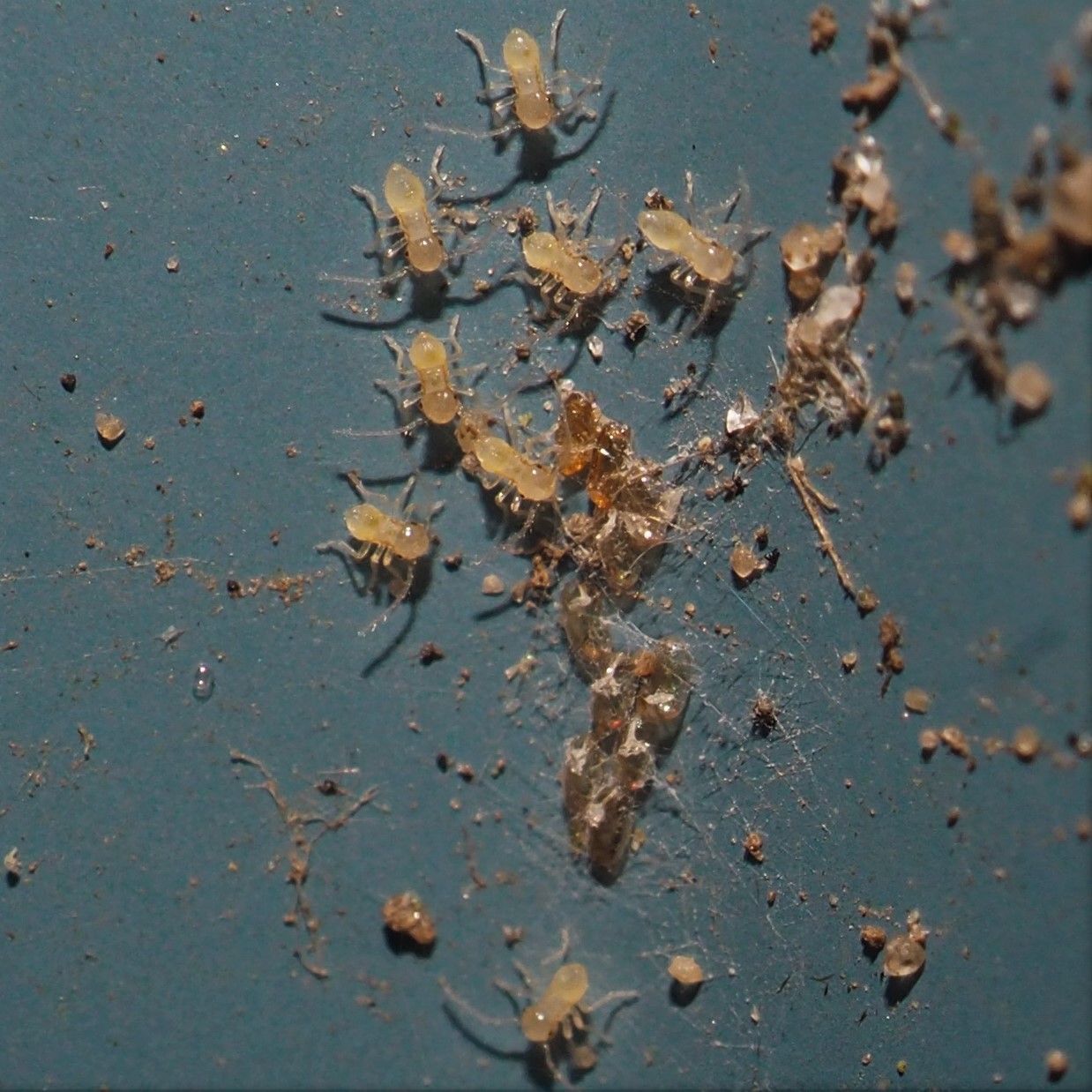
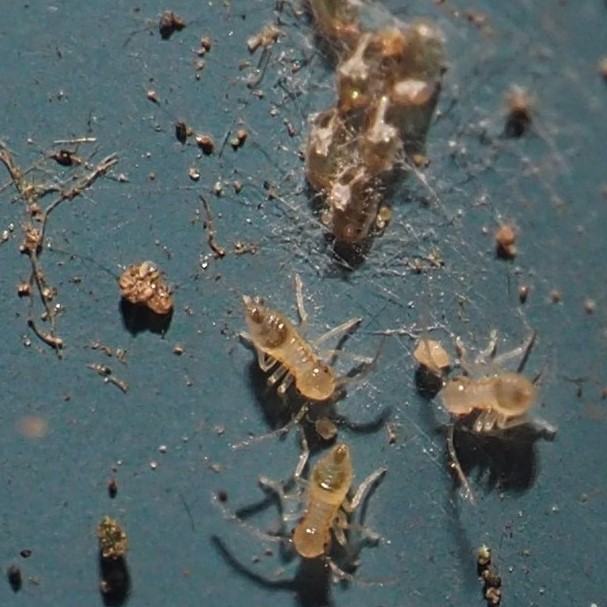
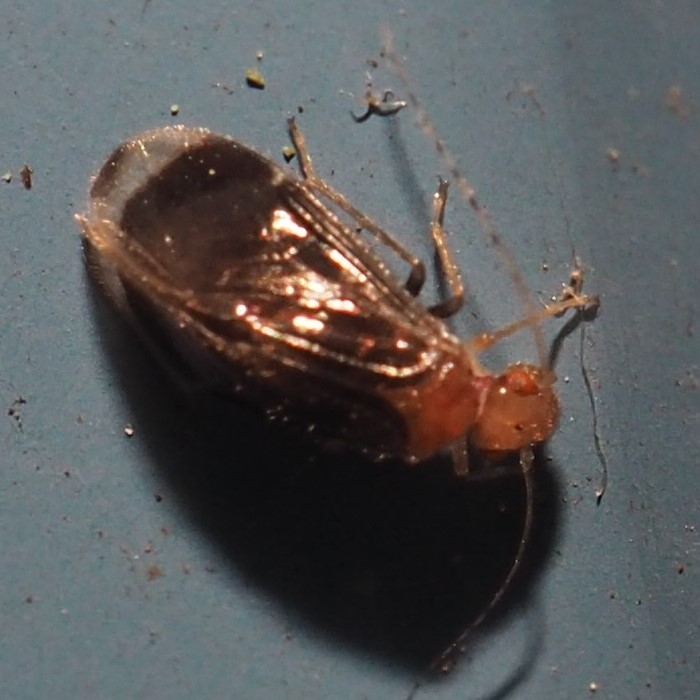
On August 1 last week we saw this clutch of different-looking eggs on North 16. I must have slept through the scene, but in picture 2 we can see that all but two eggs have hatched on August 2. I promised myself that I would watch until those two eggs have hatched. But I missed the blessed event! So we have a puzzle to solve later!

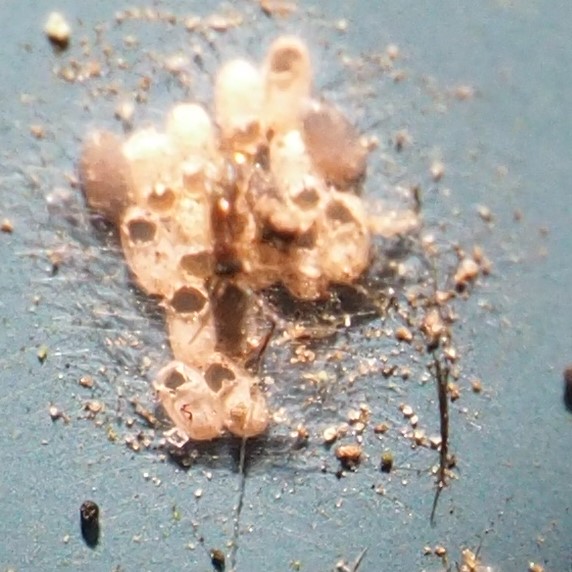
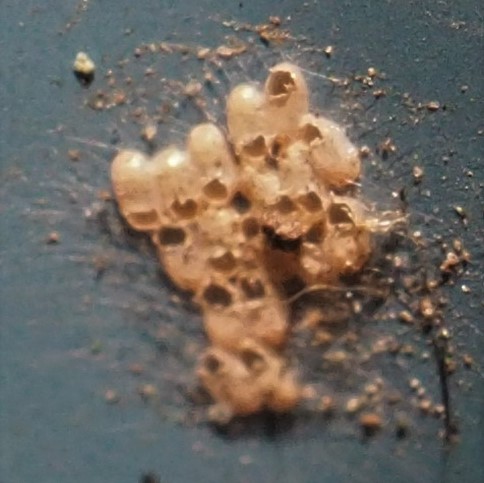
I promised to tell you how I confused M. novaescotiae and M. purus two weeks ago. Diane says that M. novaescotiae has two dots on the vertex (the top of the head). I'll tell you what I think that means. Here is M. purus. At the back of the head there are two "dots" or "marks". Then just above those marks there is ONE little dot. On the second picture, there are two dots where the other had one. There are other things that distinguish the two species, but I think this is the simplest way to tell them apart.

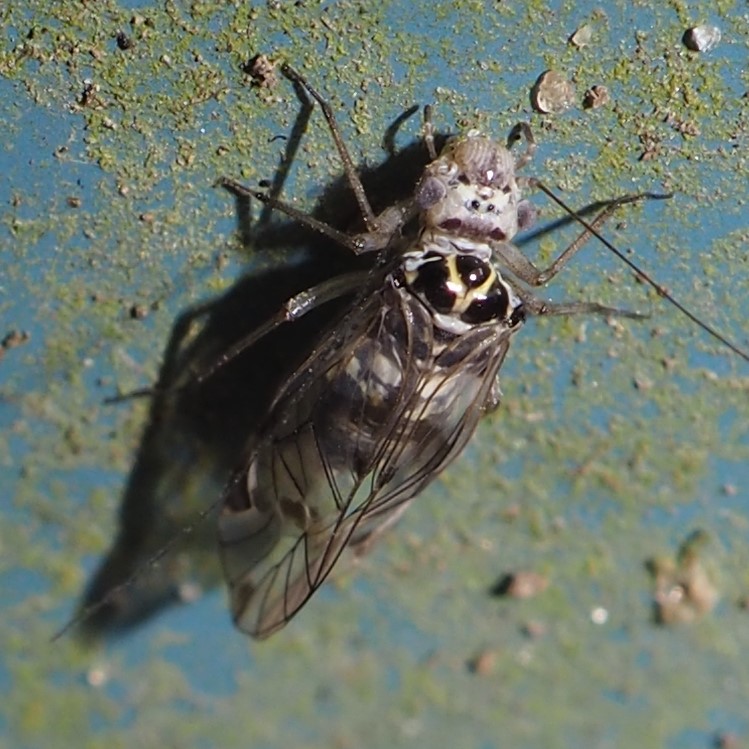
Here are some other nymphs. These two might be early nymphs of a Valenzuela barklouse.
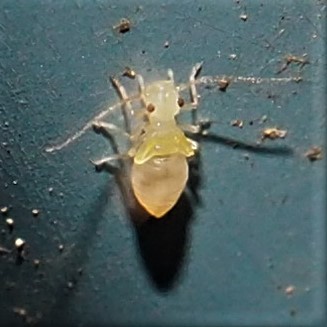
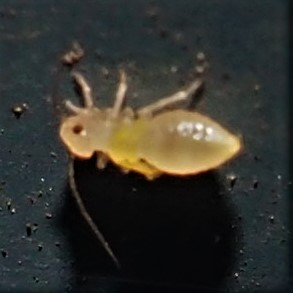
It has been a lovely couple of weeks for the Pure Green Sweat Bees.
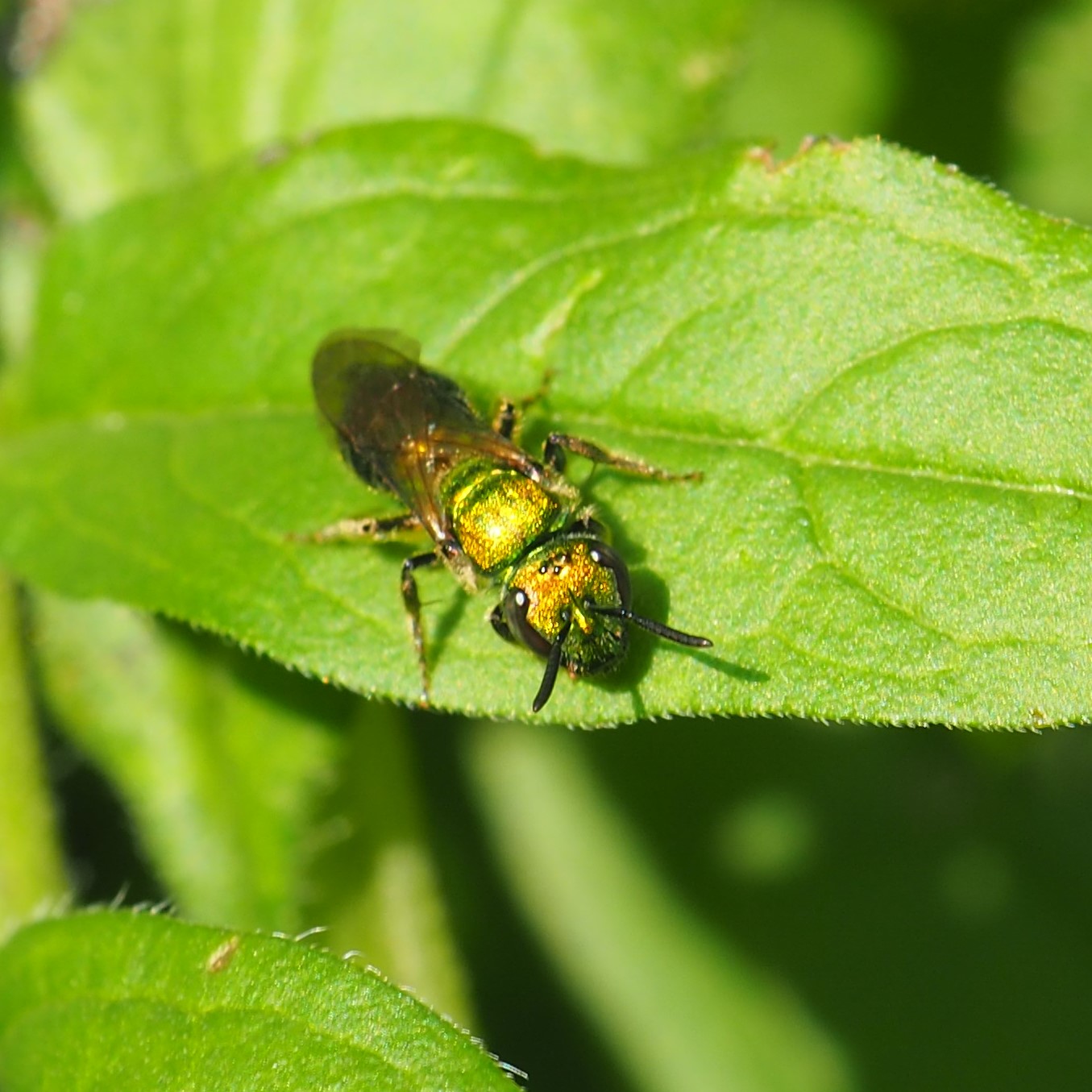
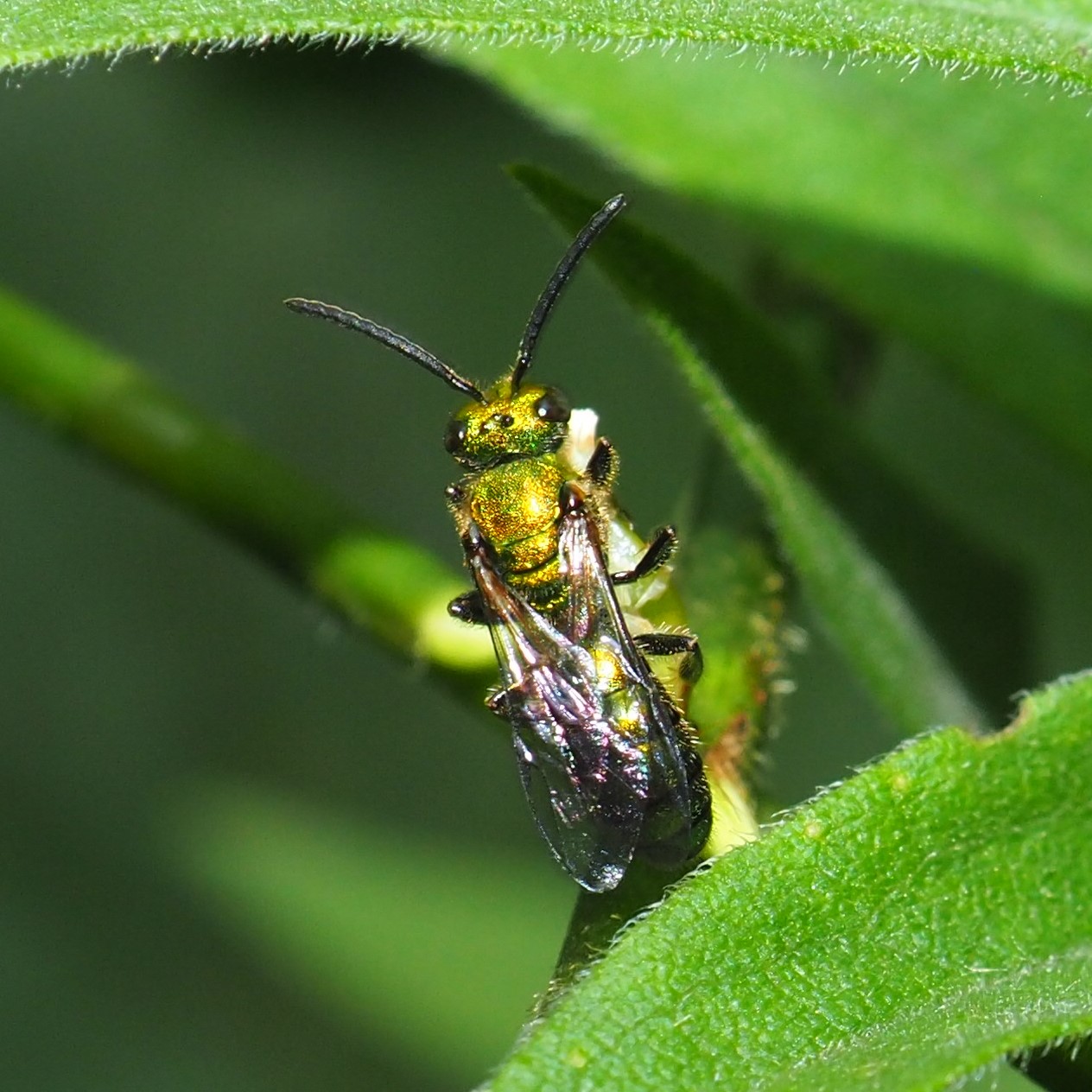
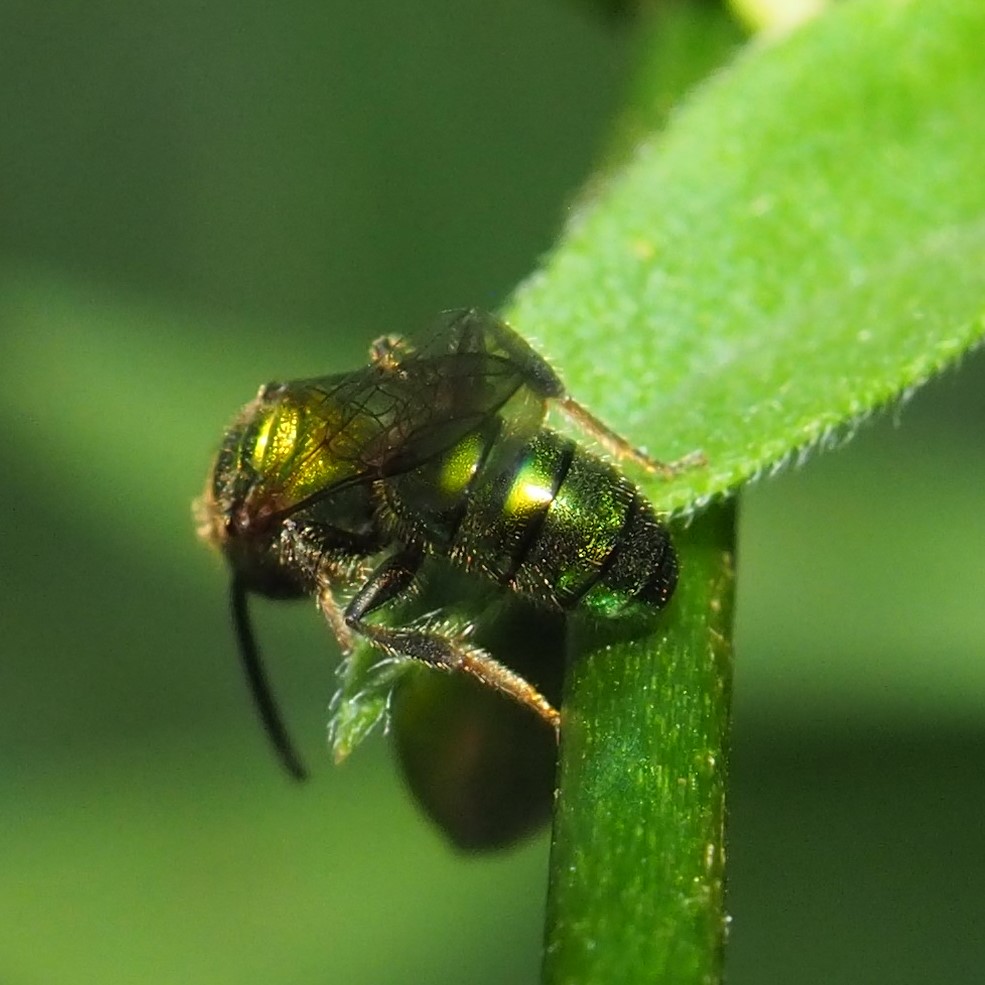
Let's look at the Beetles. This little black Beetle with a red spot on each side is still unidentified. So is this one that seems to be some kind of Rove Beetle. Then here are a couple of little Weevils, the last of which was found on the edge of Spooky's milk dish.
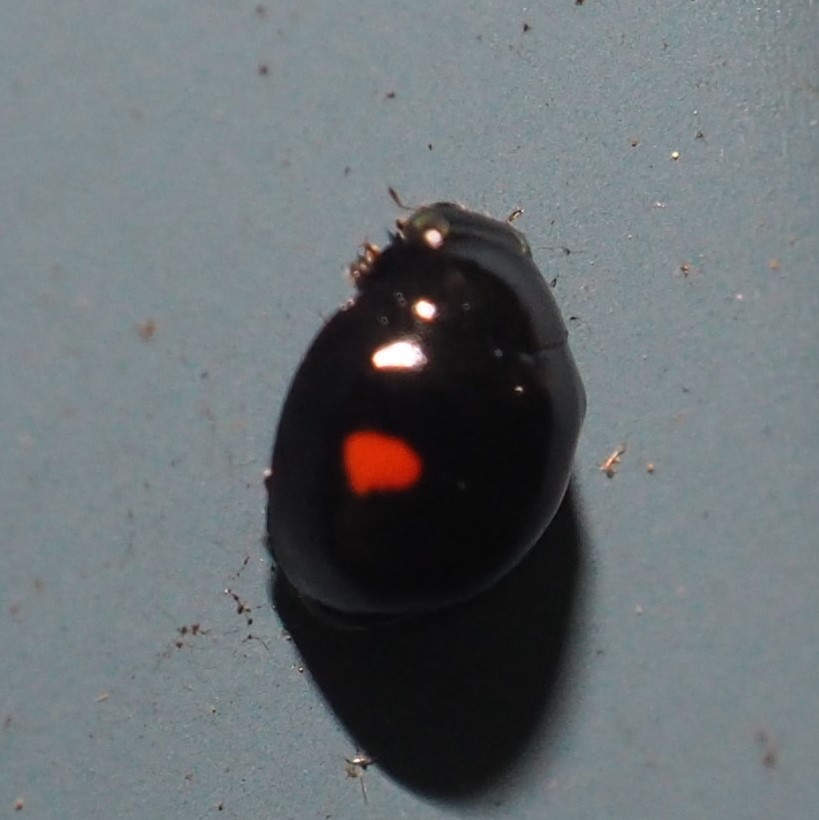 ,
,
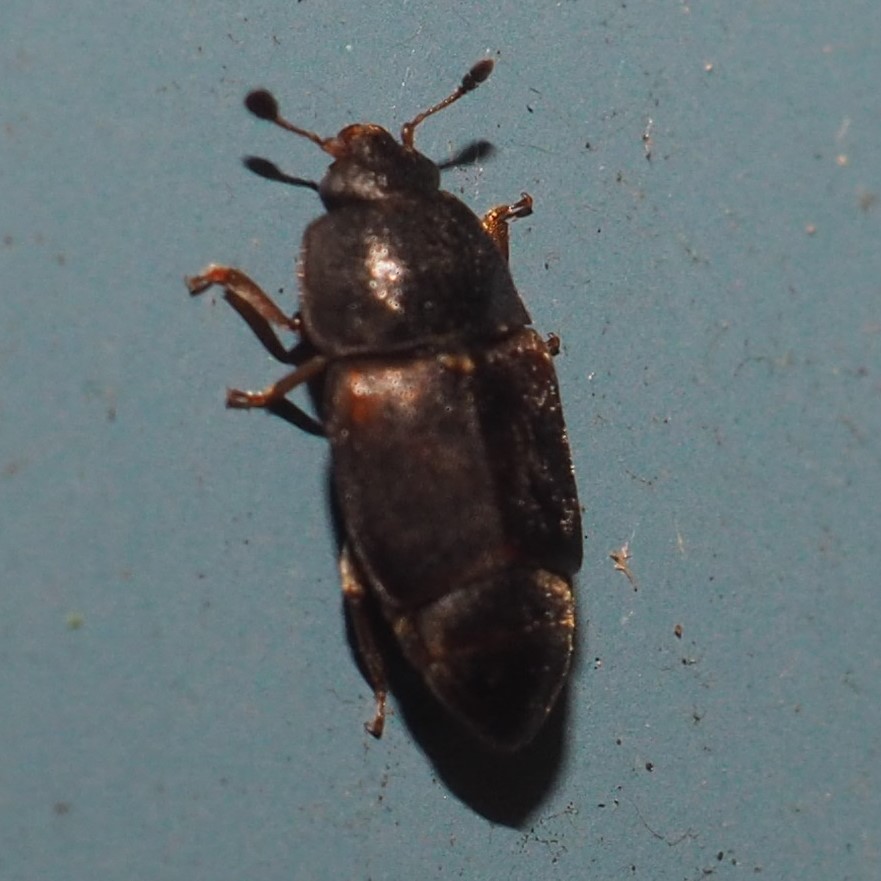
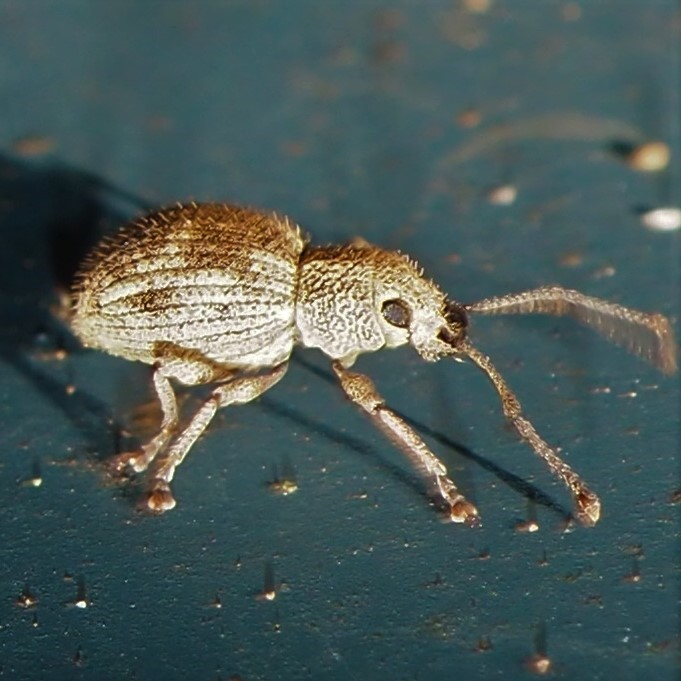

Those little Zelus luridus (Pale-green Assassin Bugs) are really spreading out from their little round nurseries, where they were hatching a couple of weeks ago (pictures 1 and 2). Meanwhile, the Leafhoppers show up on the Wall of Fame when it is cool enough to sit on it safely. Here is the Japanese Maple Leafhopper.
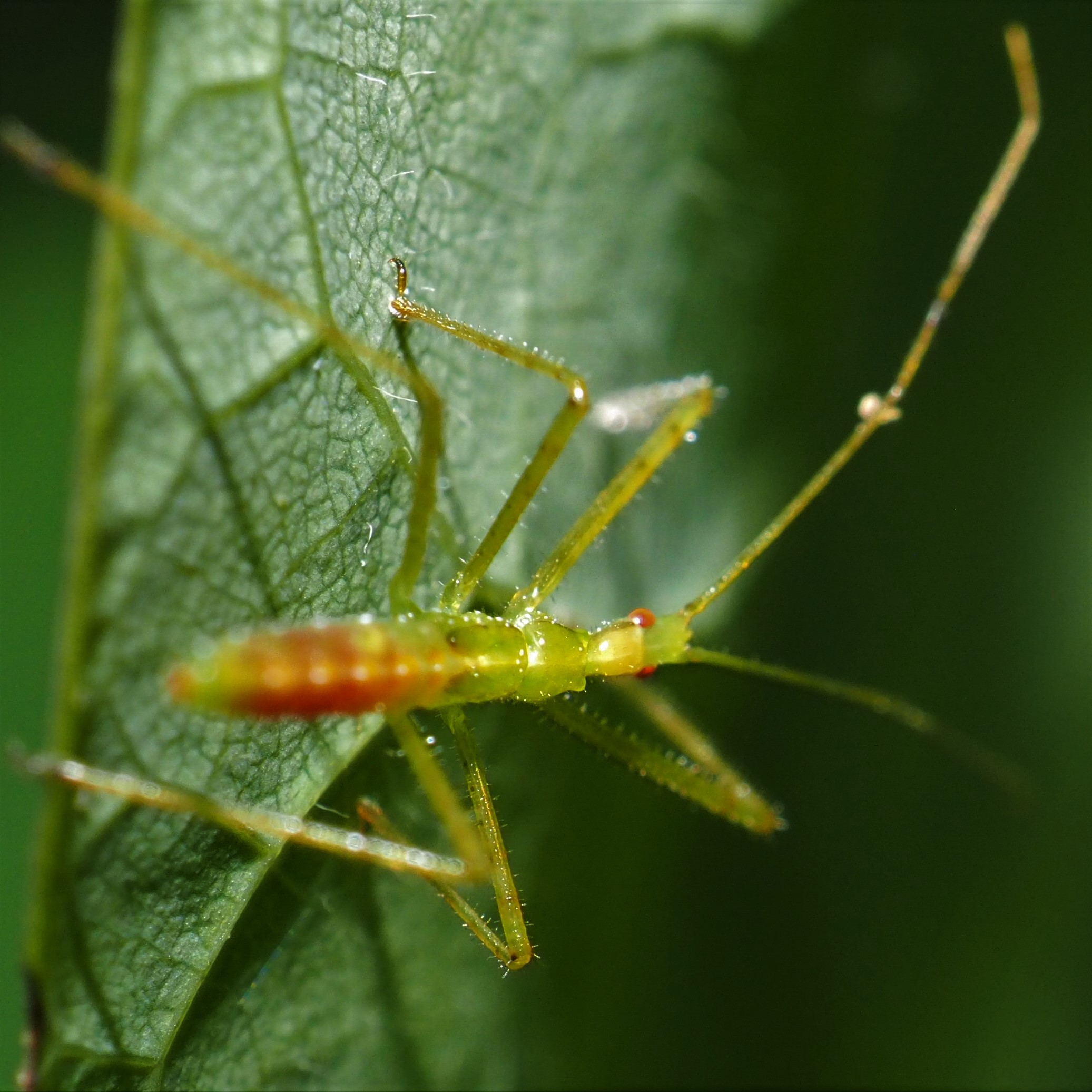
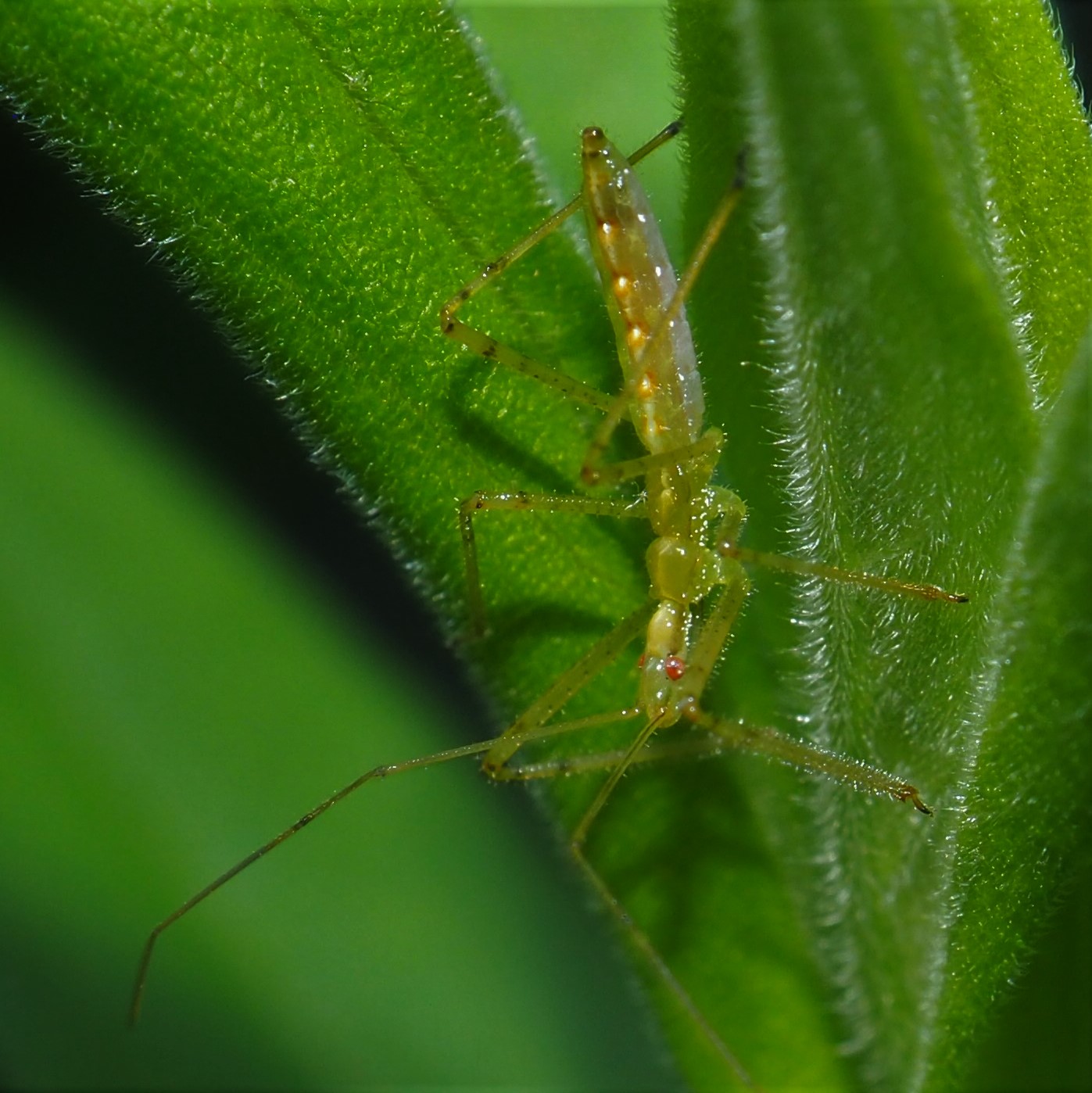

After the debut of the Coppery Leafhopper (Jikradia olitoria) last week, this week we saw one of its nymphs. Then come two different members of genus Scaphoideus.
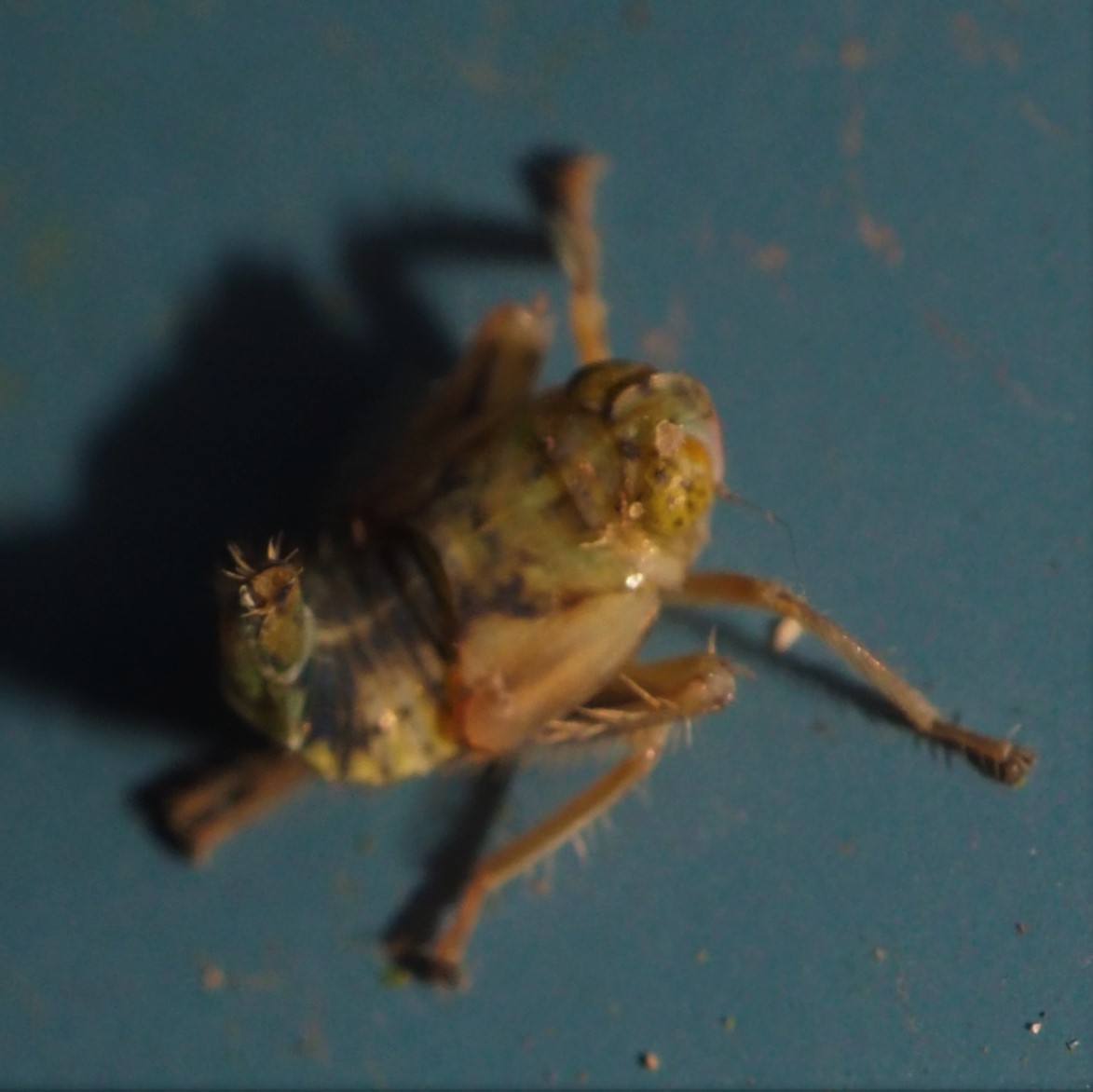
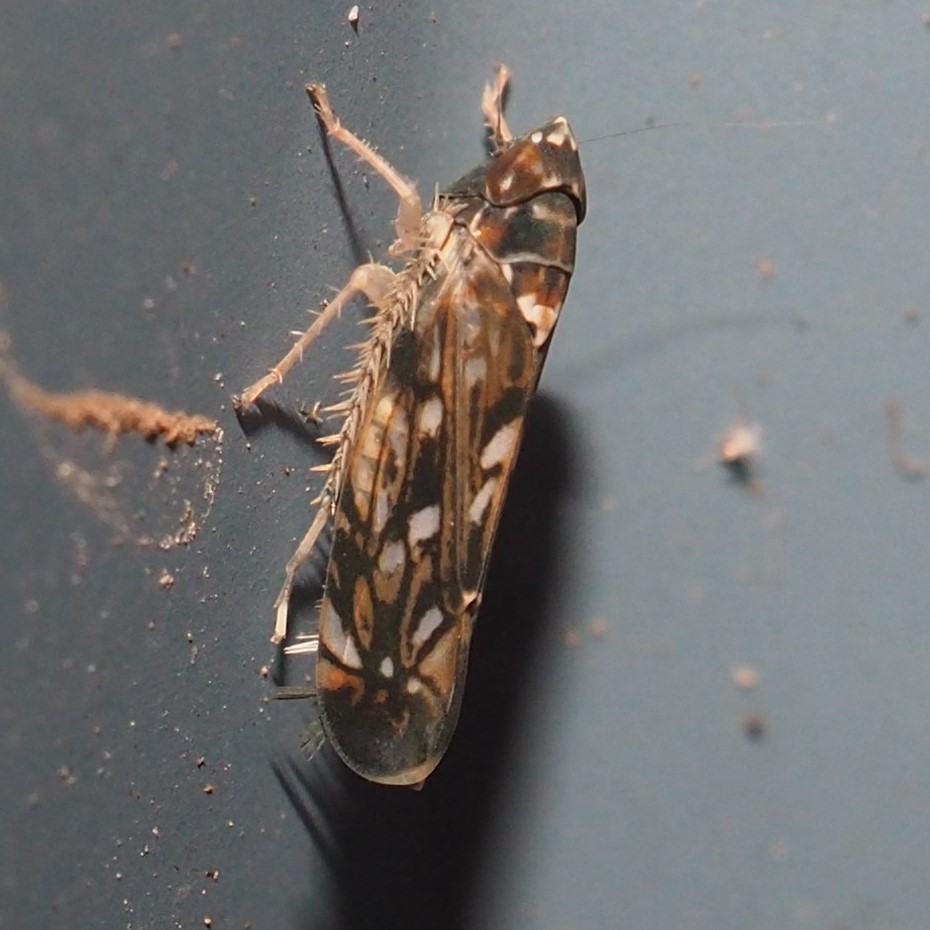
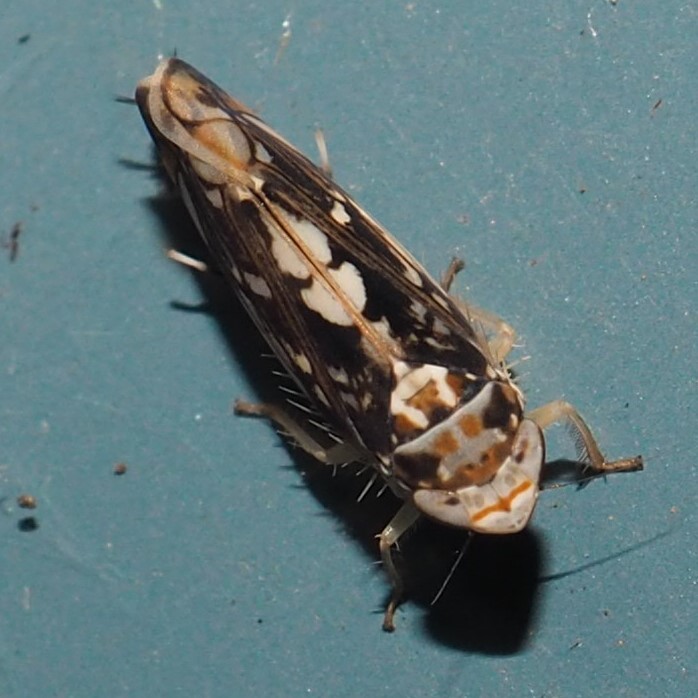
This first Leafhopper is of Scaphoideus obtusus. Next is a member of the genus Osbornellus. Third is from genus Idiocerus, and a spider has claimed it for its supper. That about does it for the Hoppers this week. But we did have one Spittle Bug, that is the Alder Spittle Bug, which turned out to be fairly common this year.

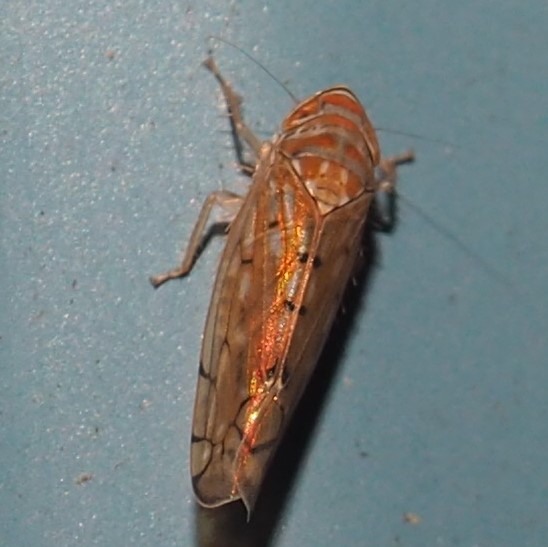
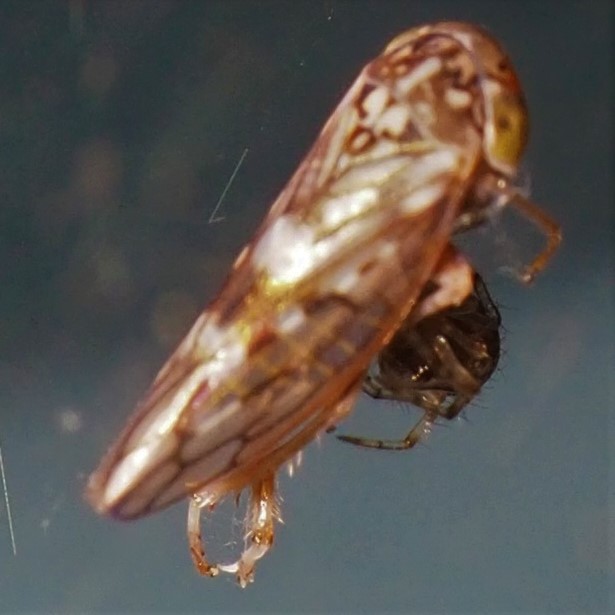

Oh My. I believe this group shows two different creatures. They may be Cacopsylla or maybe Psyllids. To me they seem like members of the Psyllid genus Trioza. One has redder eyes than the other - this may be a sex difference.
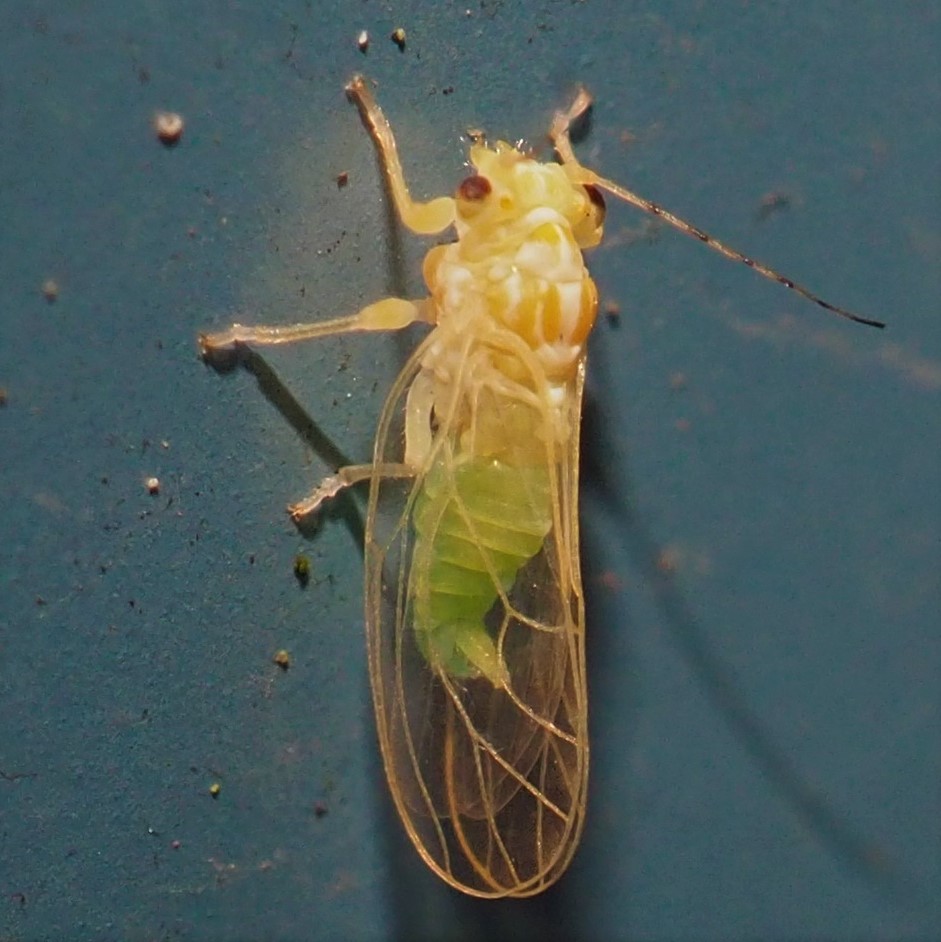
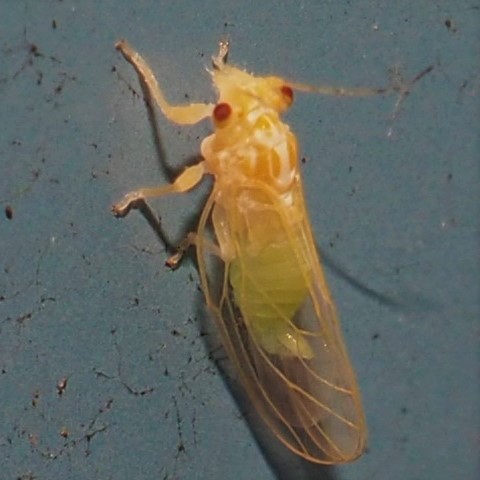
Let's see now, how about some Plant Bugs? I only remember seeing two of them, and they are just recorded as Plant Bugs. Oh wait, the second one is labeled as genus Ceratocapsus.
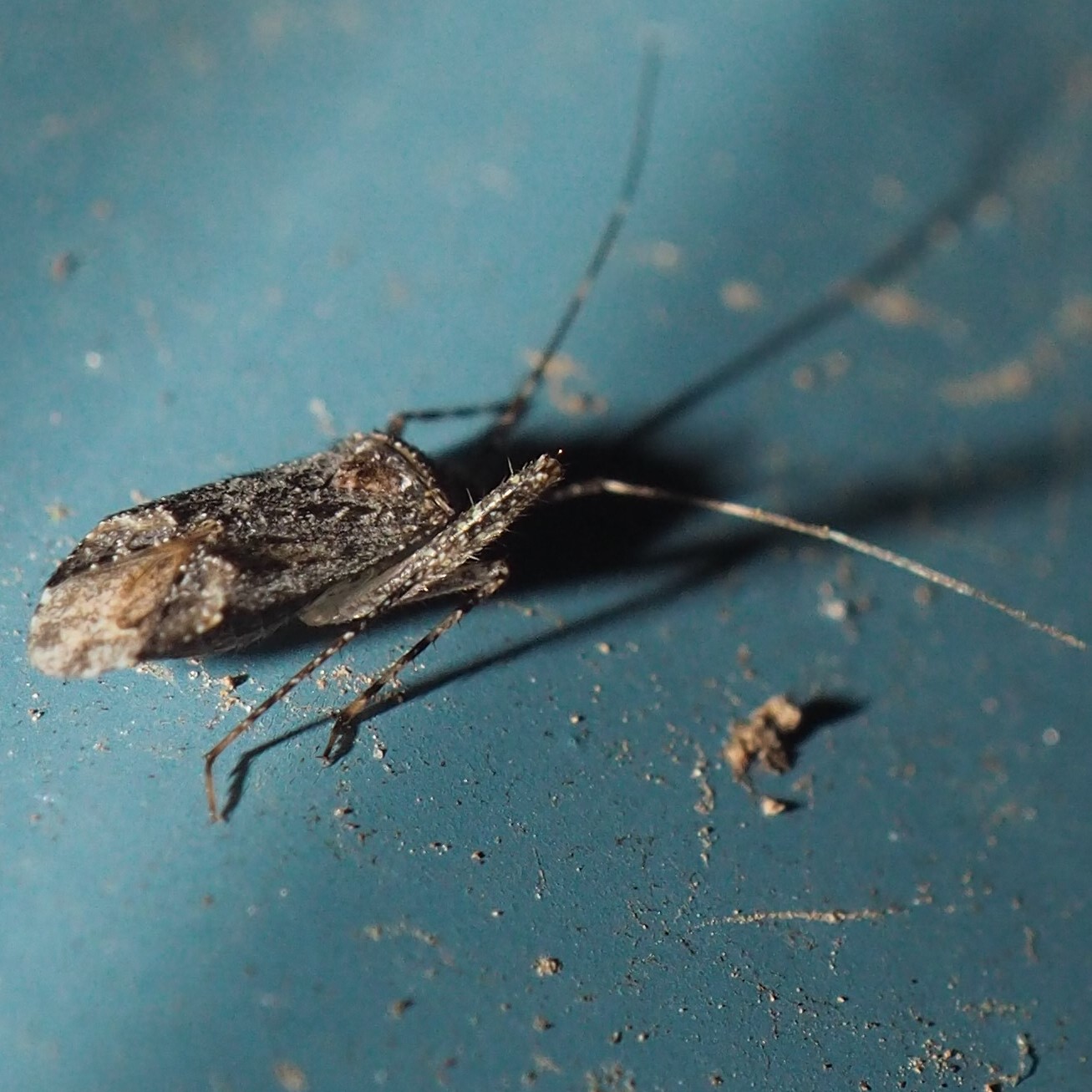
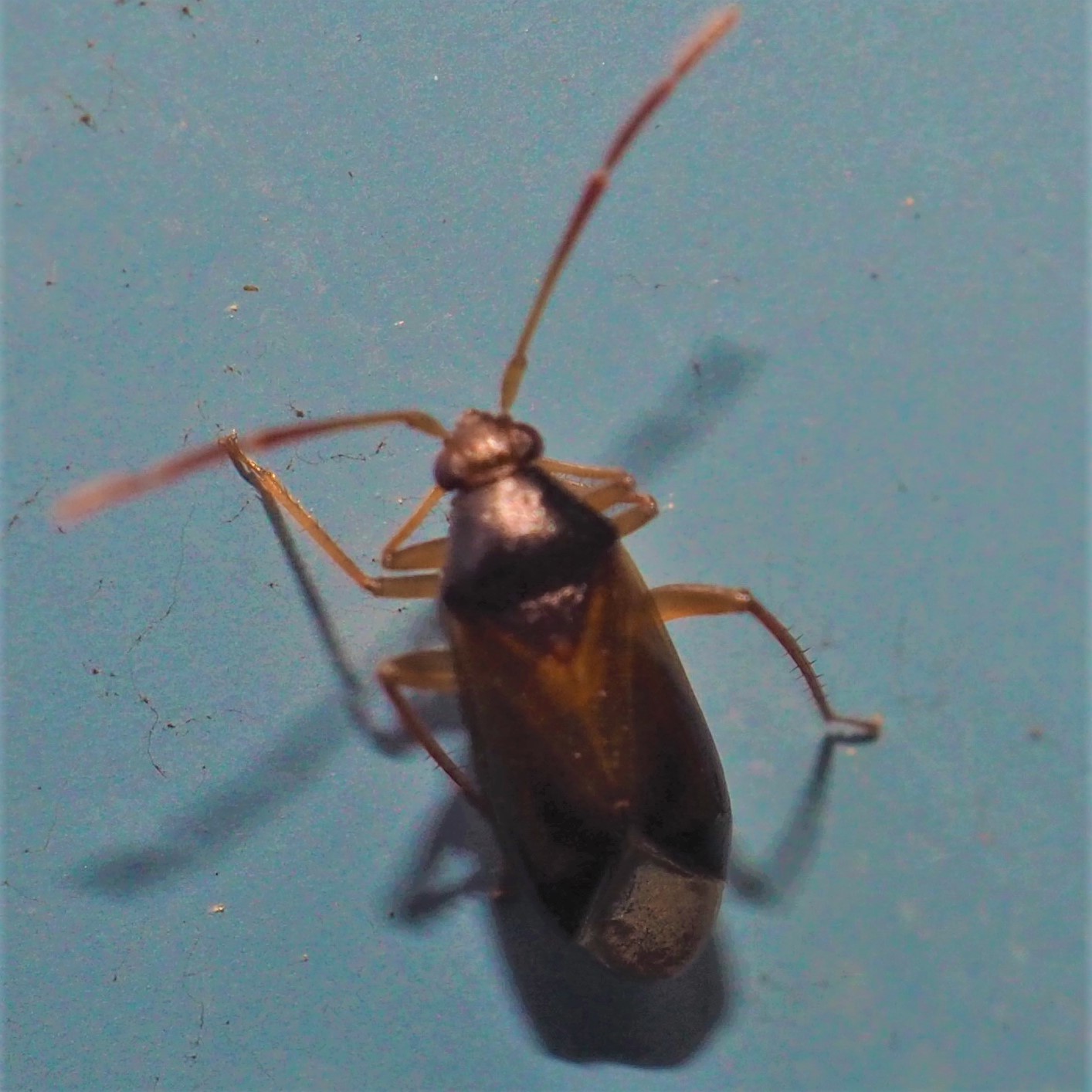
But there were a couple of Stink Bugs. These first two are of genus Dendrocoris. One of the most popular Bugs in that genus is Dendrocoris humeralis, and sure enough, both numbers 1 and 2 are of that species. But third is a different shape, that is, almost round. It is a late instar of Rough Stink Bug, says Andrew Meeds of iNat, and I think it may turn into a Four-humped Stink Bug on its next moult.

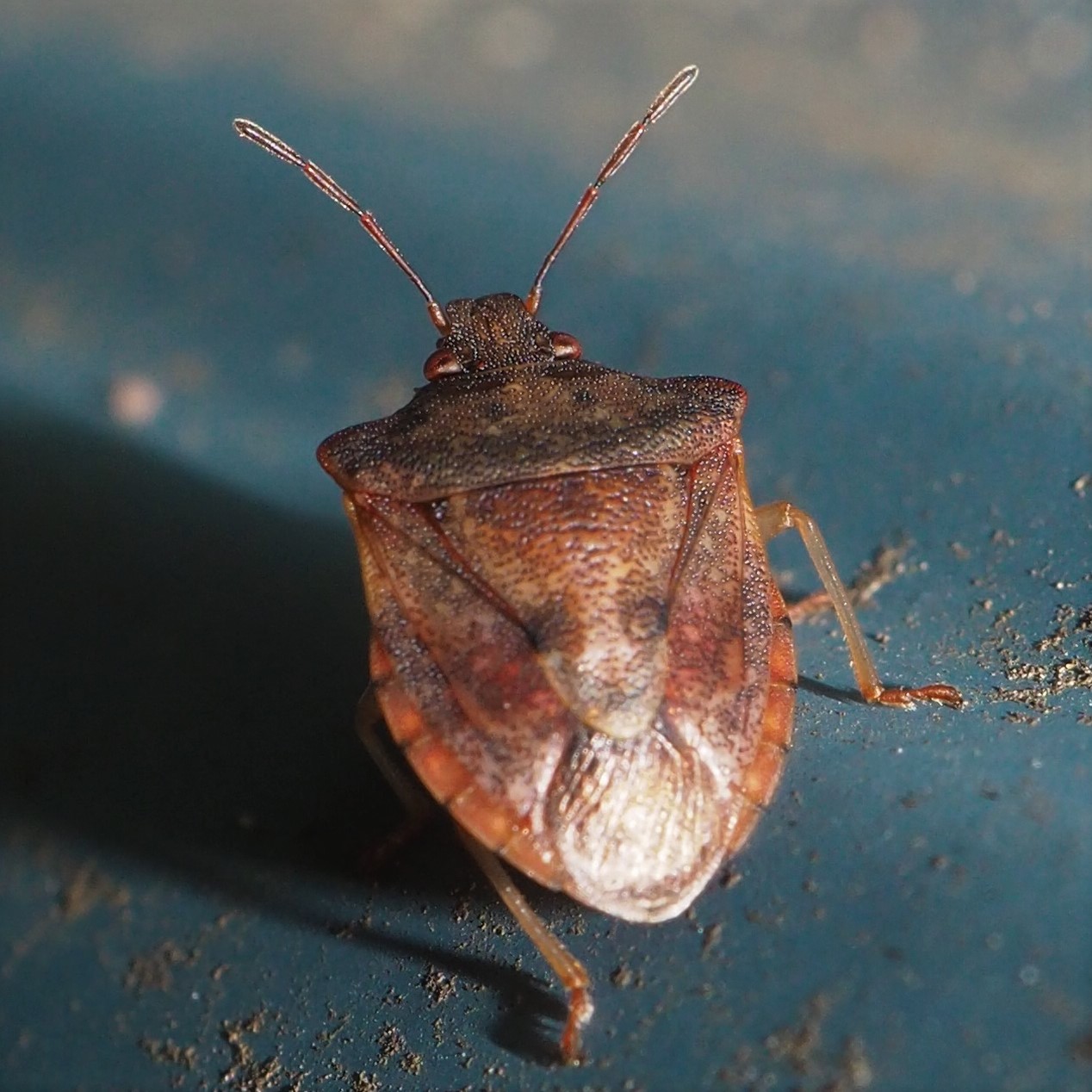

Time for Flies! Here's a nice Crane Fly, followed by a couple of different kinds of Fruit Flies.

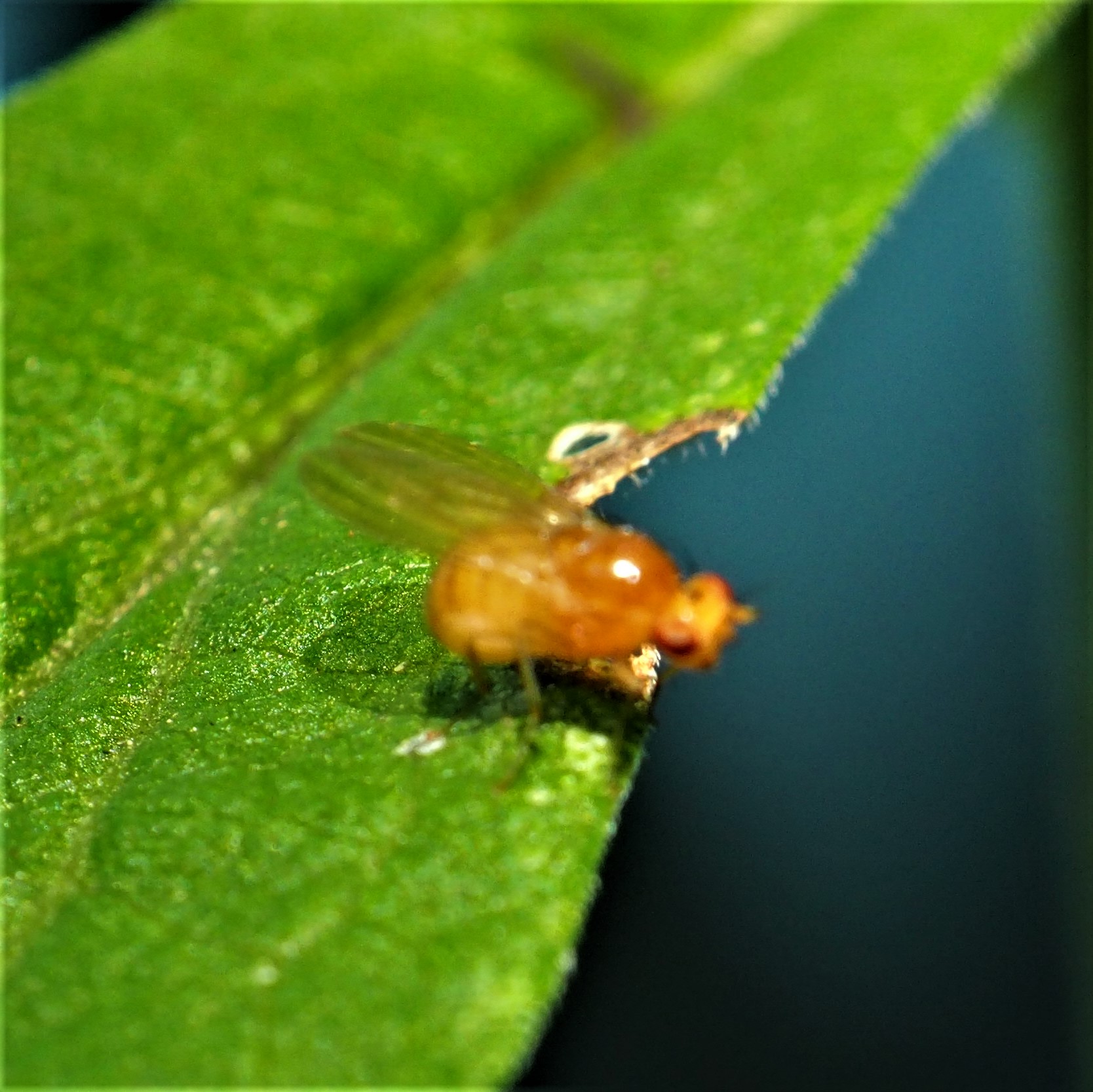
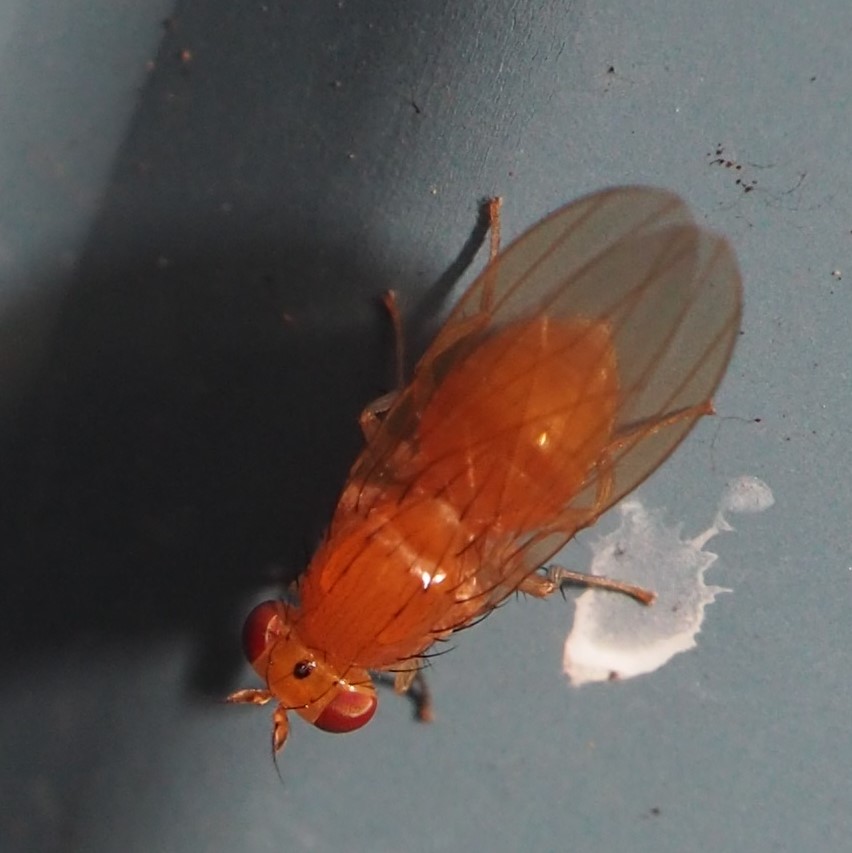
First here is a Bathroom Moth Fly. Then a couple of Mystery Flies.
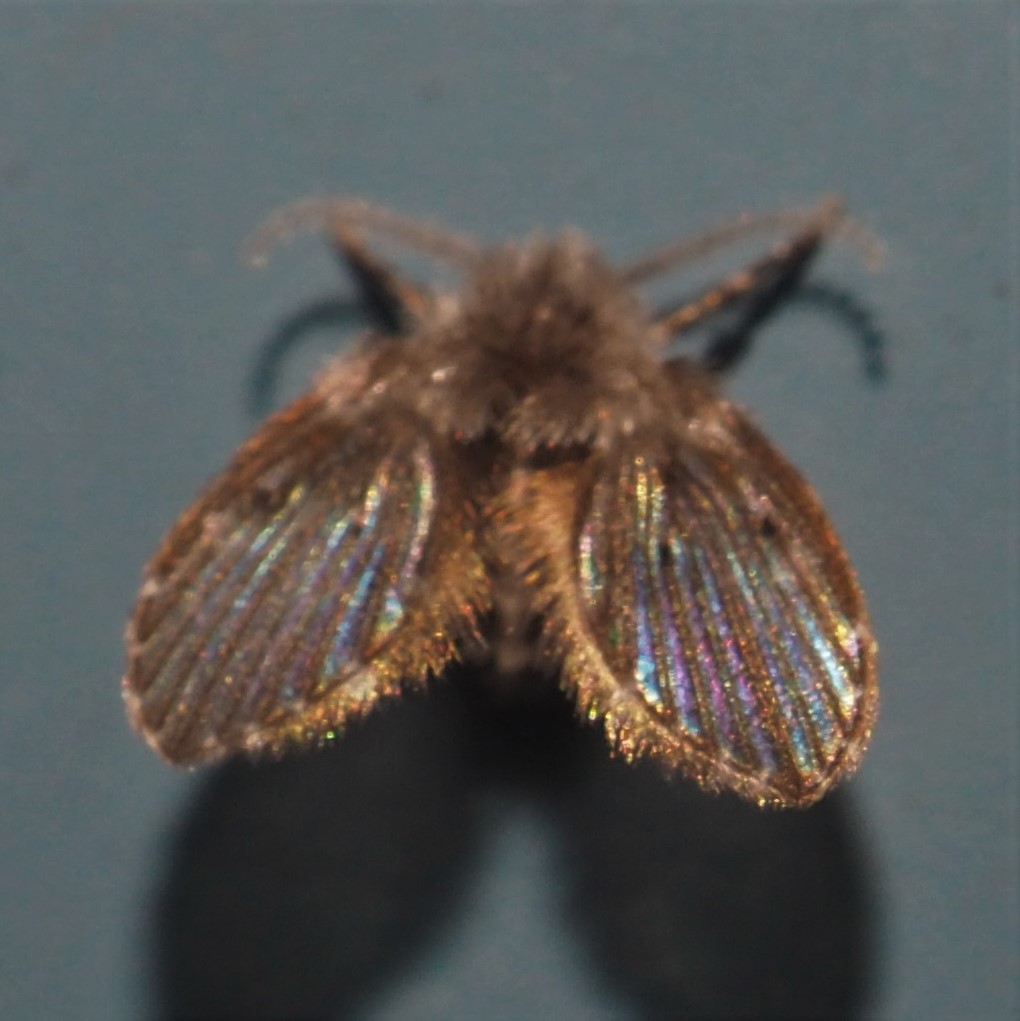
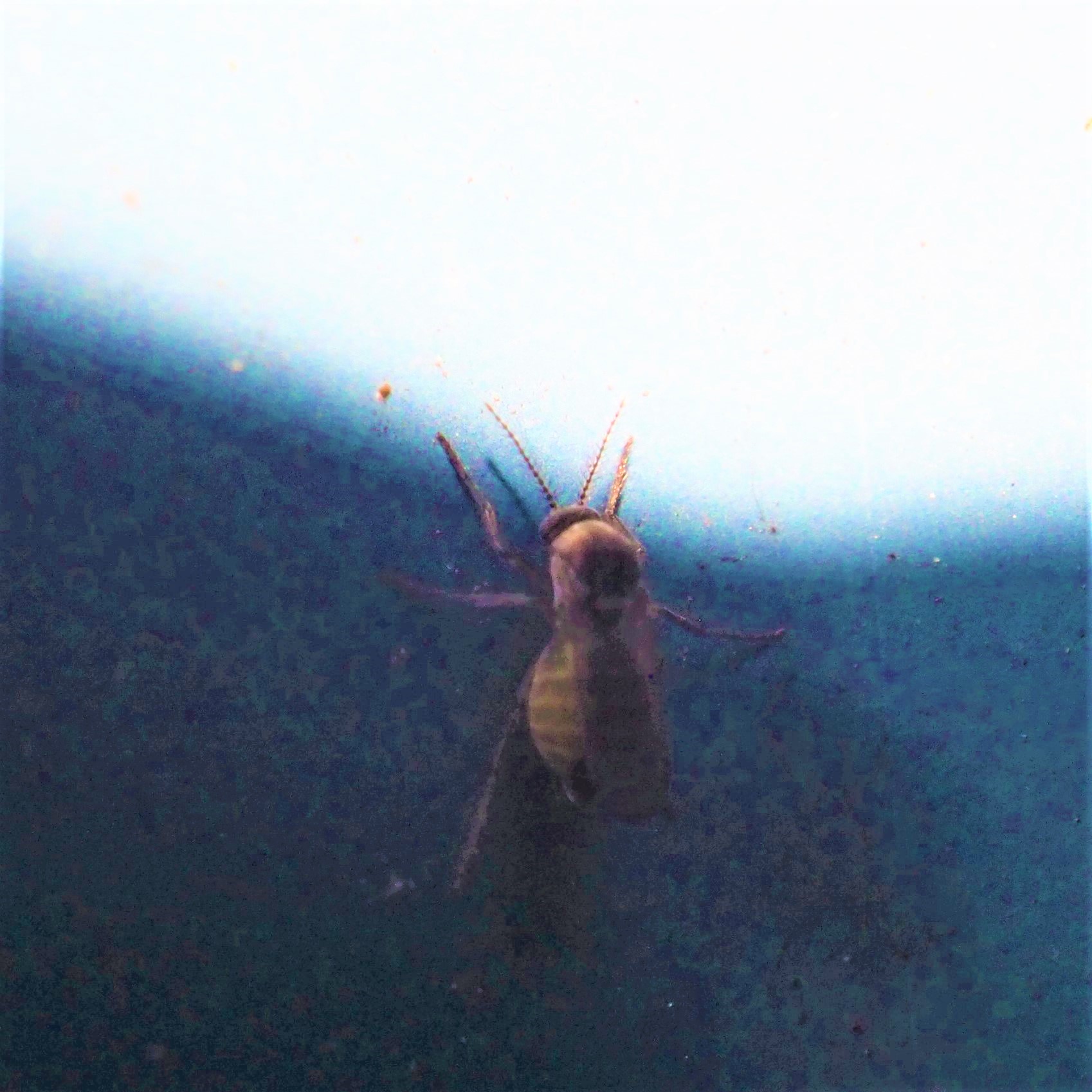
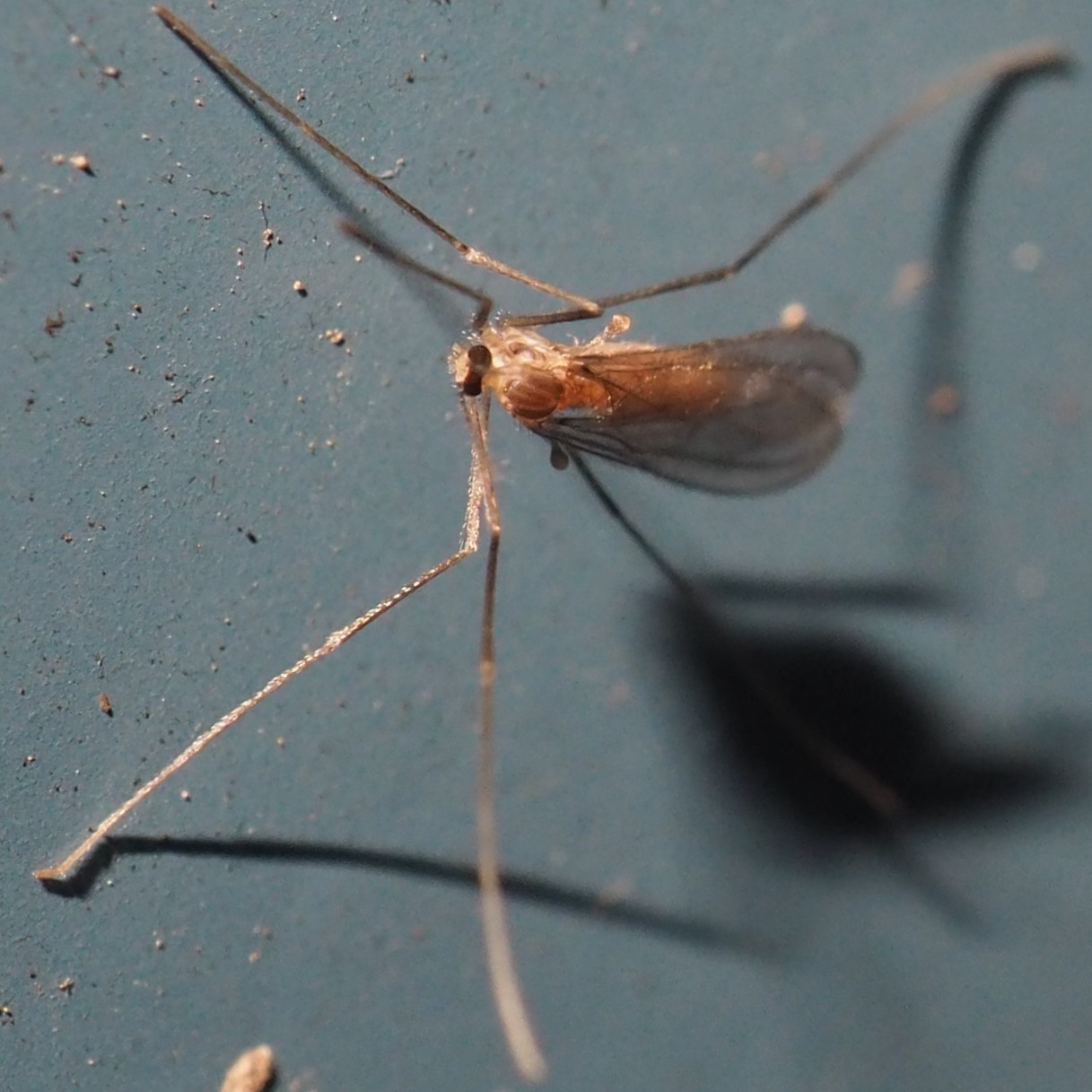
Now the Mosquitoes! Liam Wolff or @ospr3y is one of the Mosquito experts. He had told me that if a Mosquito had spots on its abdomen, it was almost certainly in the genus Anopheles (the Malaria mosquitoes). So this little green-eyed fellow is probably Anopheles, and maybe Anopheles quadrimaculatus. But now there is some conversation about other possibilities. You might enjoy looking at a typical iNat conversation HERE.
This first one is the one they're talking about on iNat. Second is a mystery Mosquito and this is the first time I've seen it. Third may be filling up on blood although i don't see any red in its abdomen.
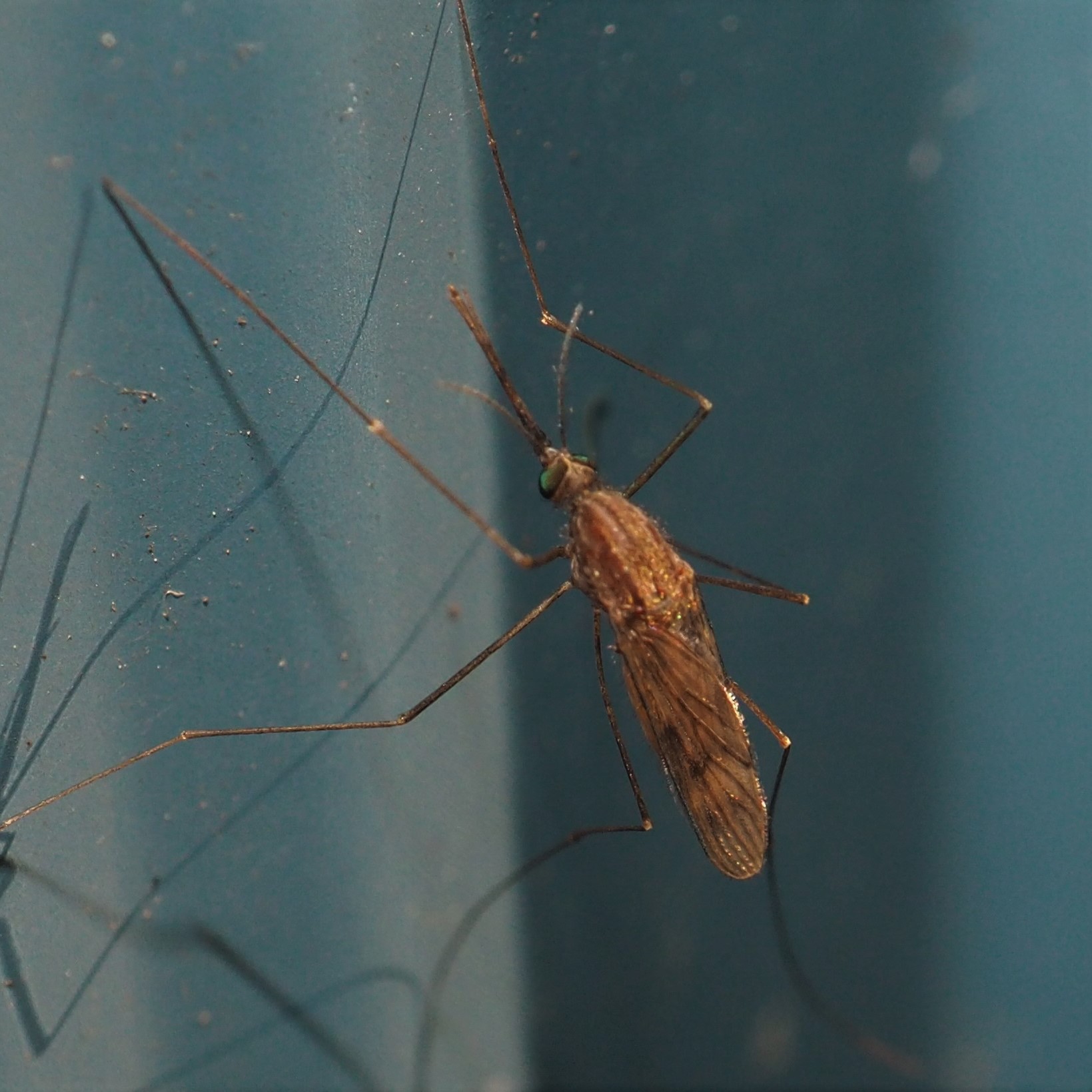
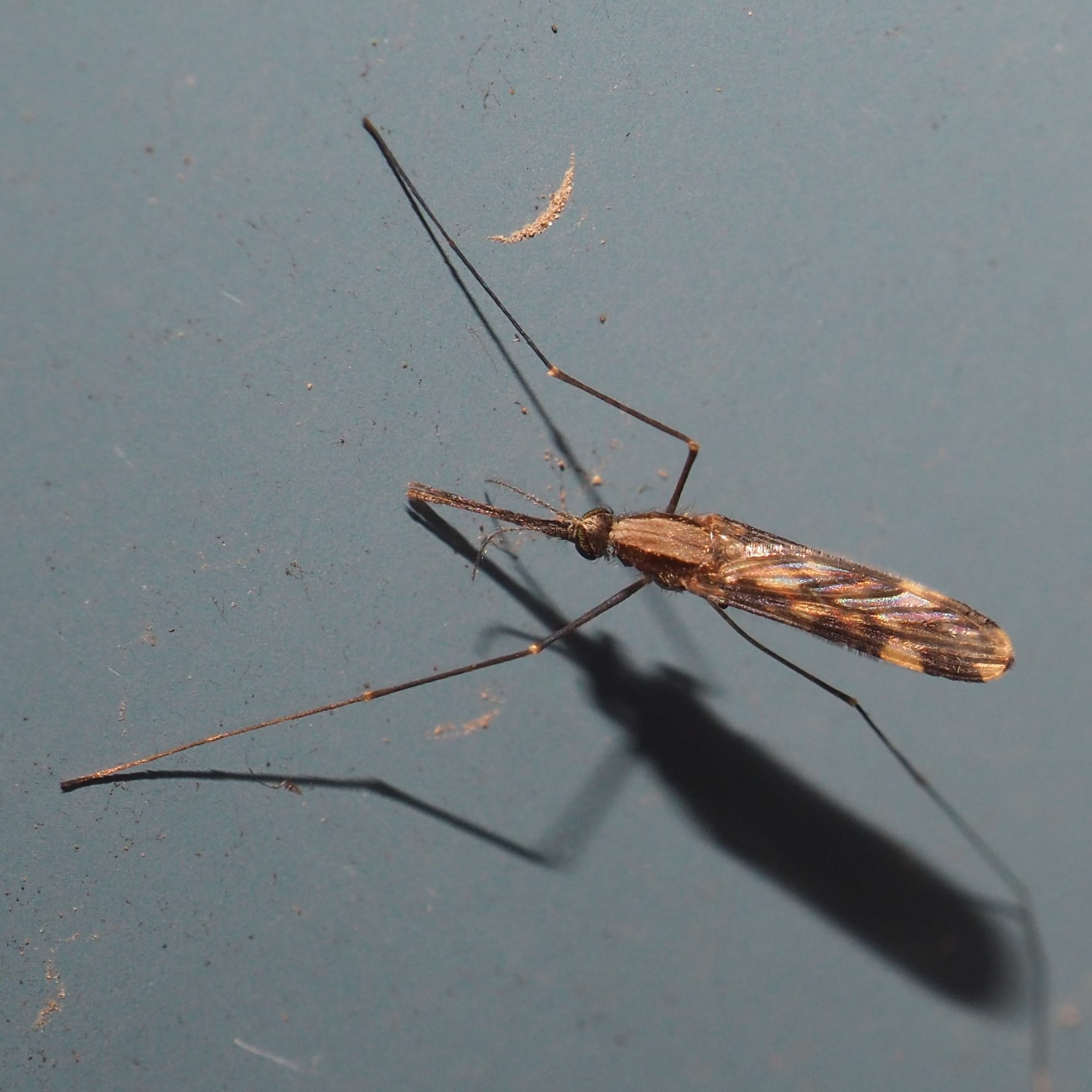

Next is a very interesting Fly. I need to submit it to iNat.
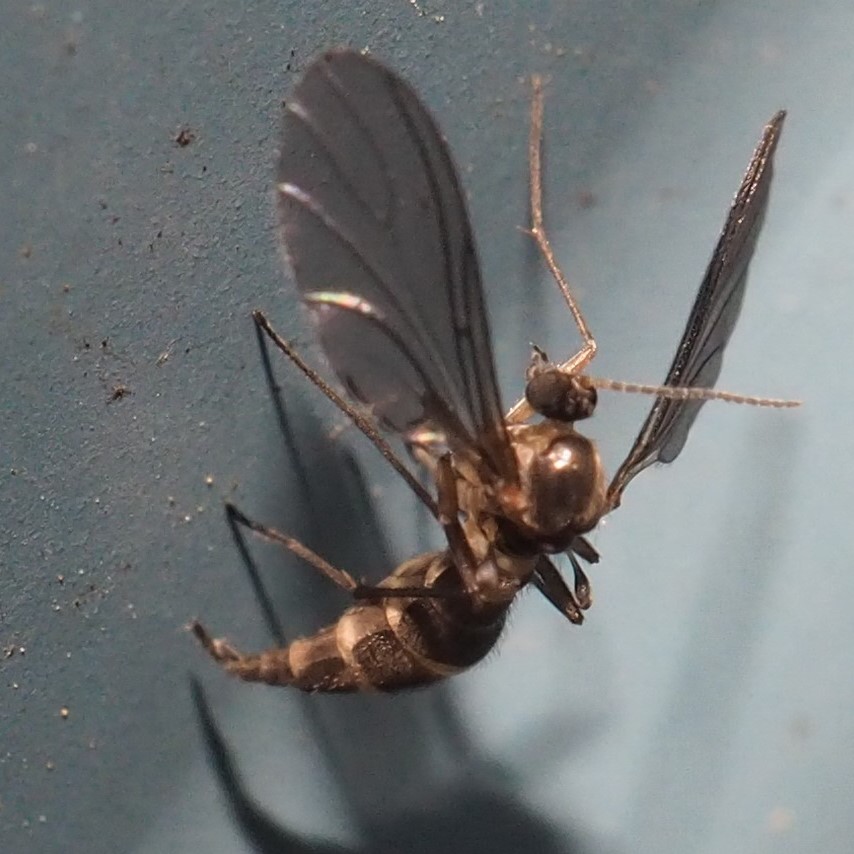
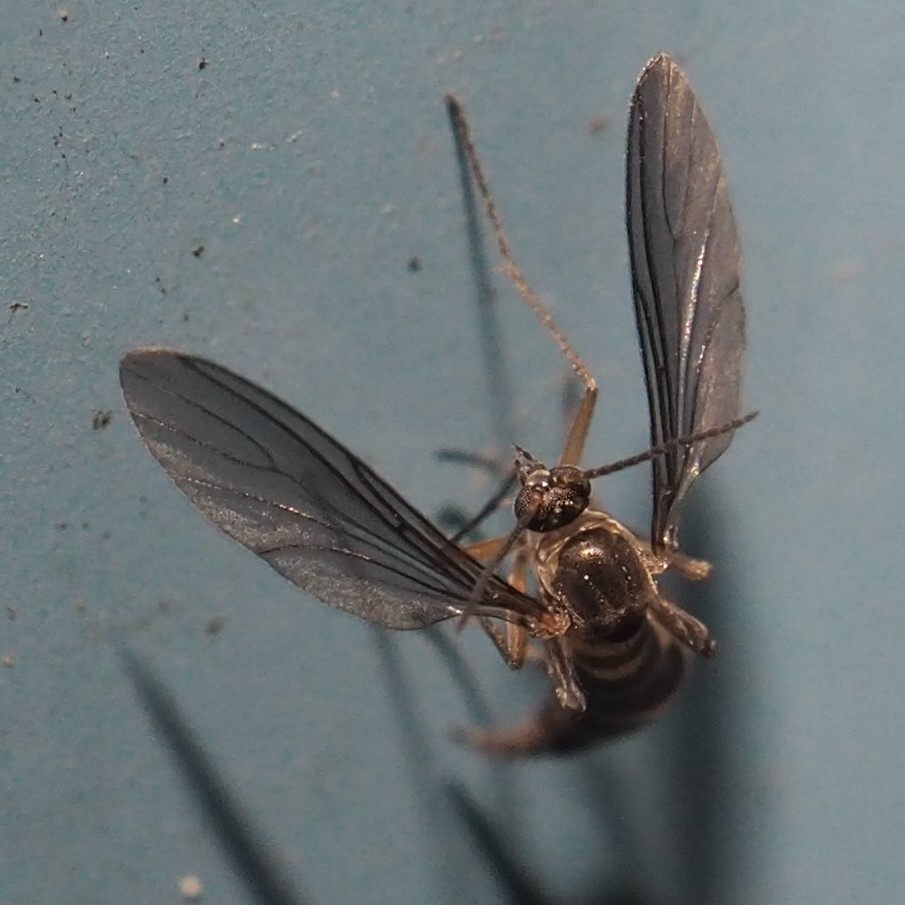

First here is one of my favorite Flies. It's called a Picture-winged Fly, for (I hope) obvious reasons. Second is a new one to me. The third is not new but I haven't gotten it ID'd yet.
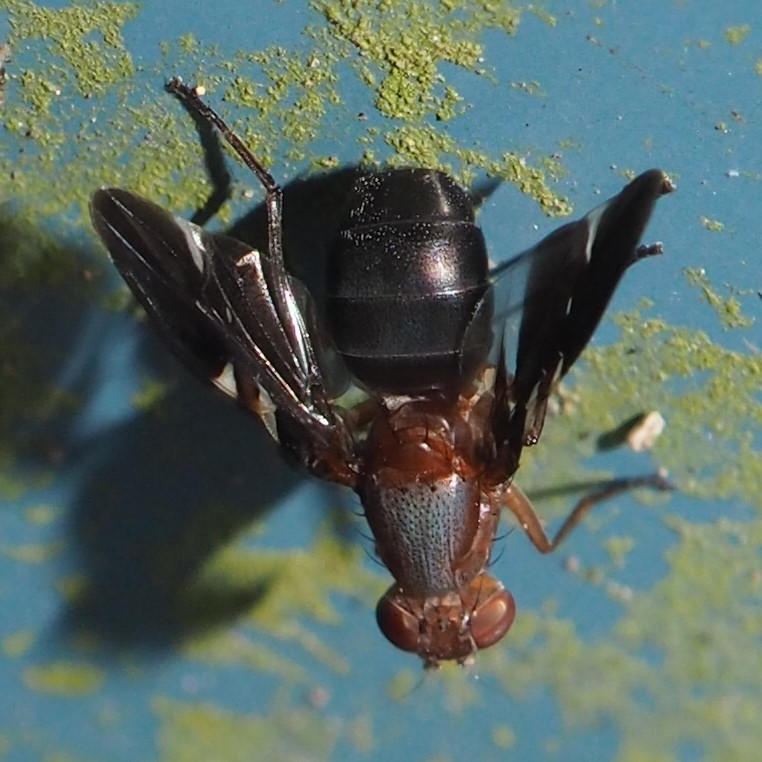

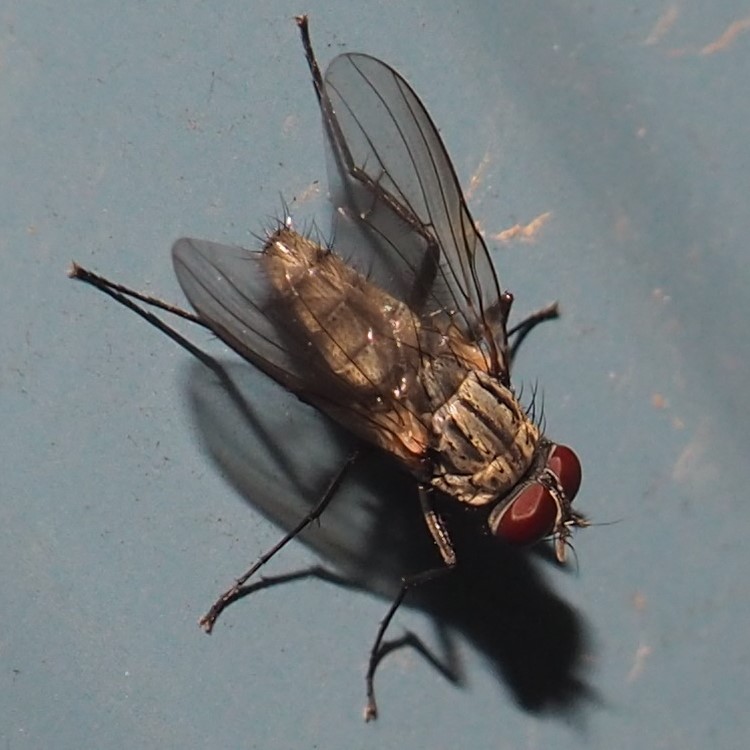
Oh! I was about to say that's all for the Flies, but then I remembered this scene. Two mystery flies are mating right there in front of our eyes. They are Fungus Gnats, and unlike almost every Fungus Gnat in the world that I have met, they have names: they are Leia bivittata! They don't seem to be very modest, as BG has another couple of examples of them in copula! The person who ID'd the guys is Steve Kerr of iNat. Thanks again, Steve!
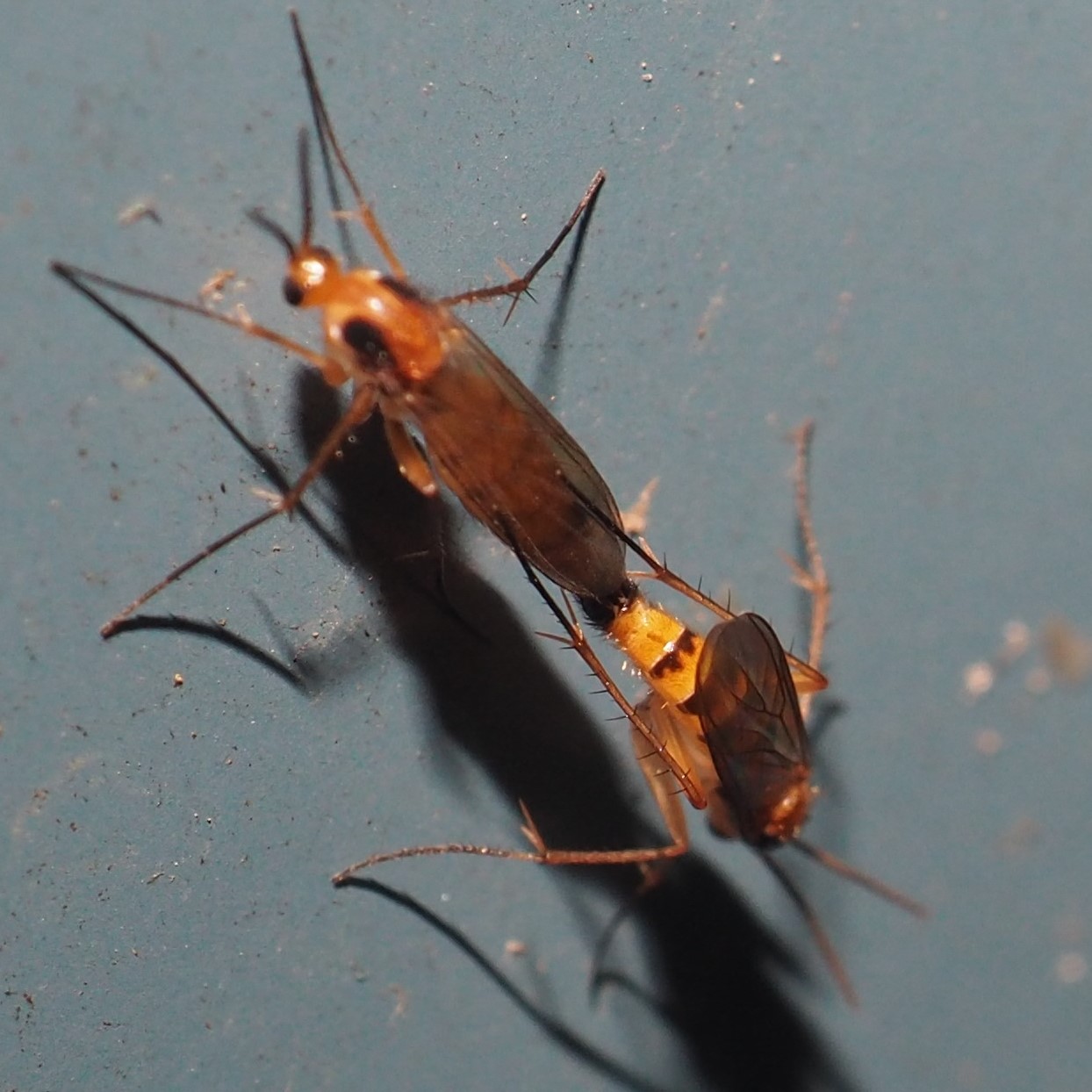
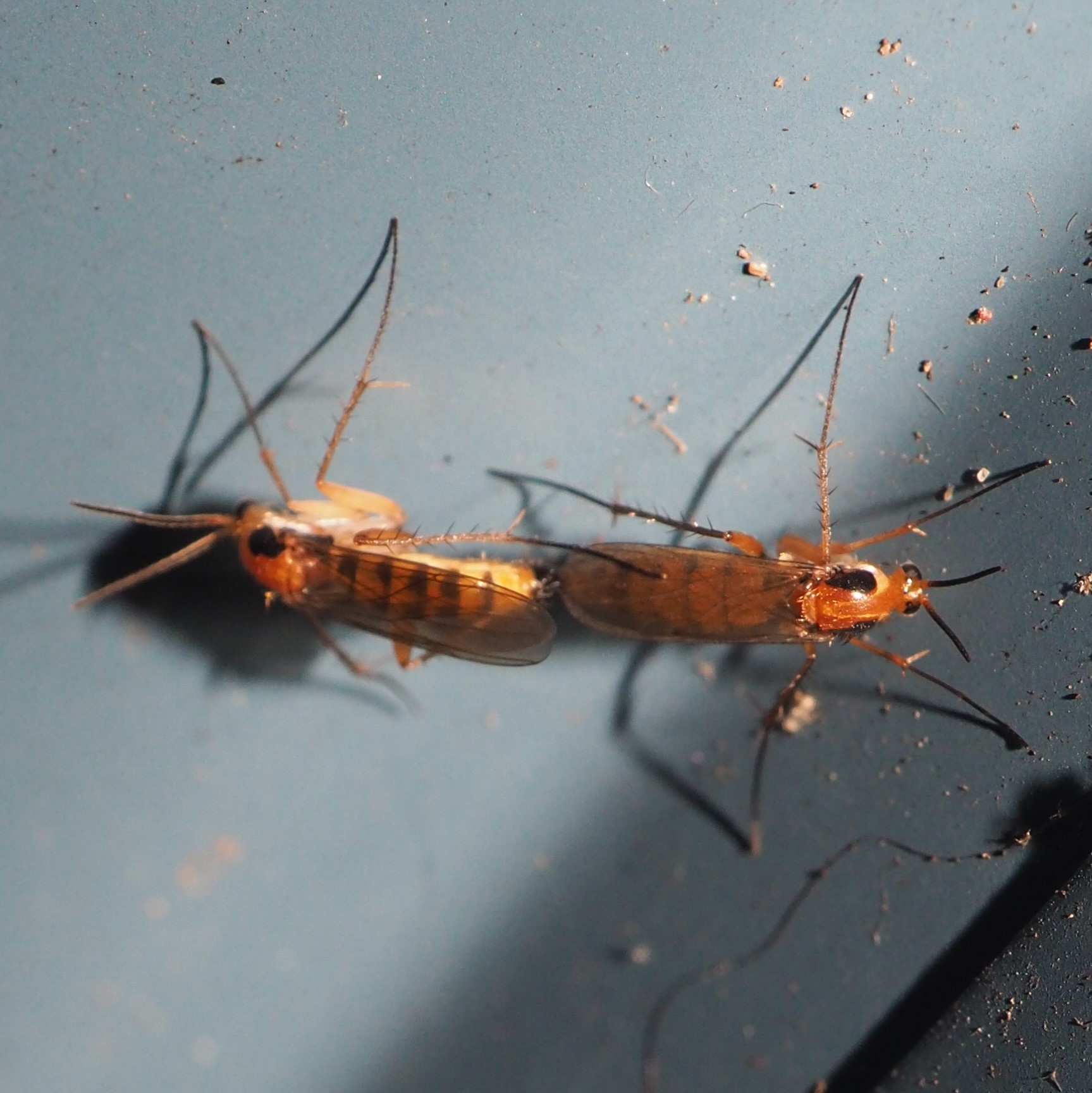
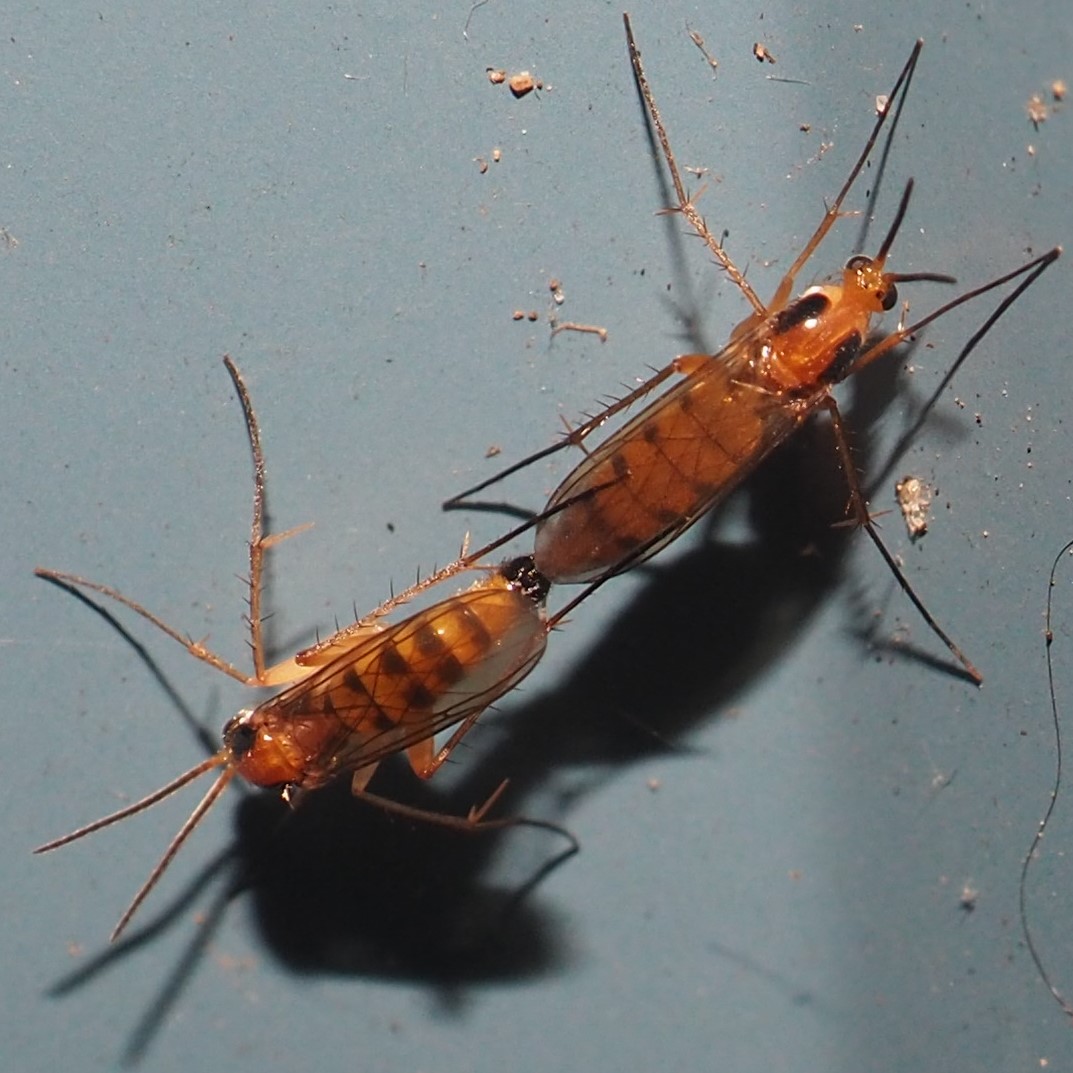
Here was a sighting of a Brown Lacewing on August 2.

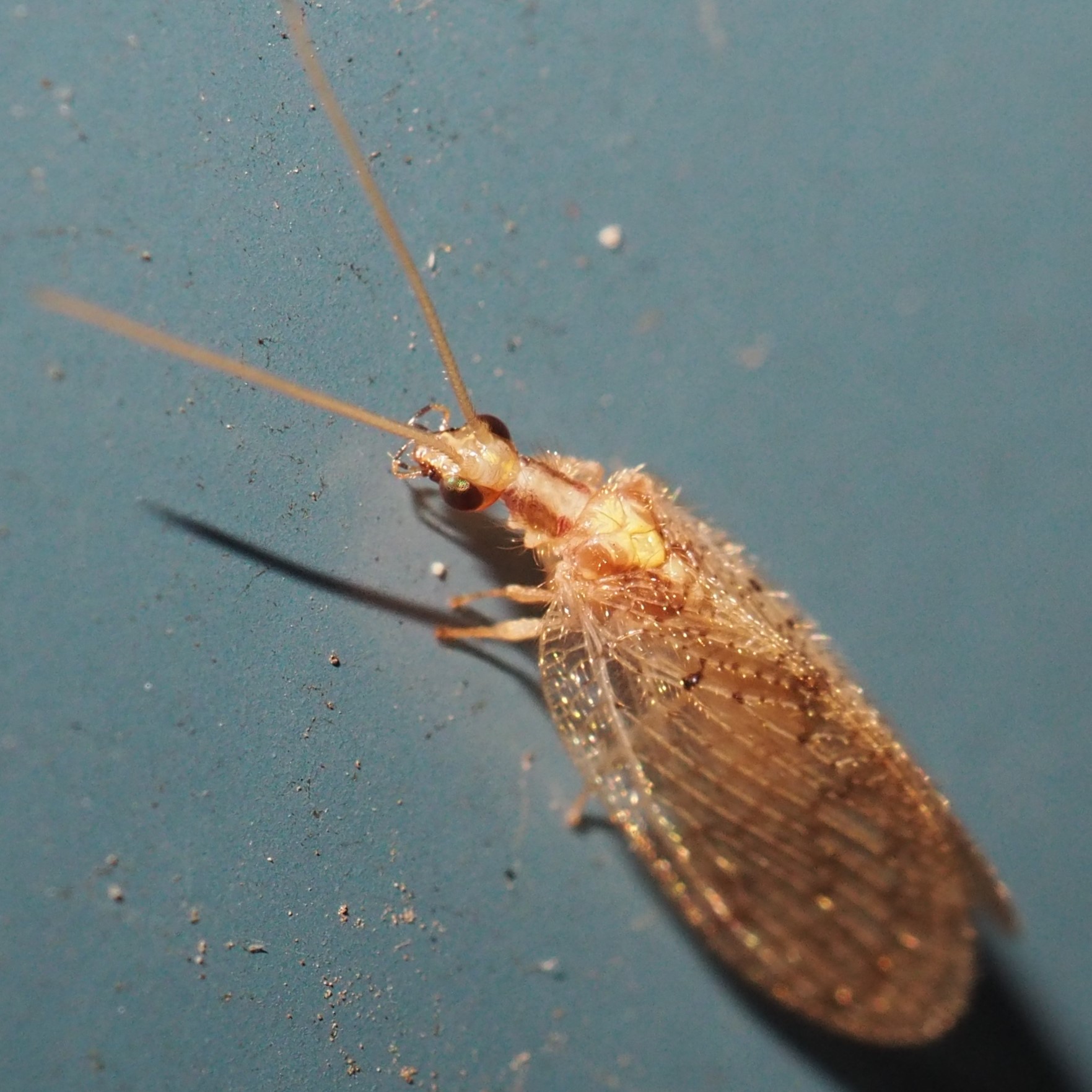
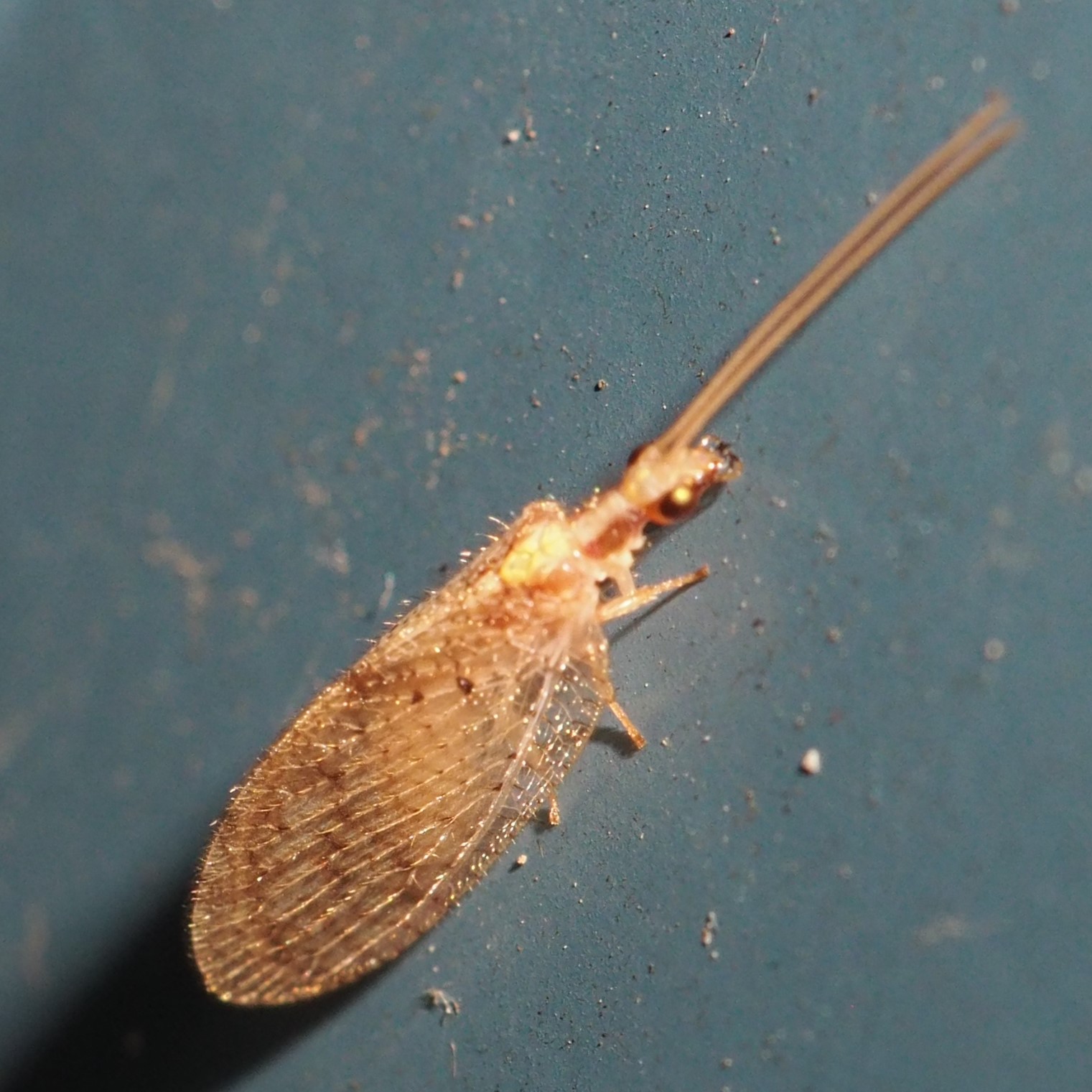
I think the most exciting event of the week was spotting this Mantidfly, Leptomantispa pulchella, appearing for only the second time in this yard. The first time was before I got my present camera and I am surely glad I got it - to see an exciting photo go down the pipes was very disappointing. I think you can see from the picture that it is not a Mantis, and not a Fly either. The best part for me is the eyes with their starbursts! You might want to zoom in on those eyes (click the picture).

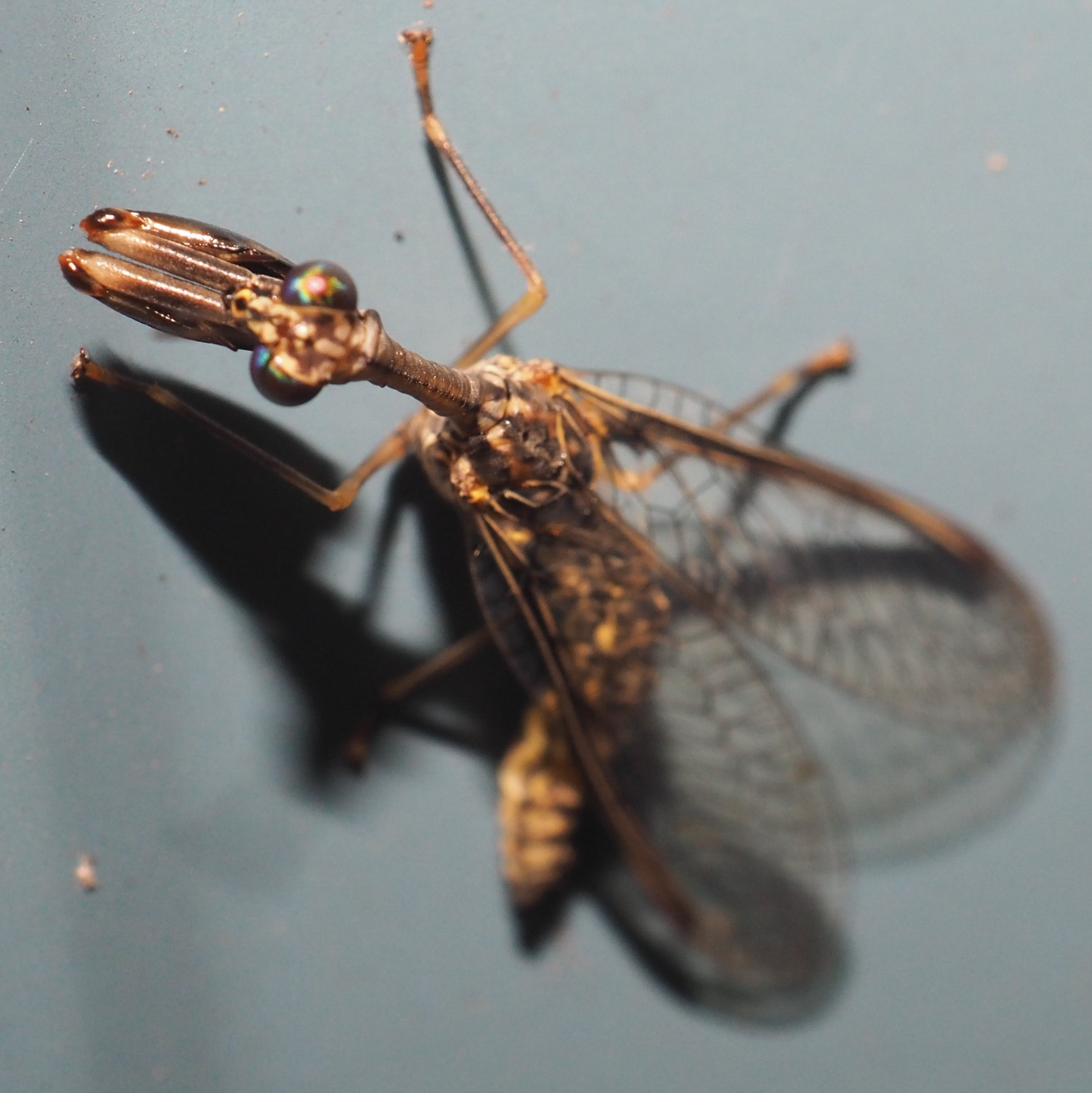
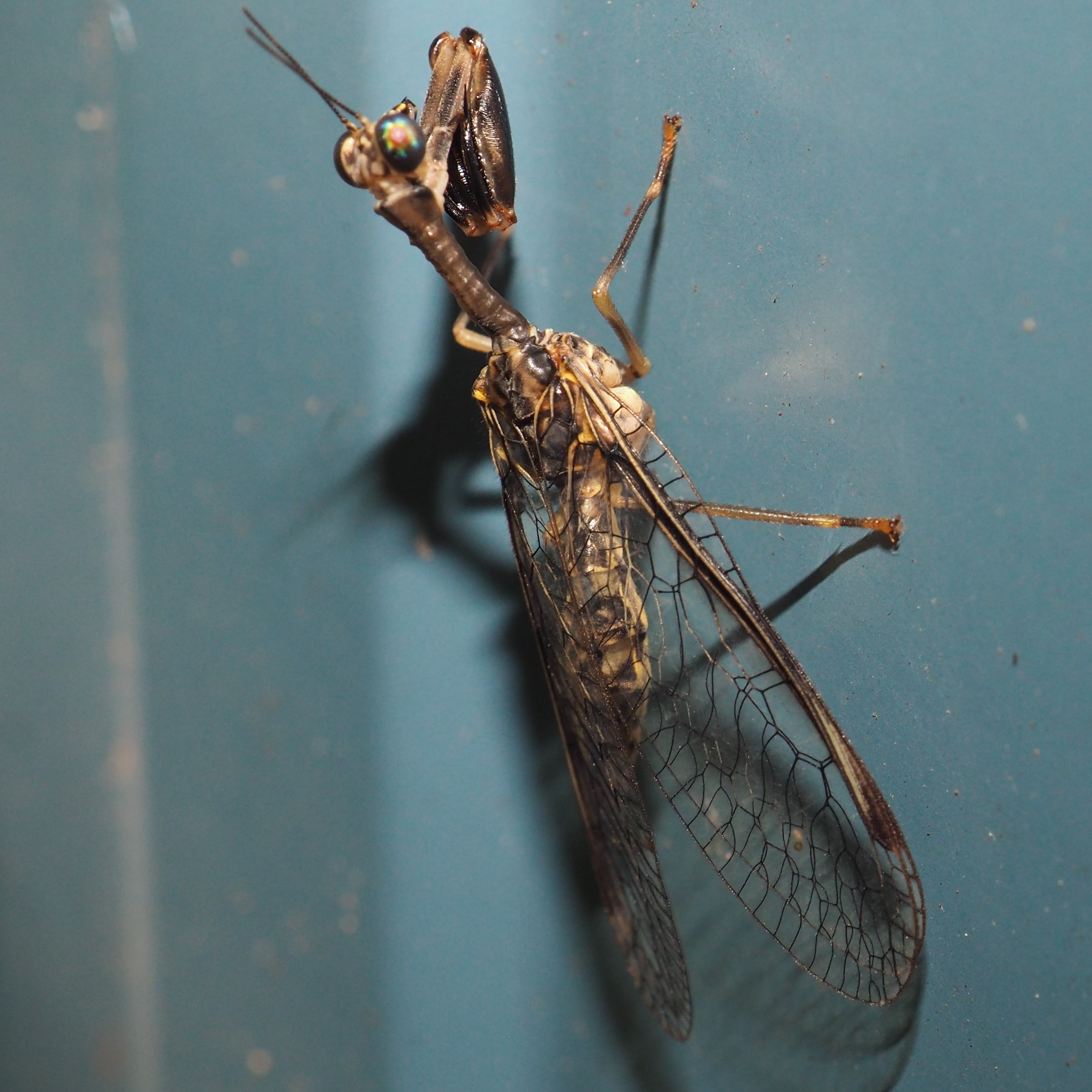
The Moths just don't quit. This big orangeish one is a Large Yellow Underwing, but too bad we don't get to go back and check the underwings! Next is a Leaf Miner Moth (two views).

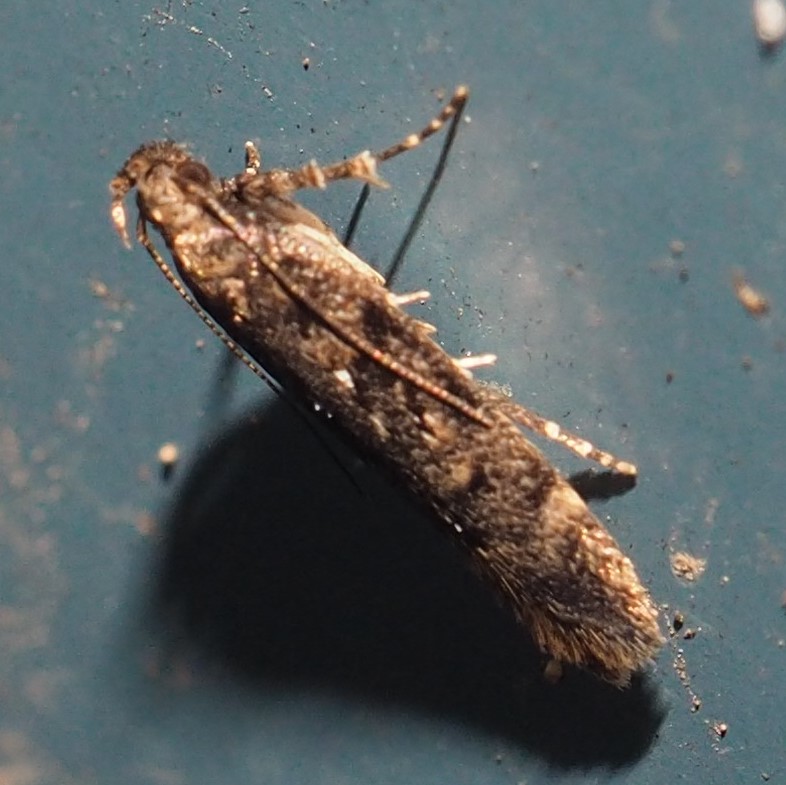
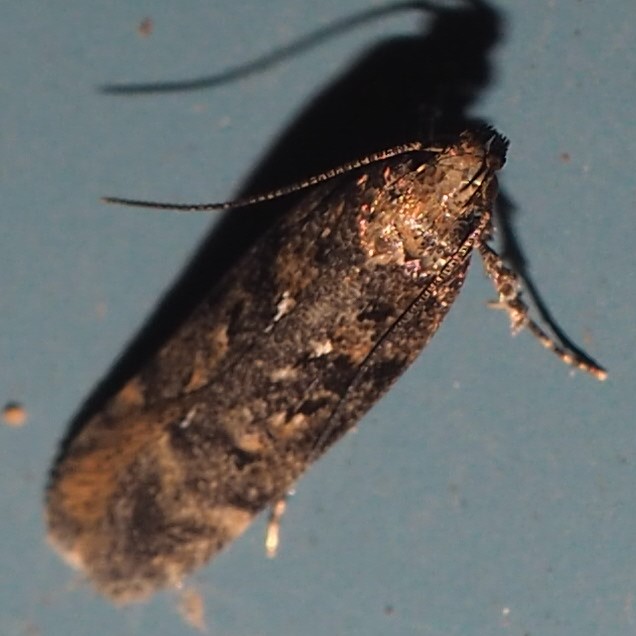
First here is another Leaf Miner Moth. Then one of those little grey Moths. And then another Leaf Miner Moth!
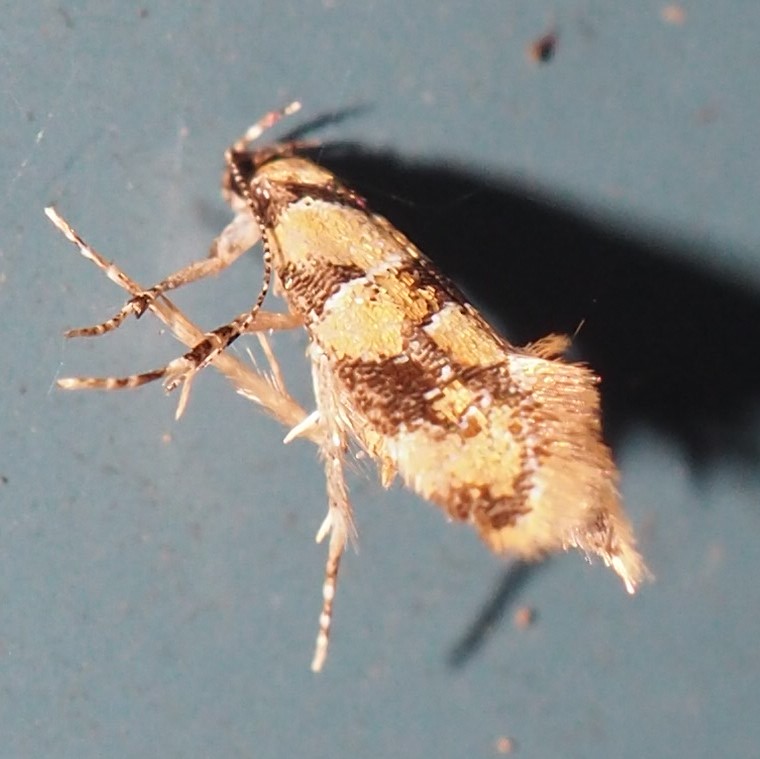
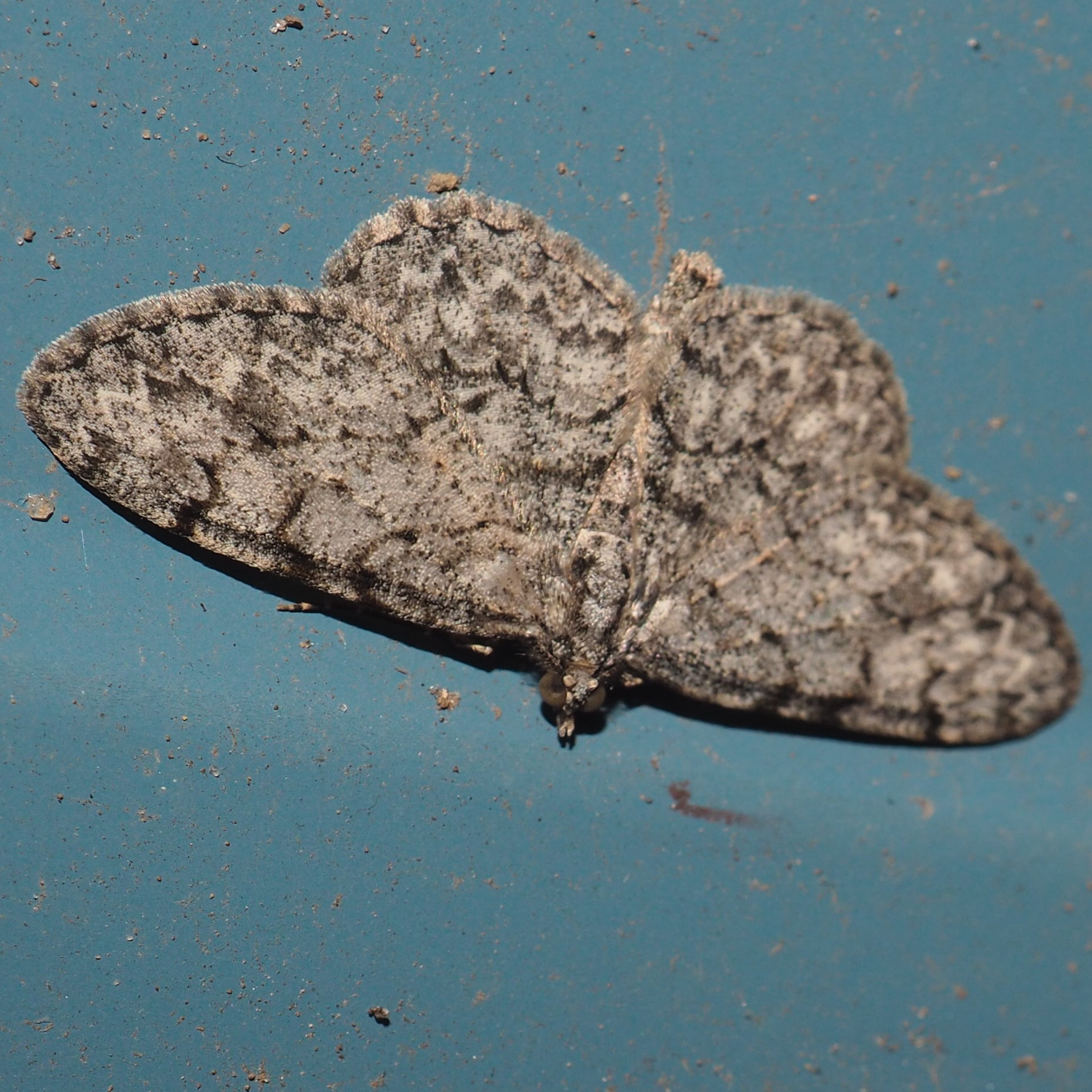
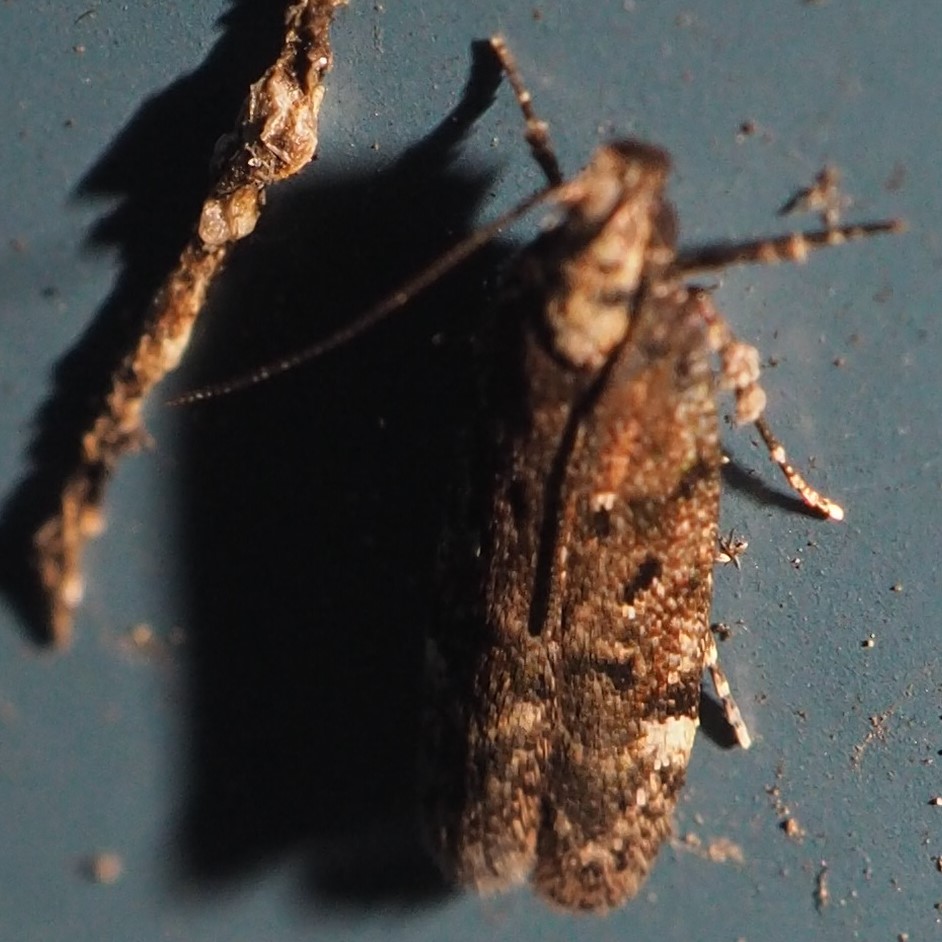
I think it's time to see what is blooming now. The precious little Asiatic Day Flowers are still making one blossom at a time. I think I told you this, but it is a member of the Spiderwort family, just with only two petals. Here's its three-petaled cousin.
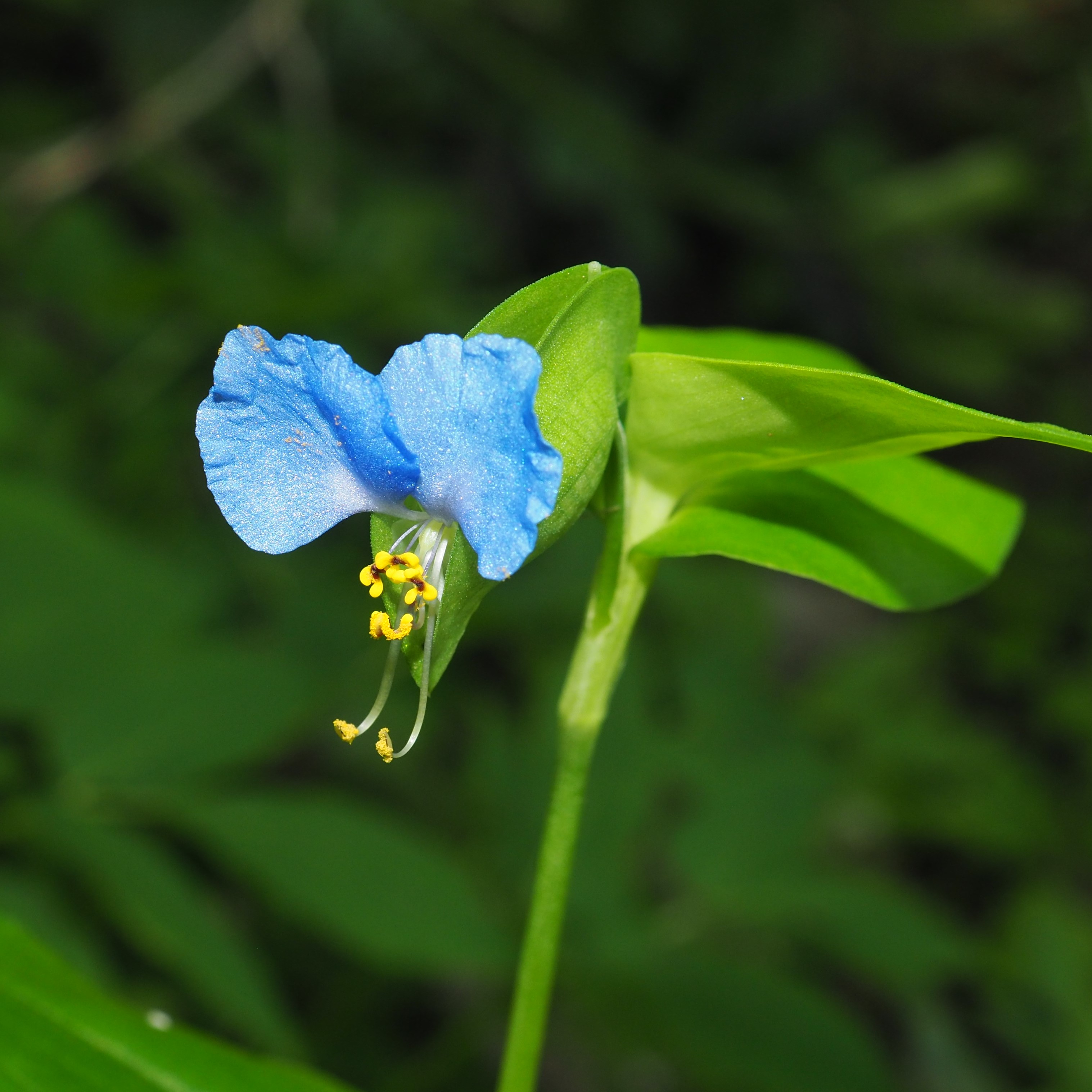
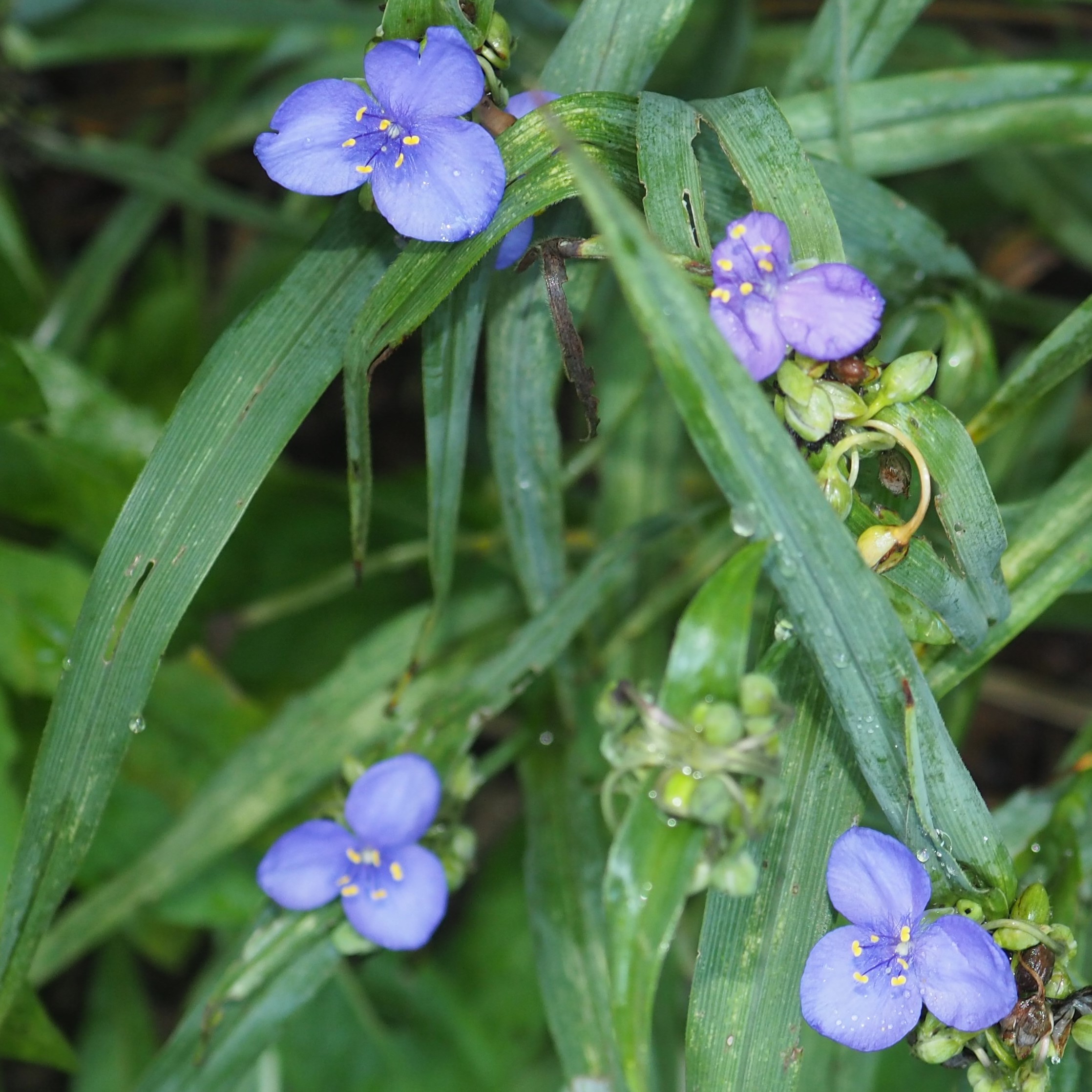
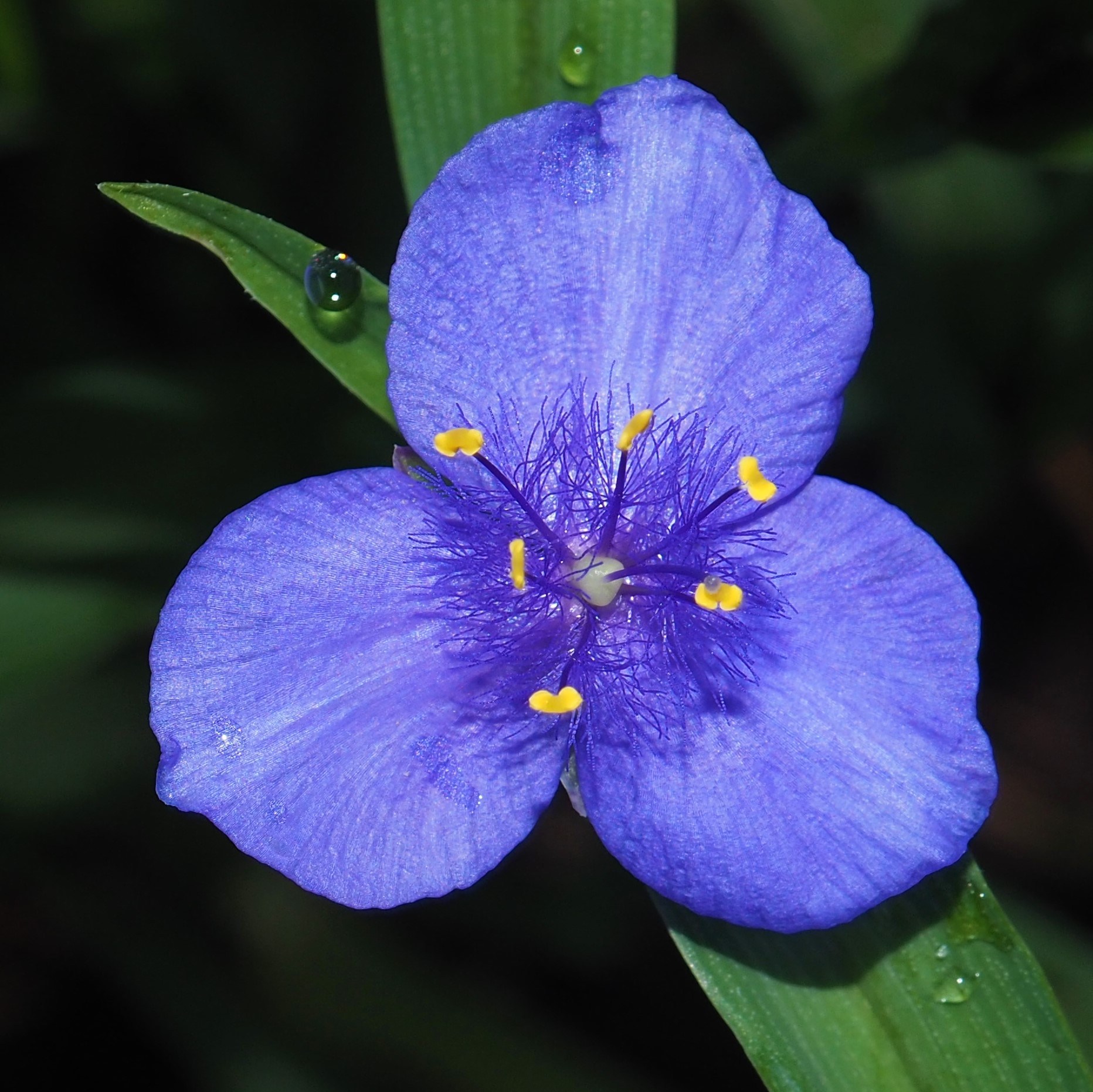
Something special bloomed on August 1 this year. It was one of my favorite Day Lilies, and called August Orange. The Trumpetvines are blooming their last, but each small scene is still wonderful. And the Fall Phlox had a chance to bloom almost fully before that heavy rain a couple of days ago.
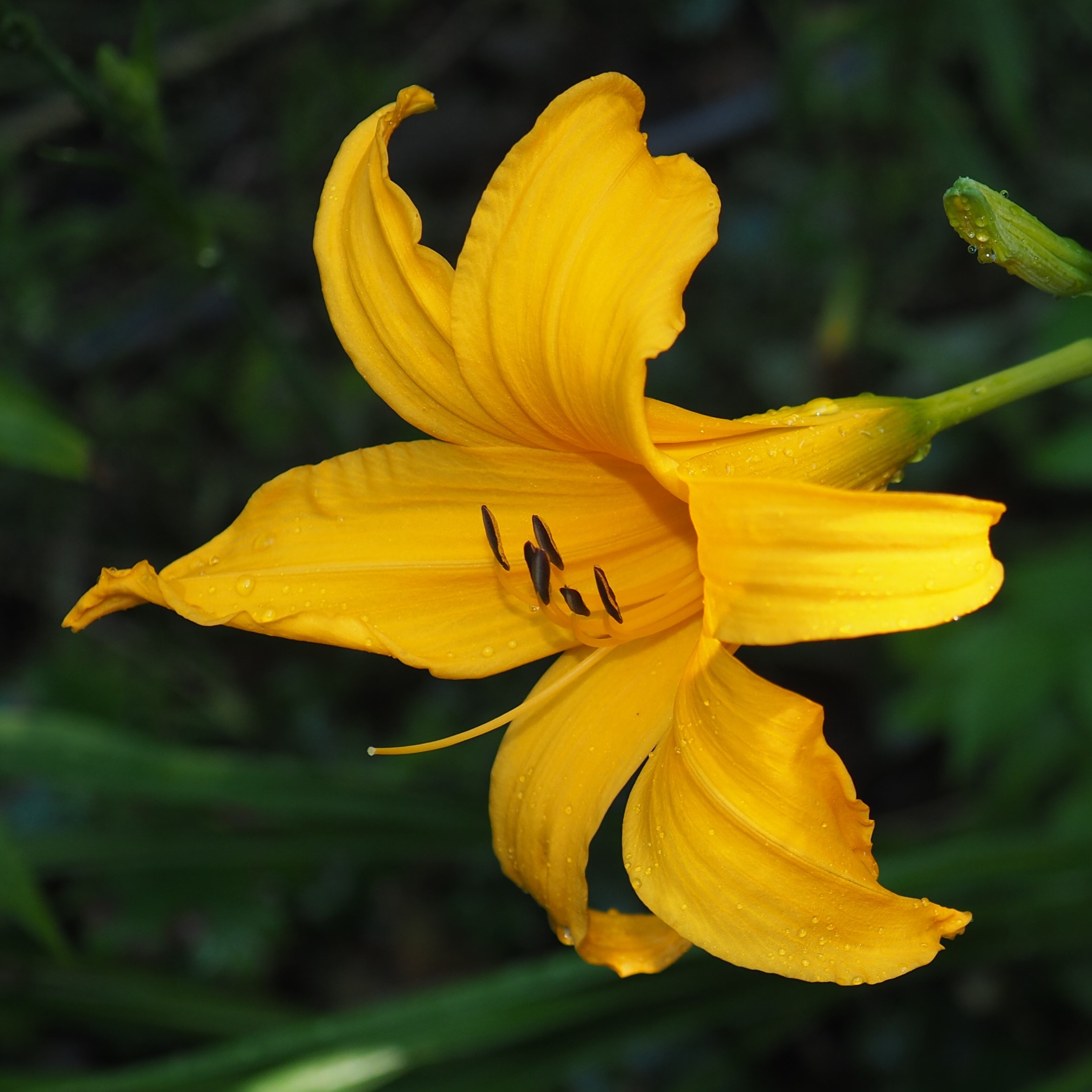


The Asters hold promise of a good bloom soon. Here is a typical bud, with the multilayers developing through green to the many shades of pink and purple they will show soon. The Cranesbill Geraniums are still blooming one at a time. The Yellow Wood Sorrel is blooming fully now.
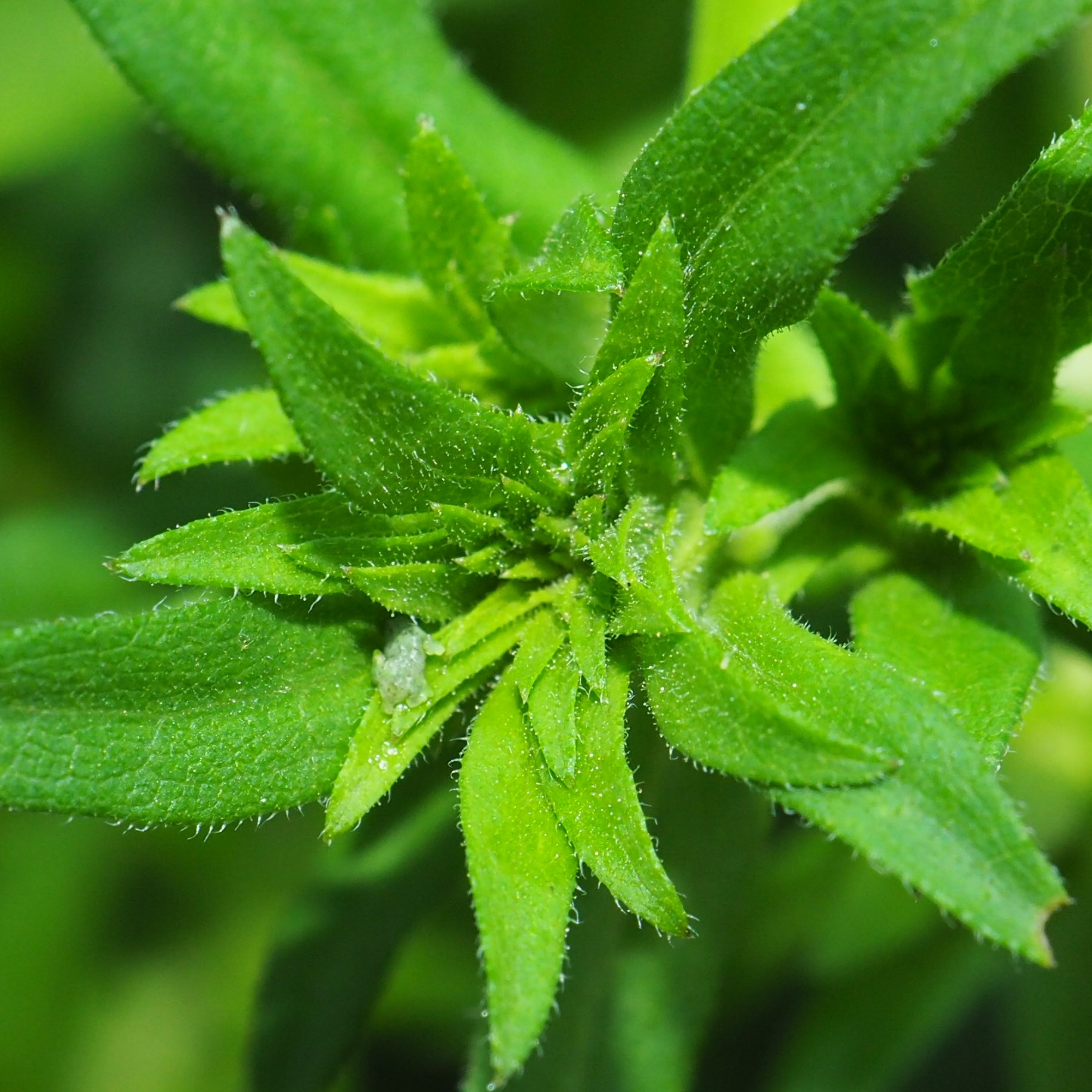
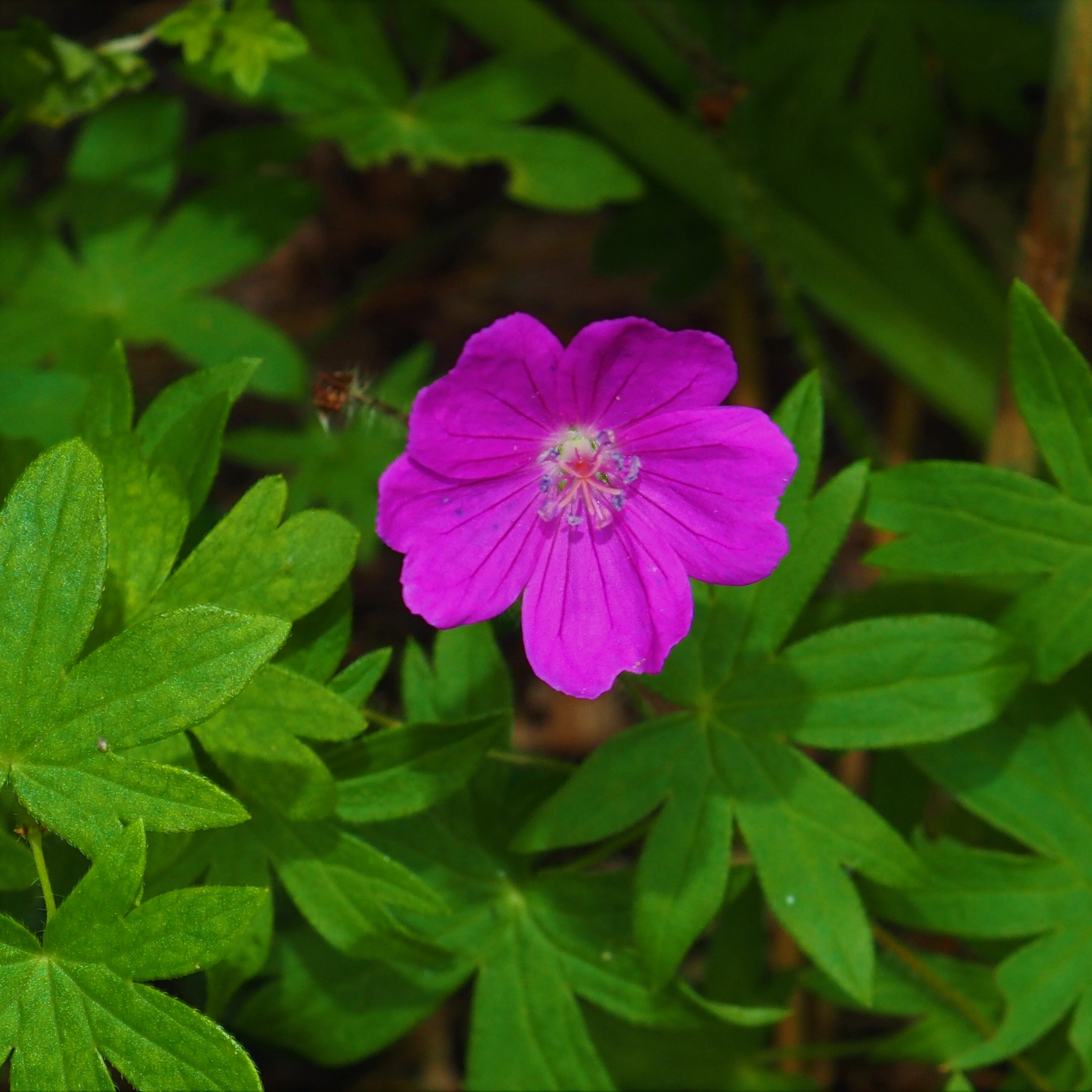
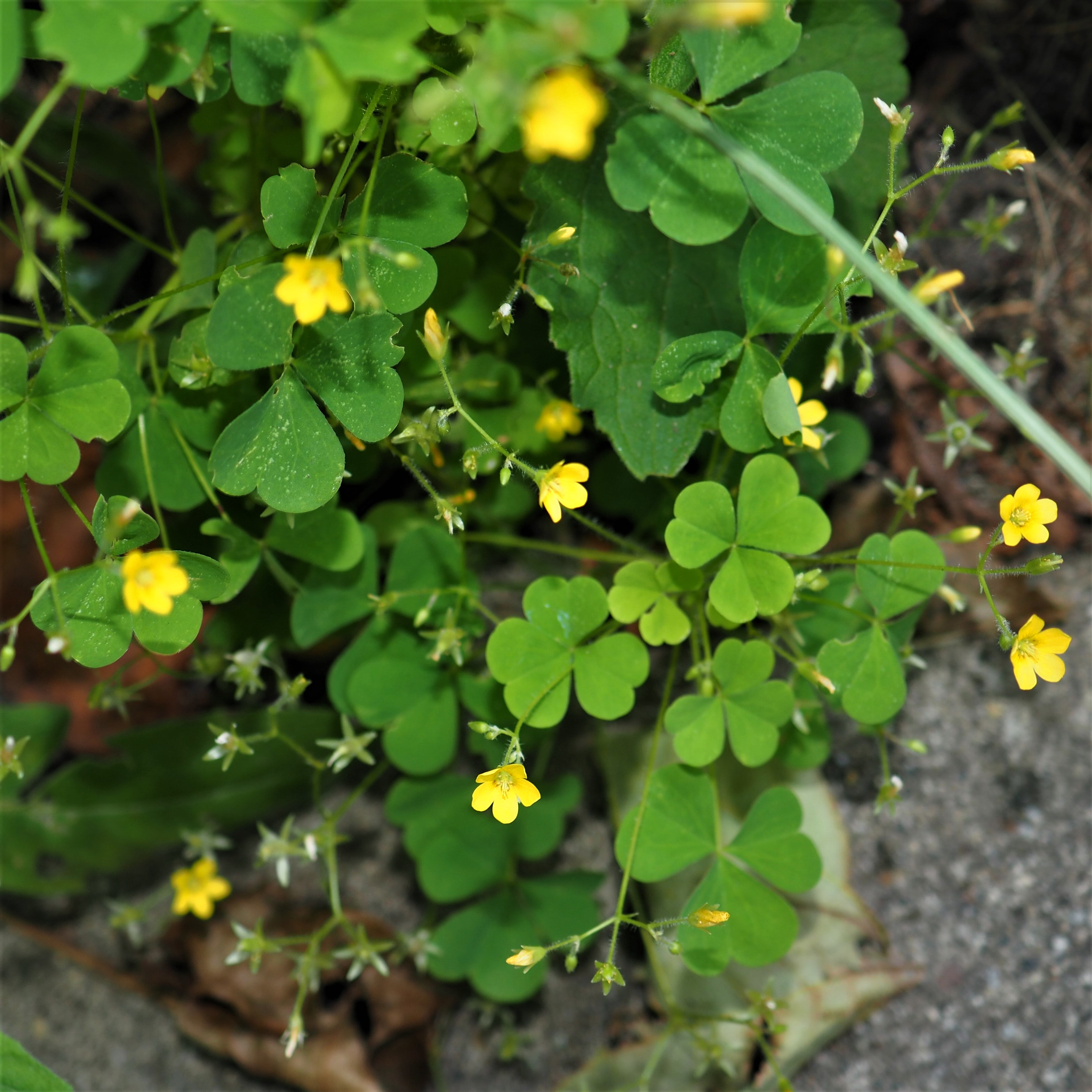
That huge Hosta is almost finished its show, but here are the three big scenes left.
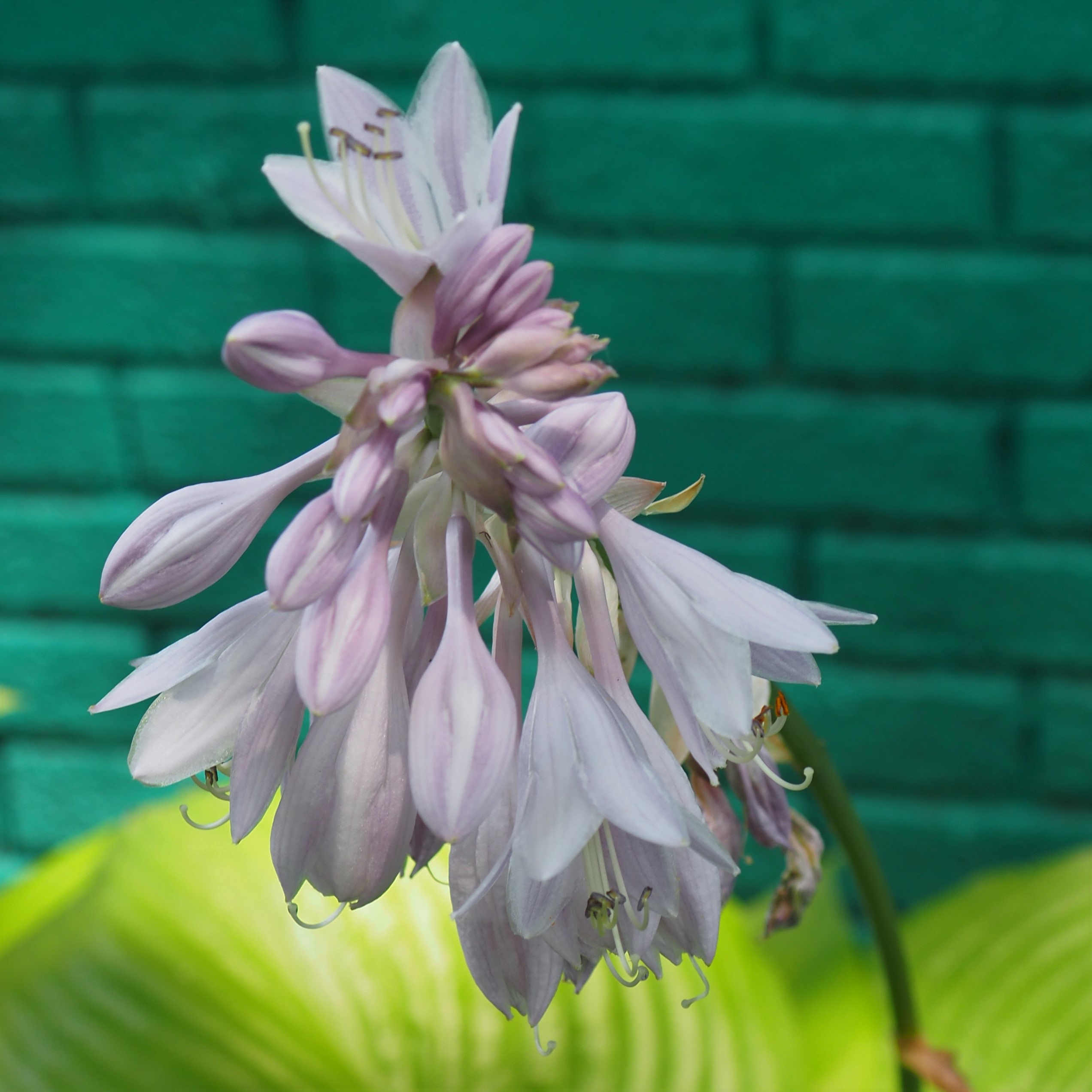
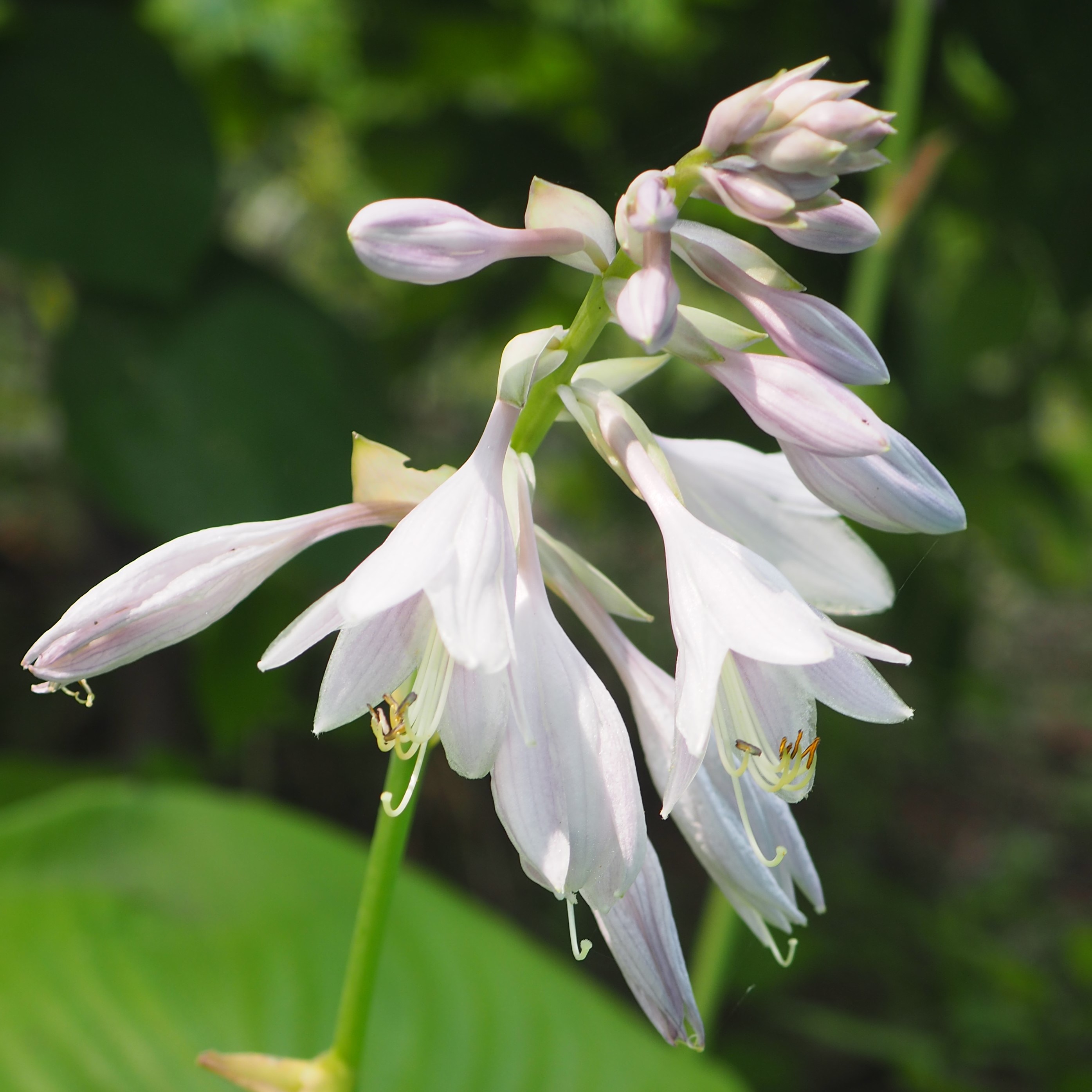
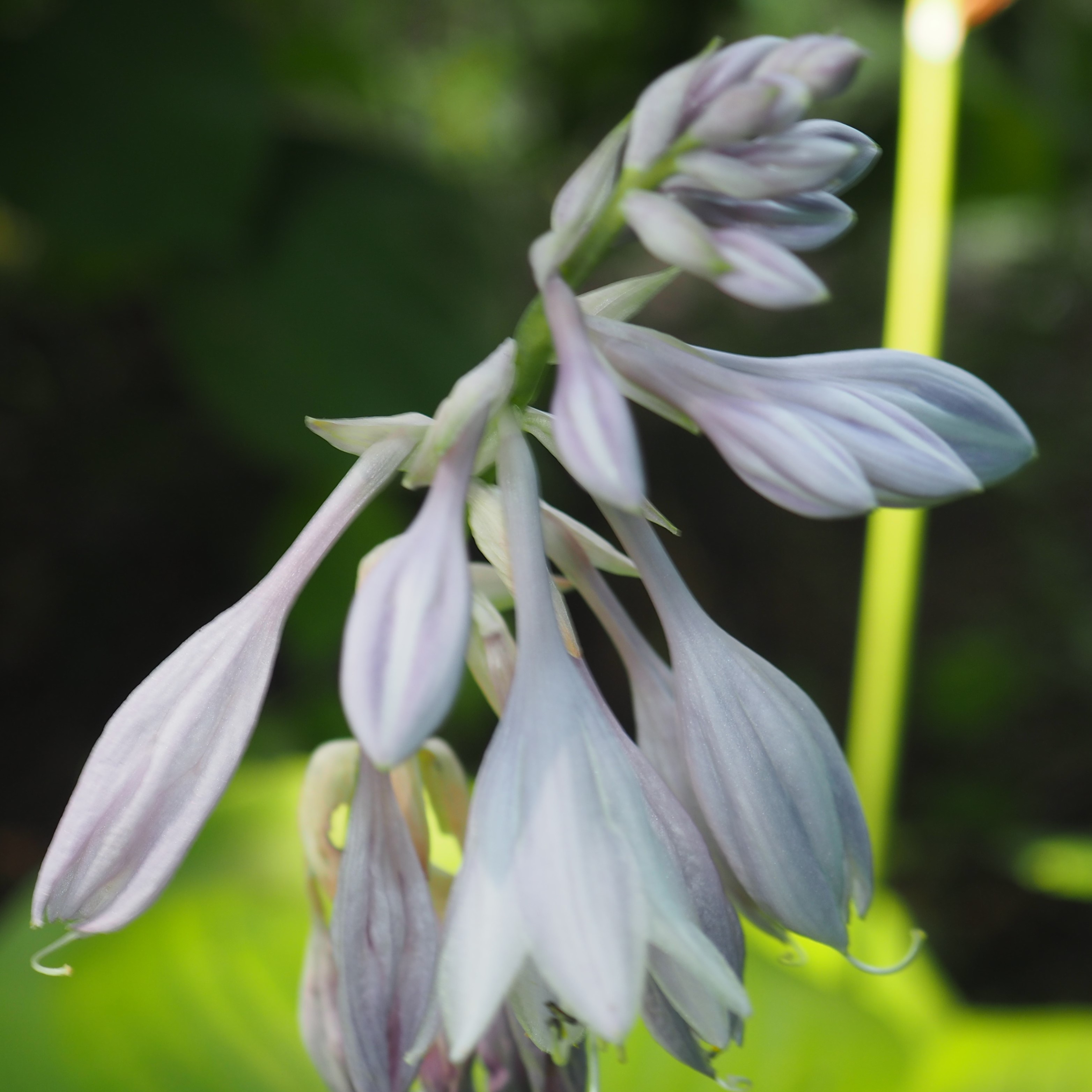
Here are some more magenta blossoms. First, the Rose Campion; then one of the Pinks that made it through the past winter; and this Deptford Pink from last week.
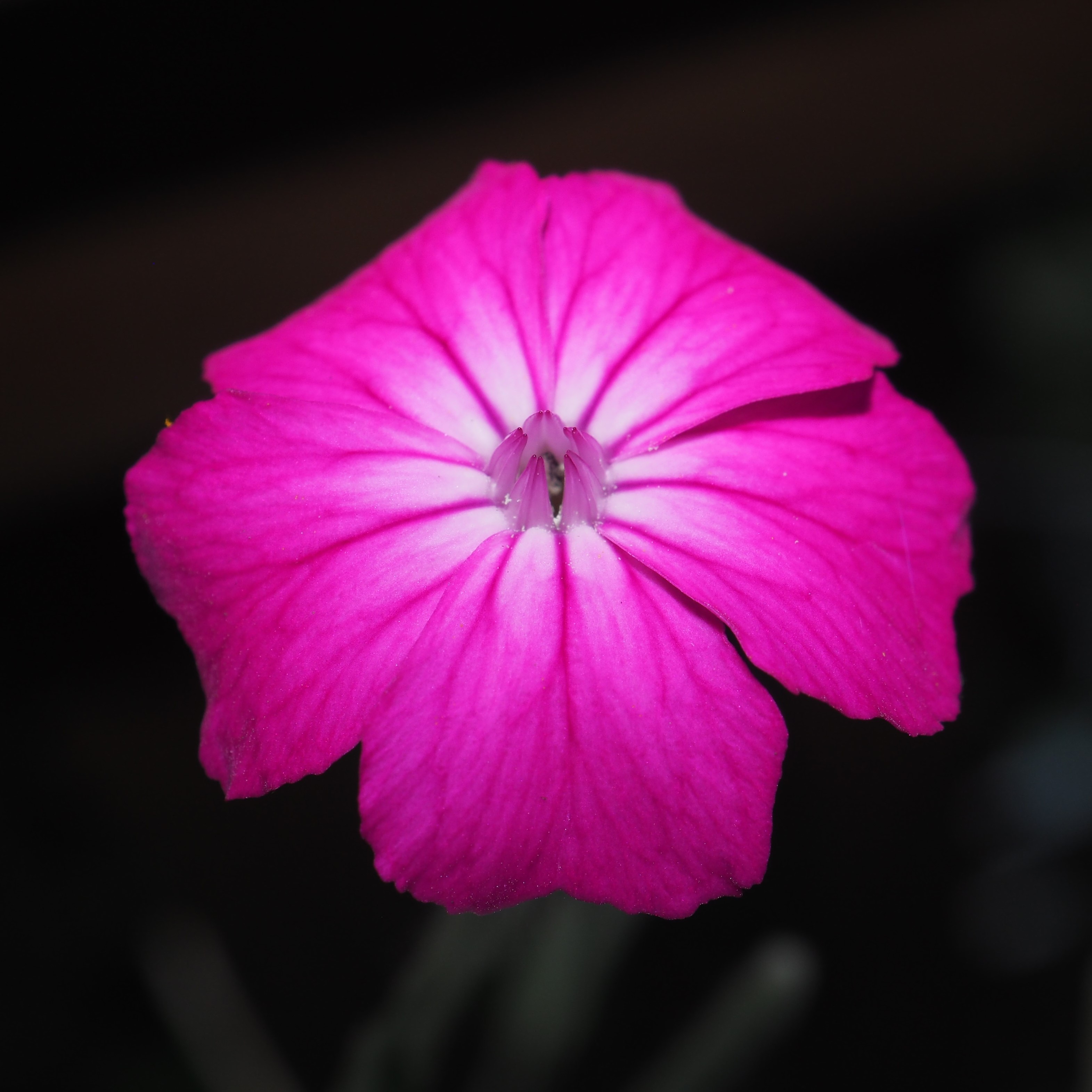
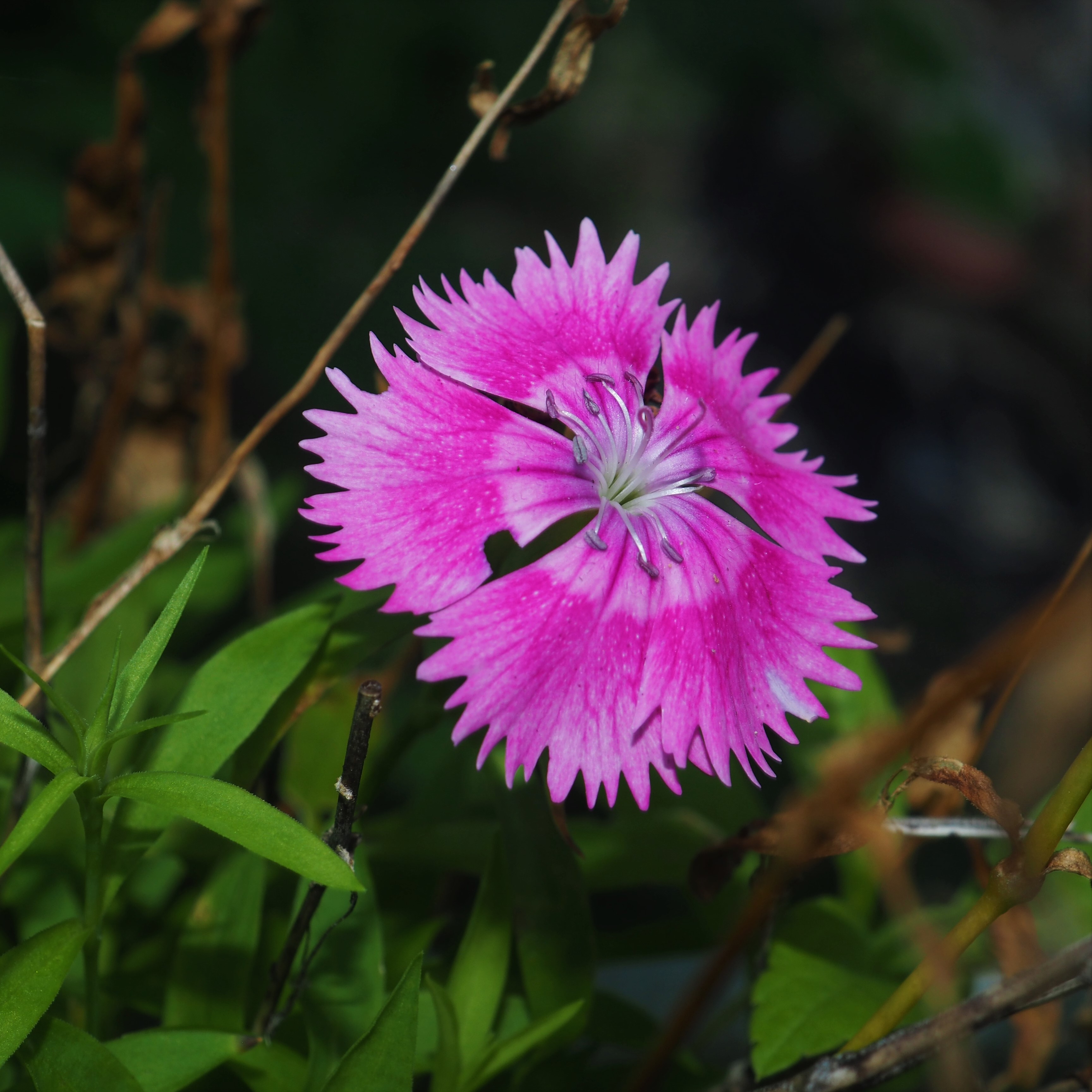
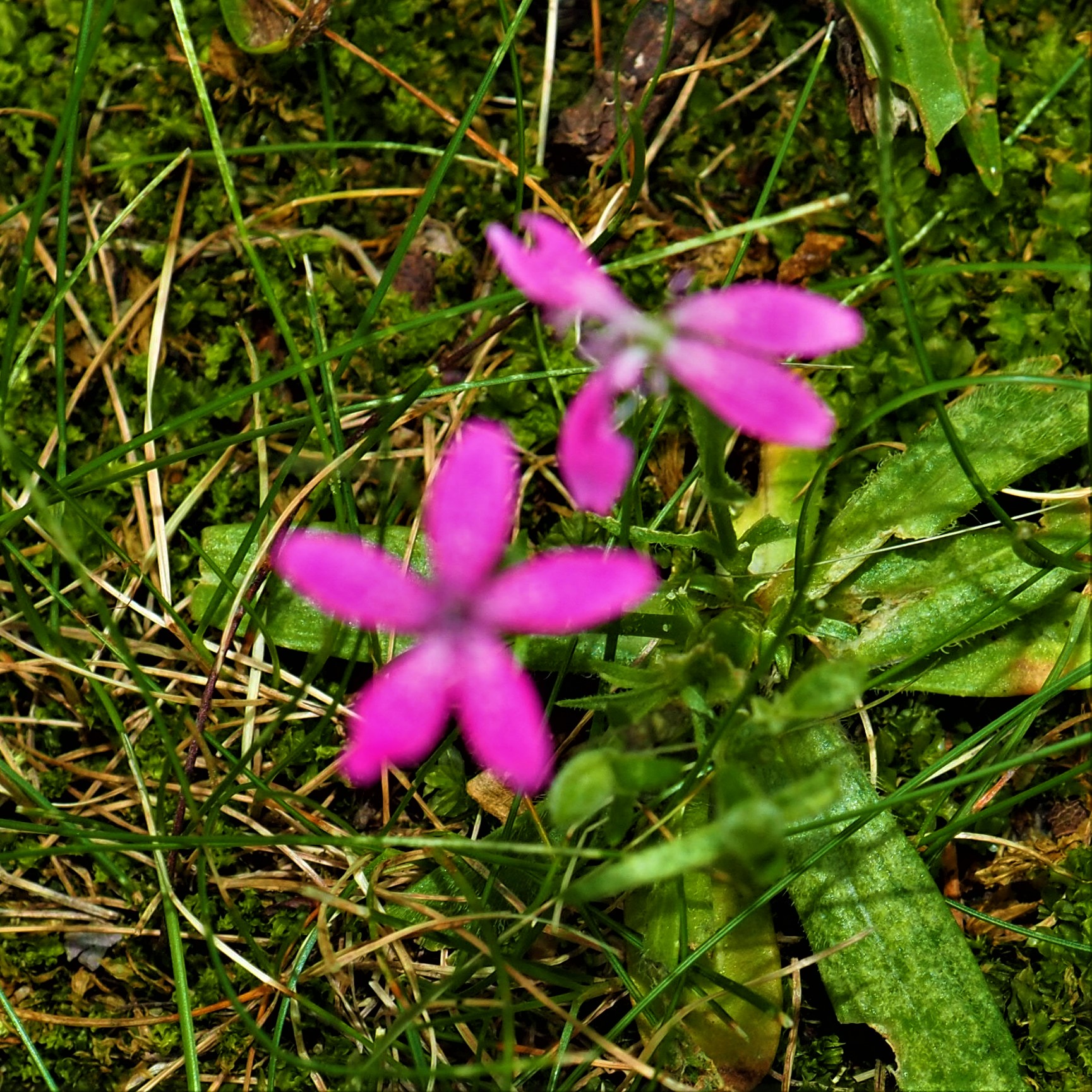
The Blackberries finished ripening and now sit in the freezer with the Black Raspberries waiting for me to decide to want a nice Berry Pie. So now I think it's time to come back from our walk and see the Spiders and kin. Here's the kin - an Eastern Harvestman. And then a lanky Cellar Spider. Finally, the Cellar Spider has captured an Ant.
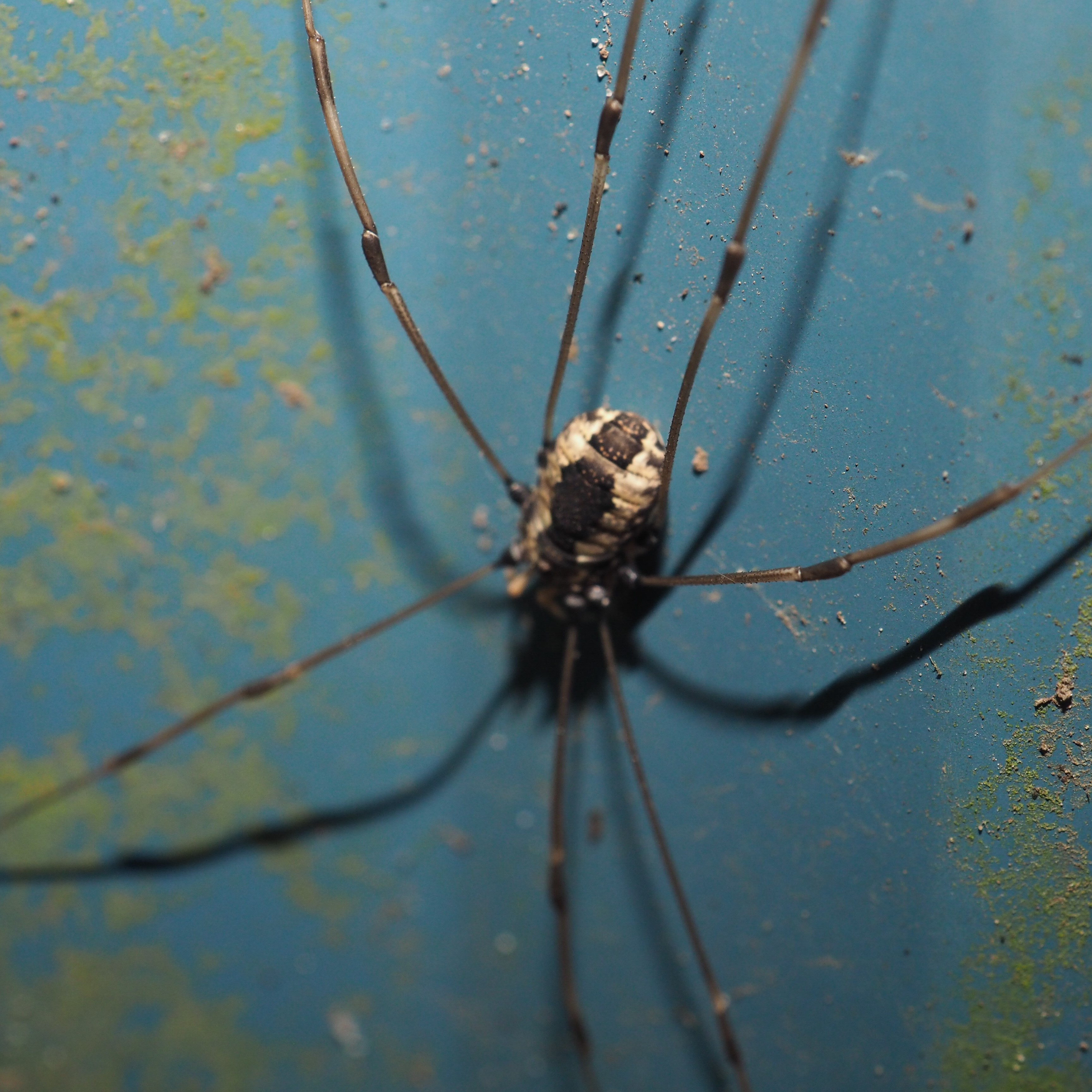
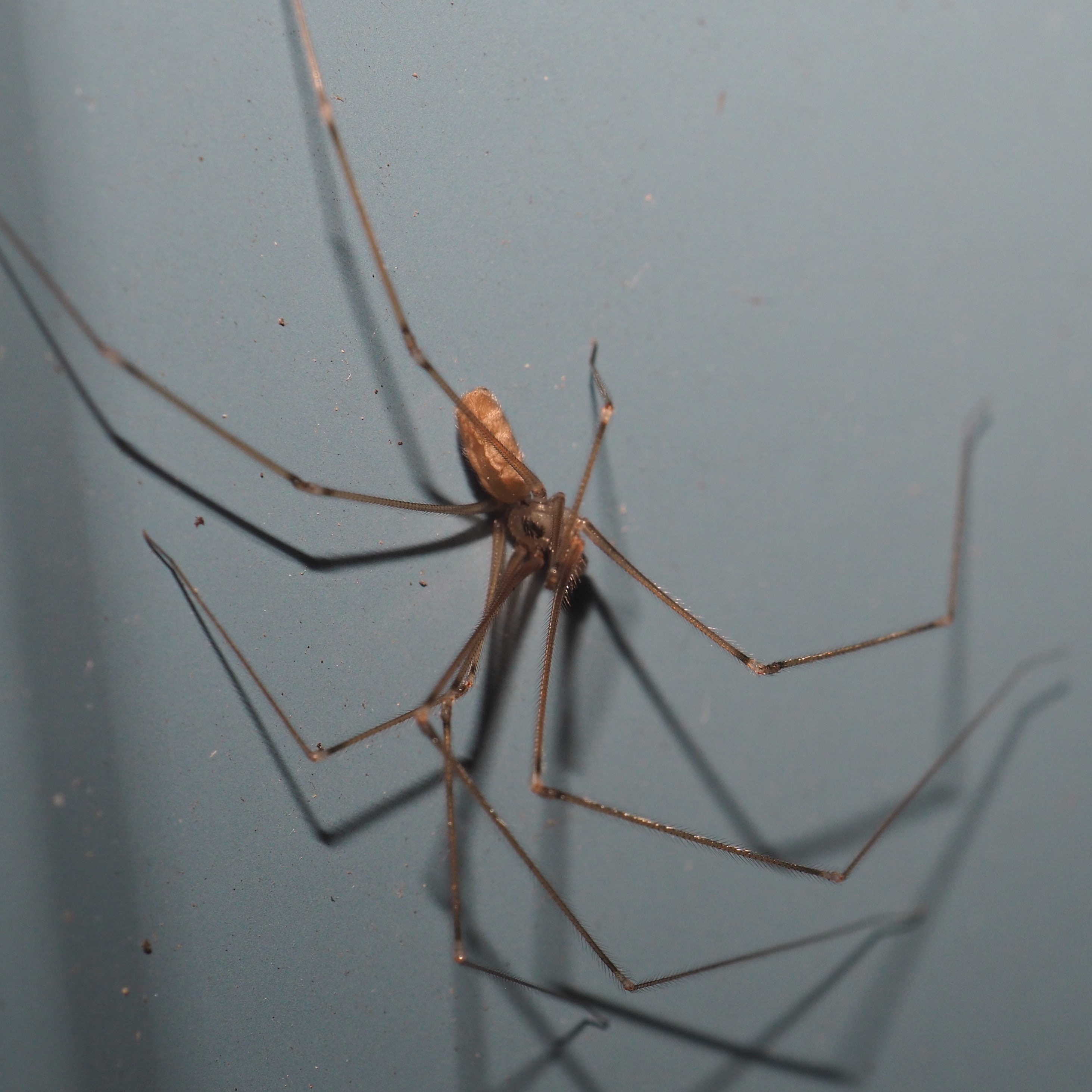

Here are a few shots of the Common House Spider. It can look different in different lights and environments!
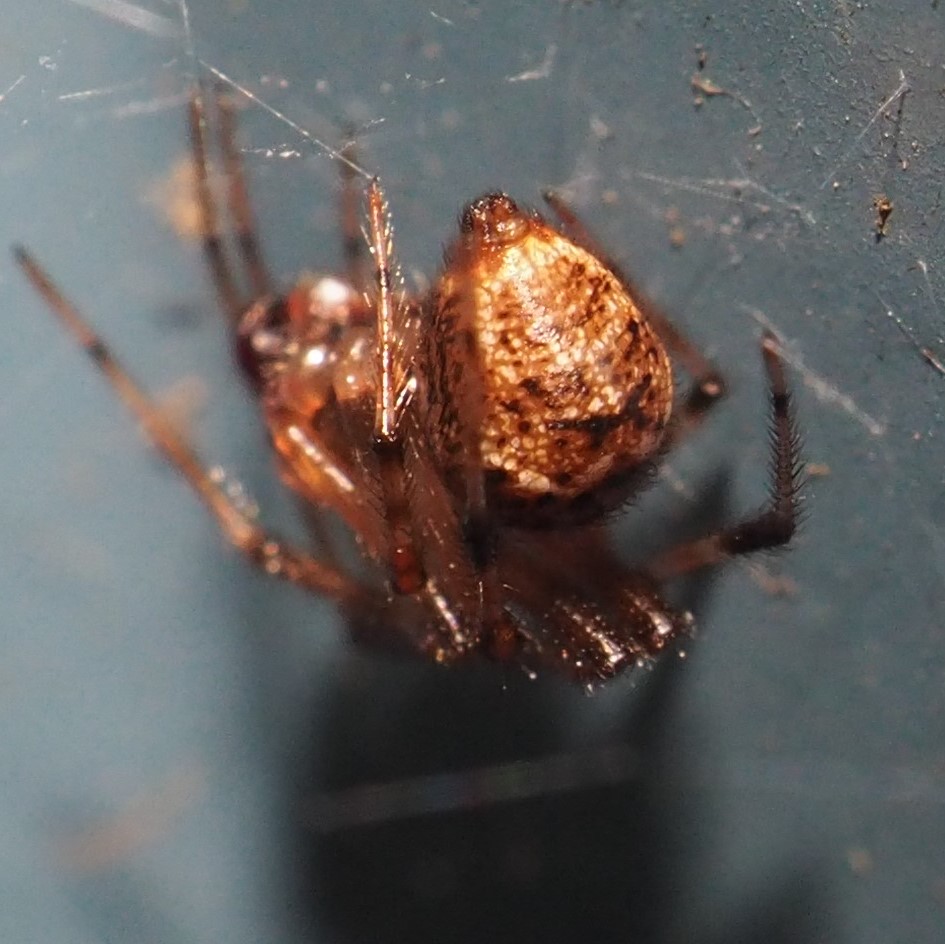

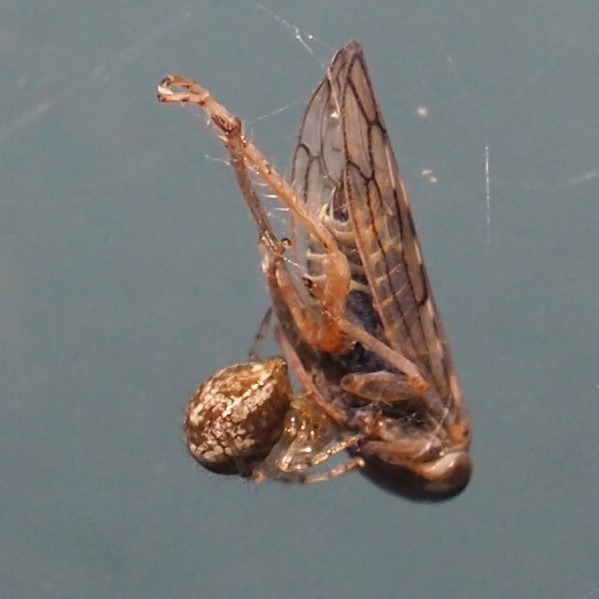
The Grass Spiders make a little nest of silk, and race out to retrieve anything the right size that comes conveniently close. This next one is one of the Large Crab Spiders. It may be in genus Bassaniana (I'm going by what seems like a "heart-shaped head segment). Third we see that Spider Egg Mass from last week and the babies ready to go off and seek their fortunes.
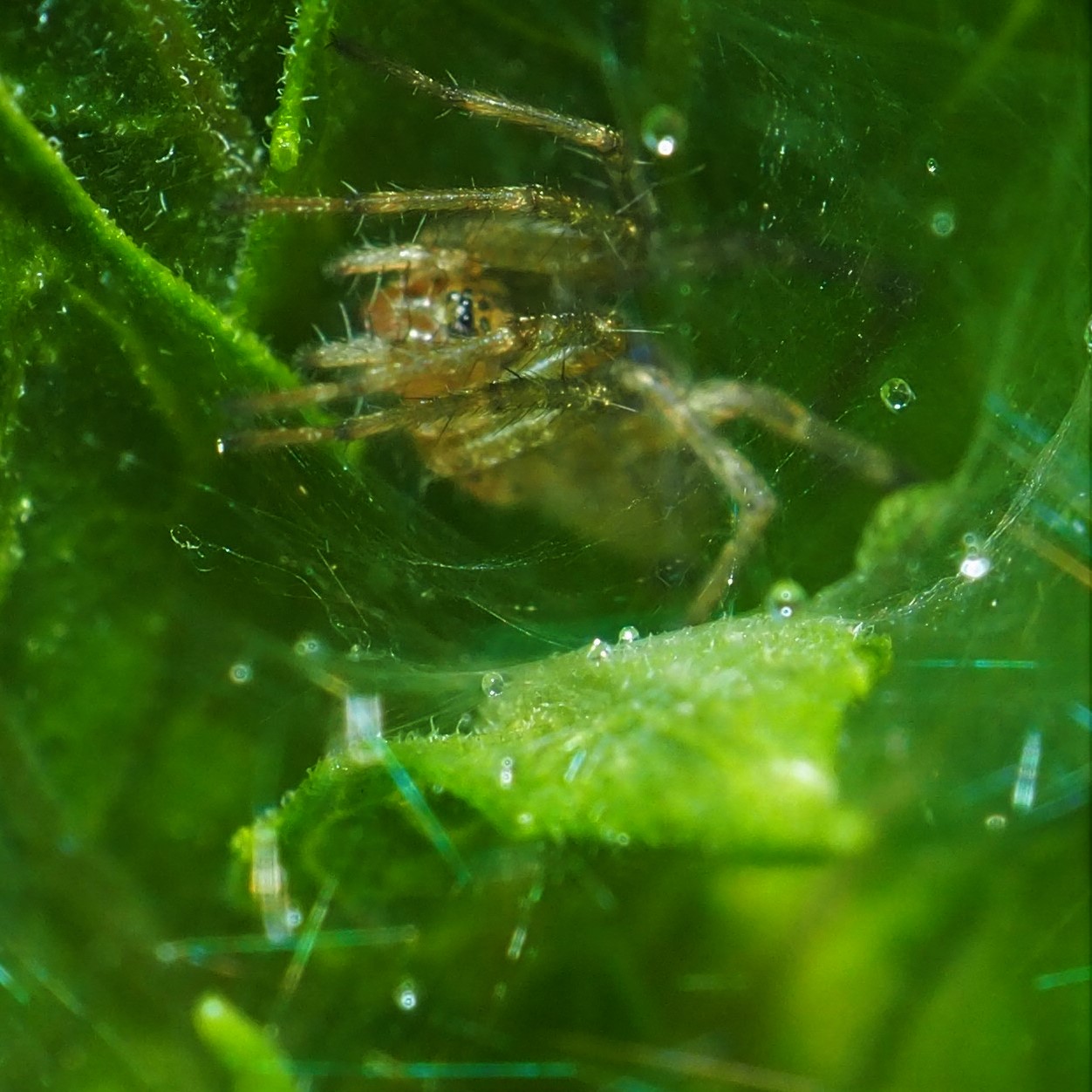
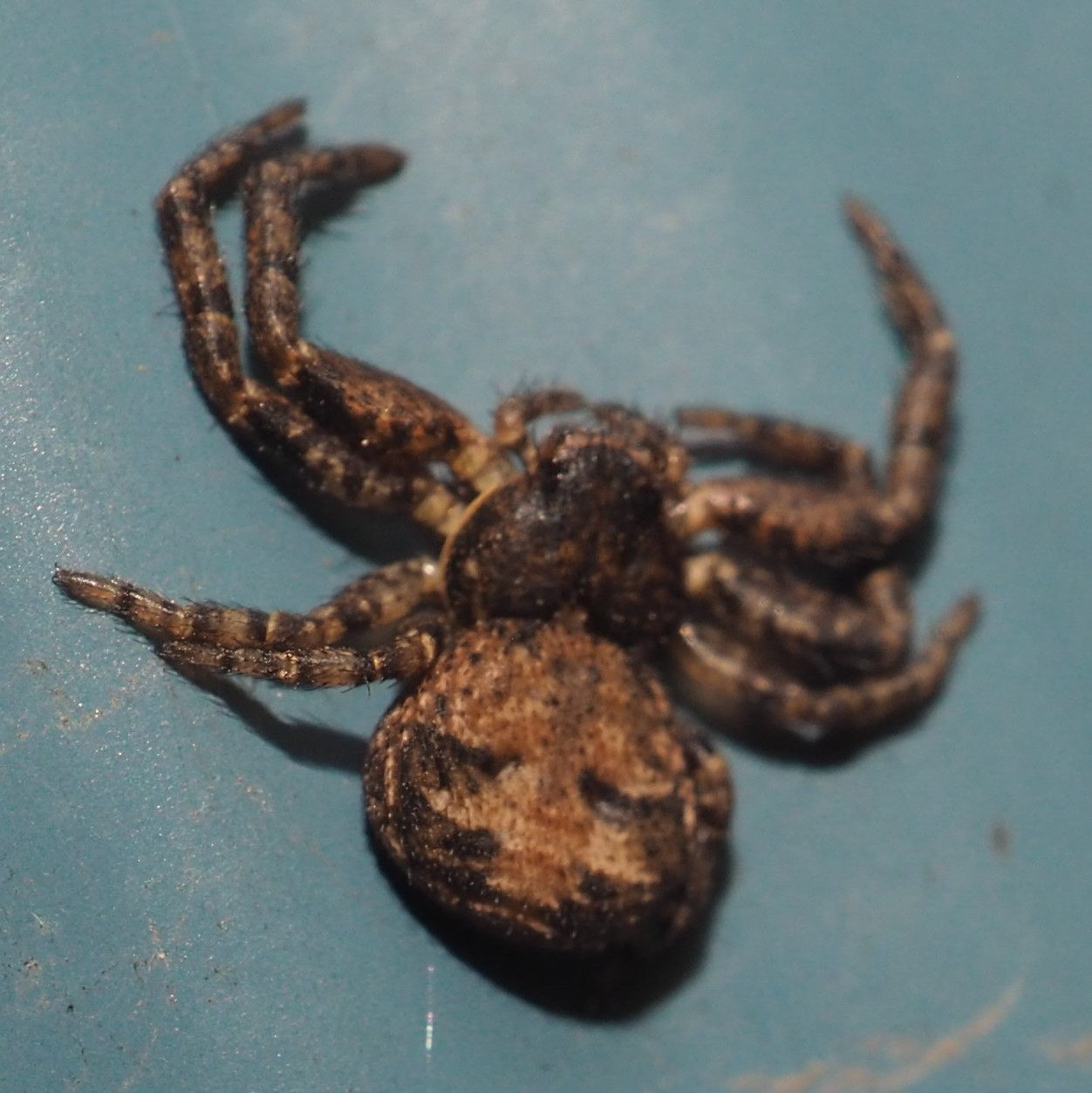
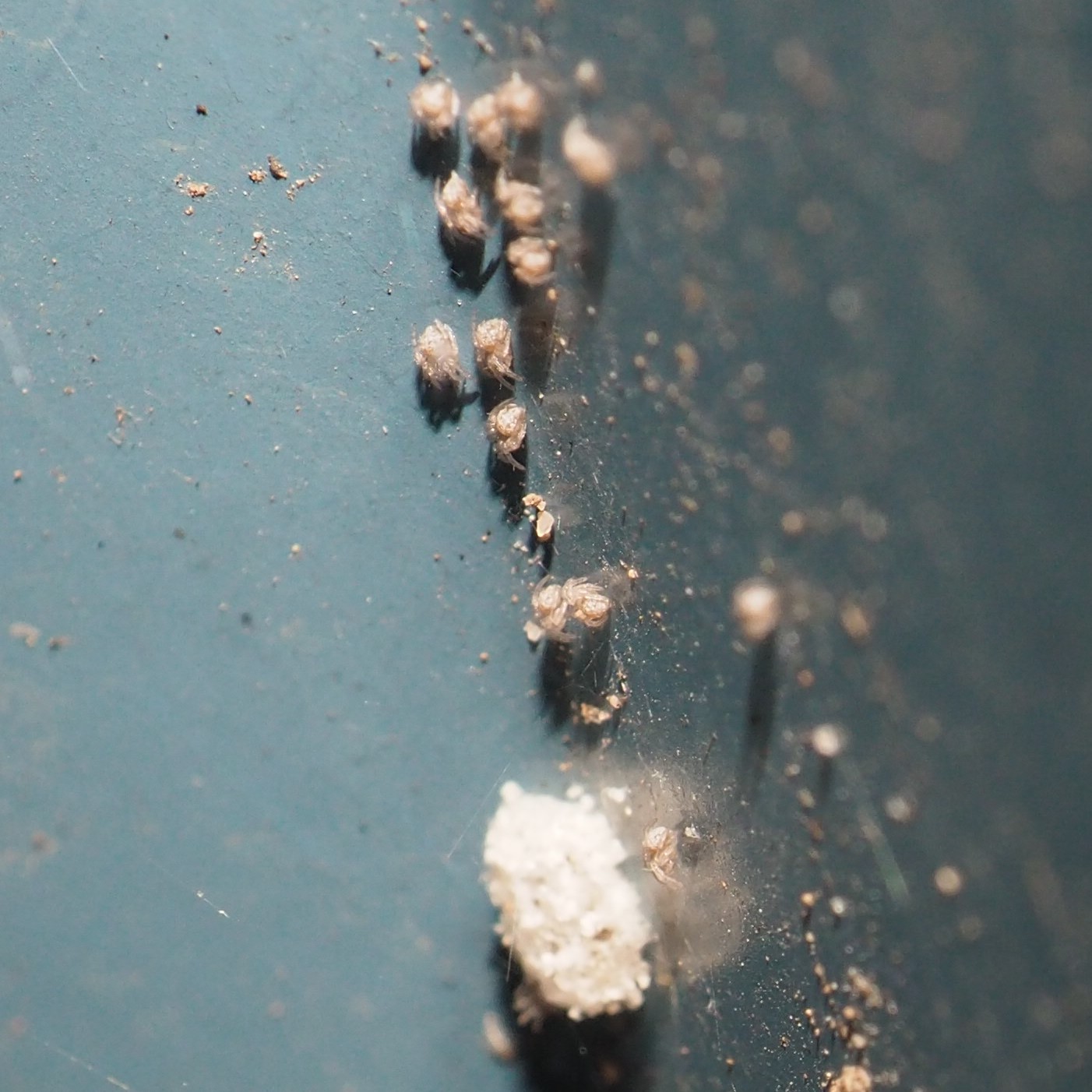
I hope you won't be terribly disappointed that my favorite comic genius, the Common Pirate Spider, Mimetus puritanus, didn't show up this week. But my other favorite, the Jumping Spider Naphrys pulex, did. A lot.
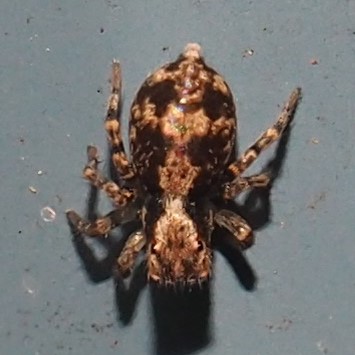
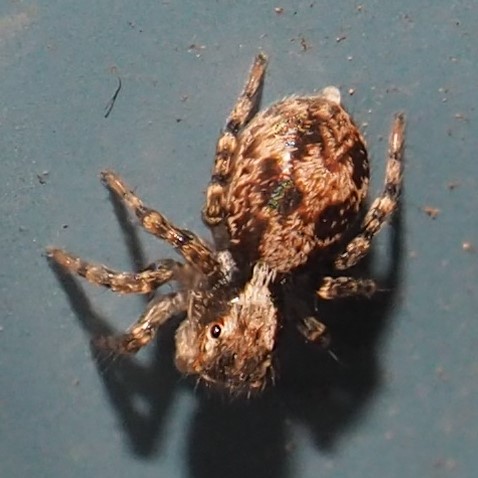
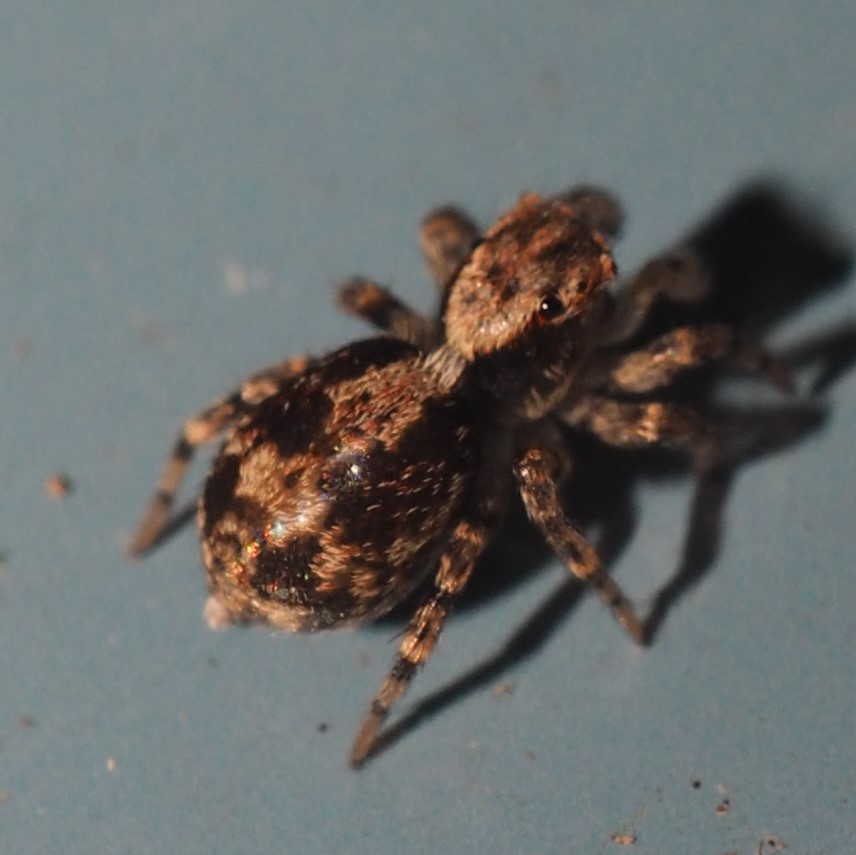
Here is that Garden Ghost Spider, or maybe two individuals, since the last one was taken at a different place. This individual may be a very young Spider, going by its size.
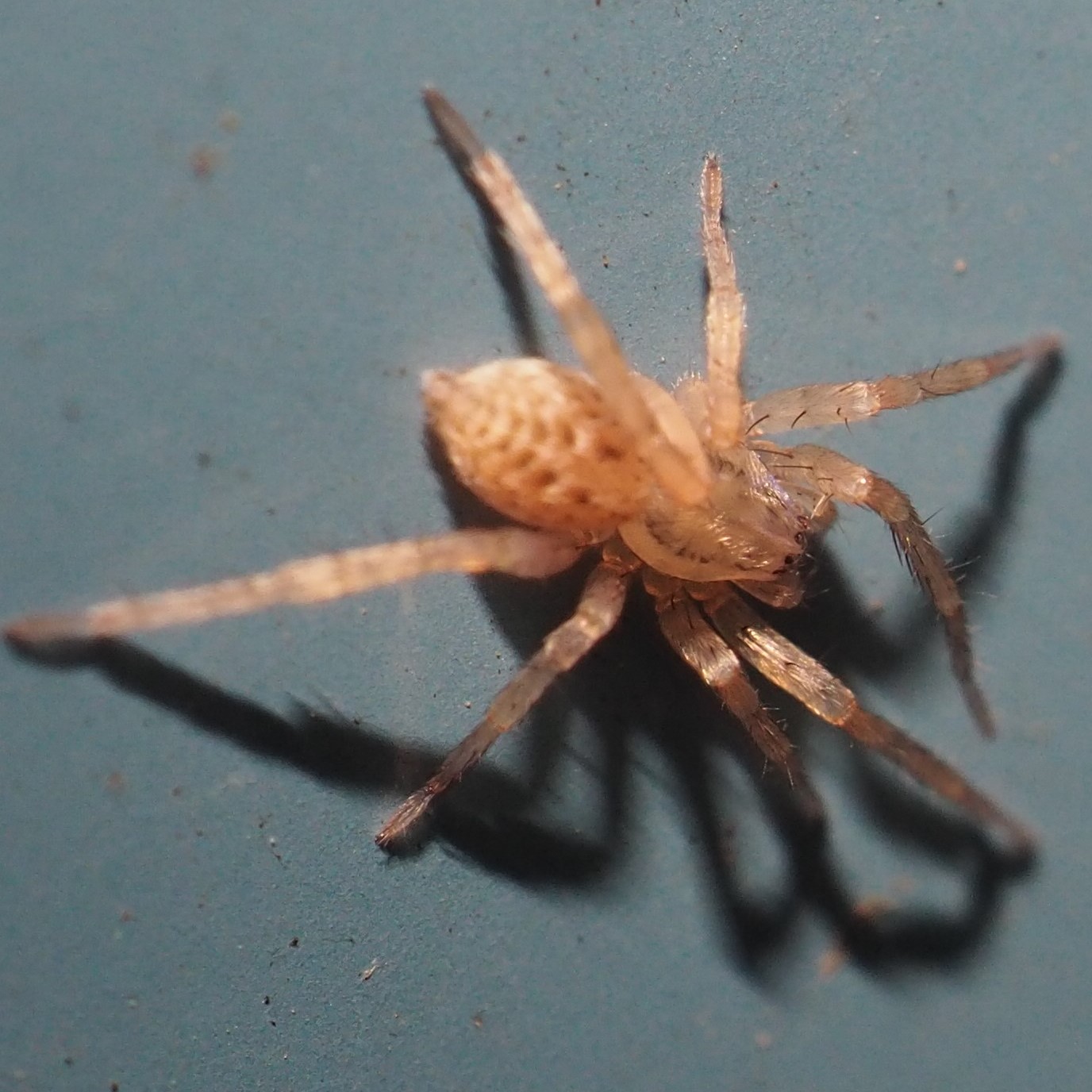
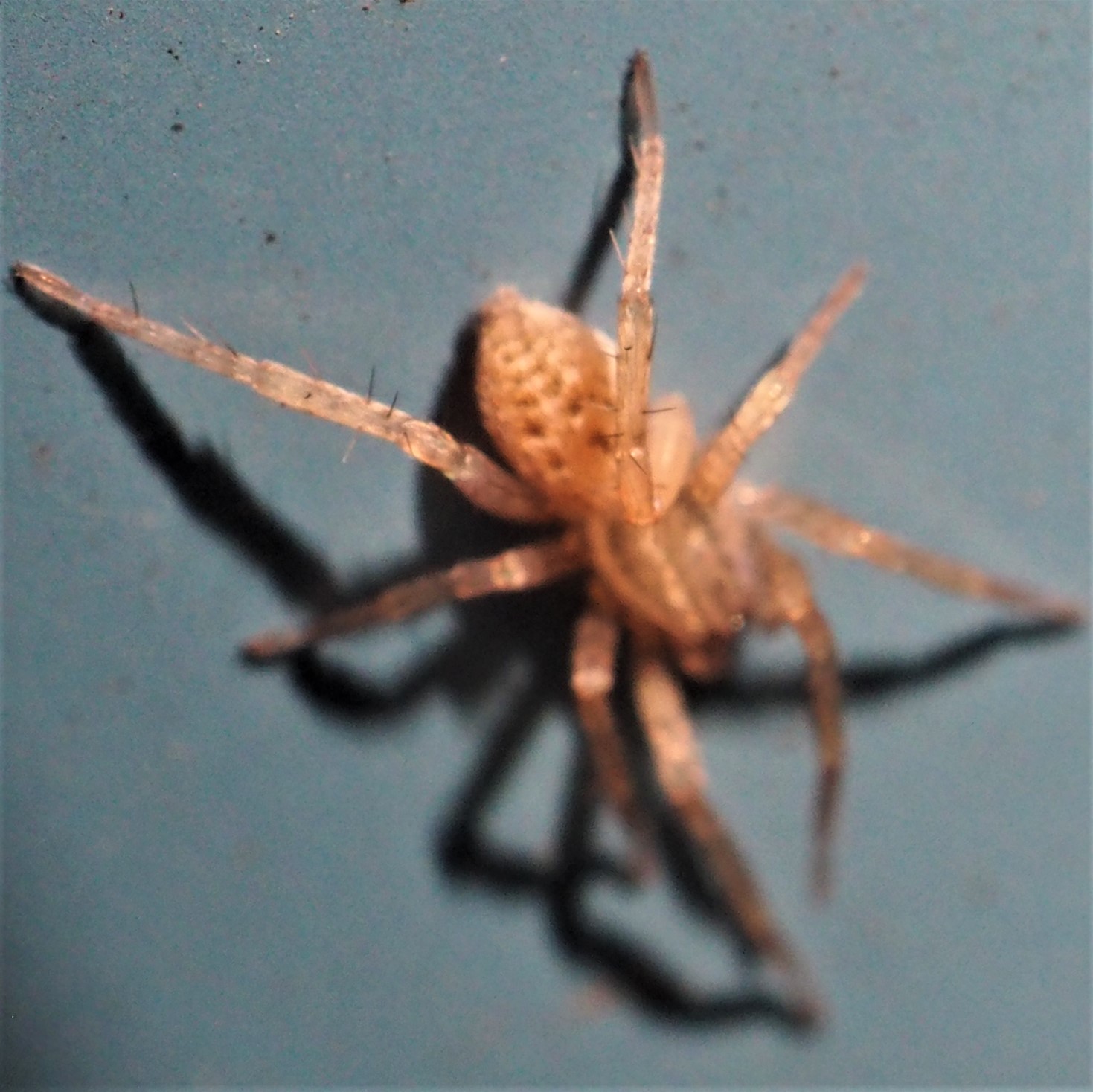
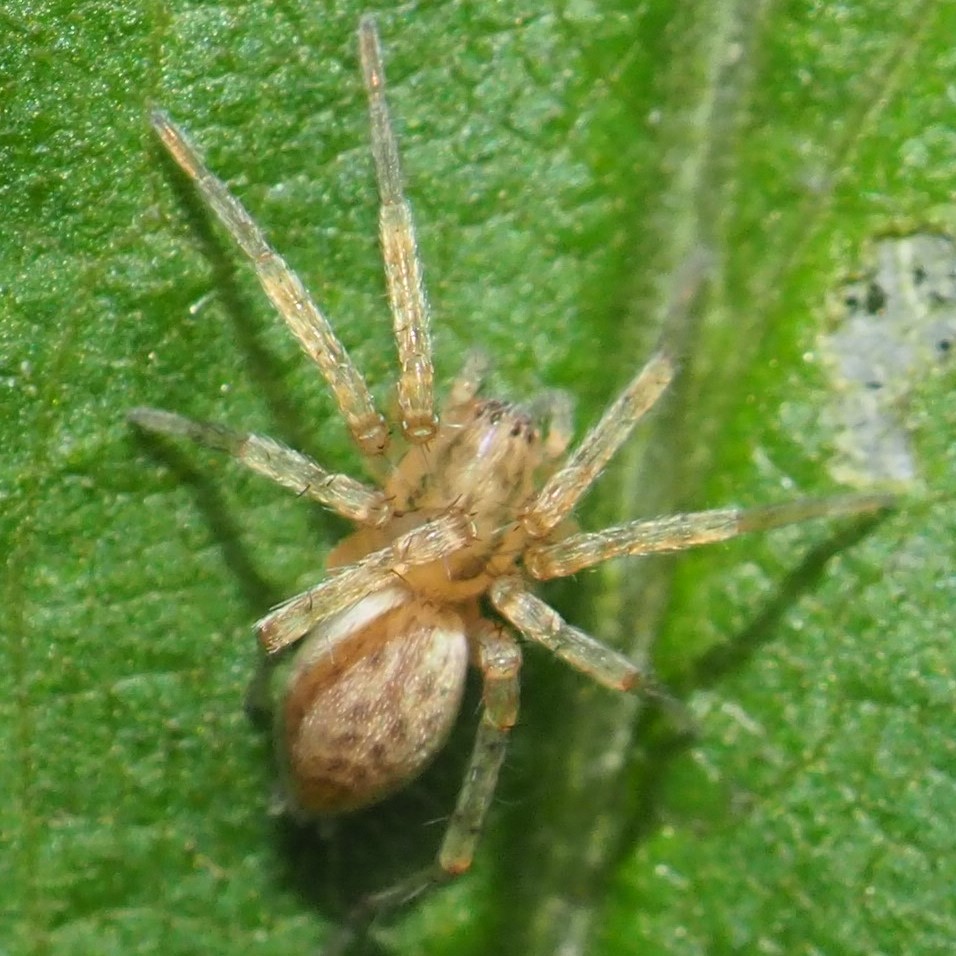
There were a few non-Spider creatures. For some reason we had quite a few members of genus Polyxenus, a descendant of the Bristle Millipedes. And this Pillbug. Oh wait. Don't let me forget. Do you remember a few weeks ago a pair of Frogs came to visit the pond. Well, now among the fewer and fewer larger Toad babies we are now getting a few very small Froglets. Here is one. Don't ask me how it is different from the Toadlets except a little smaller!
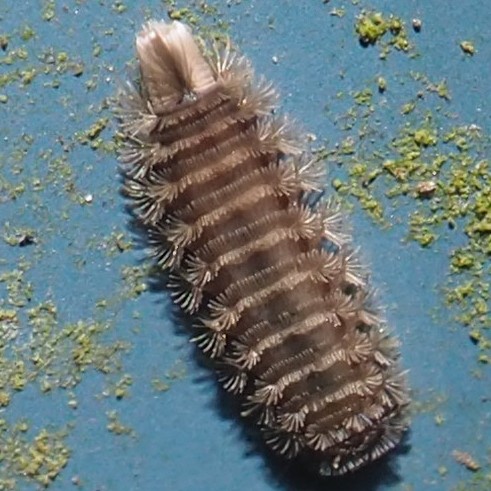
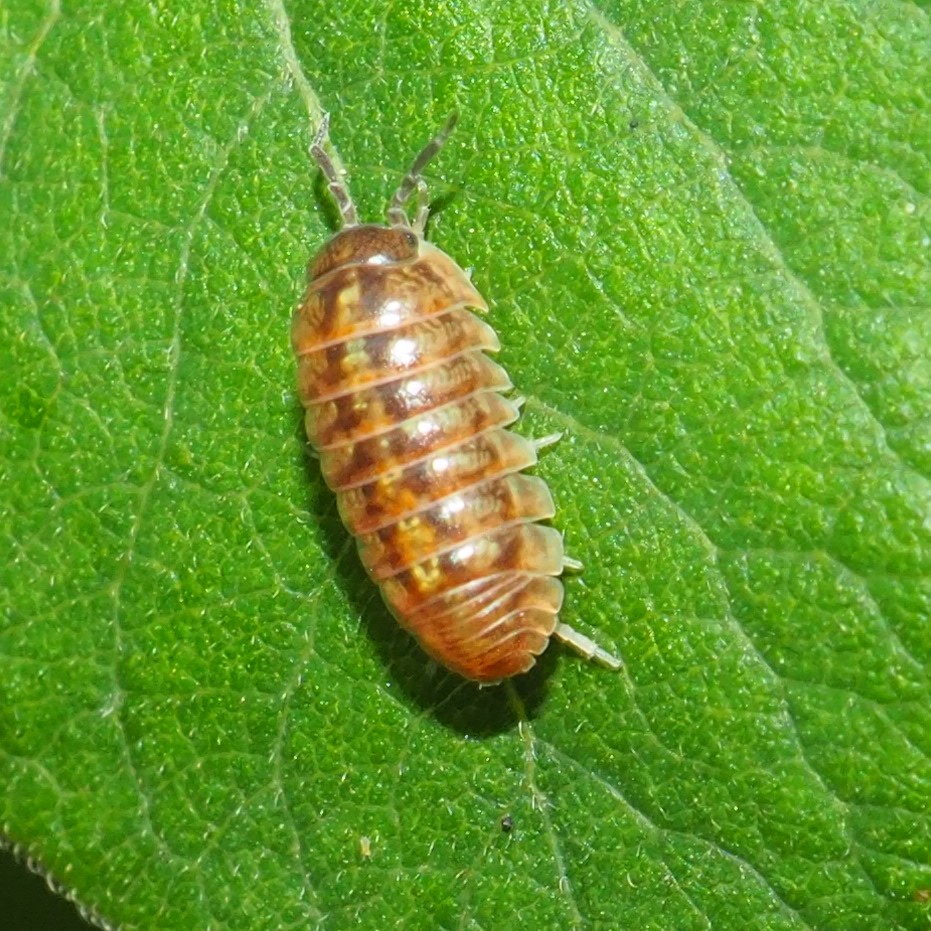
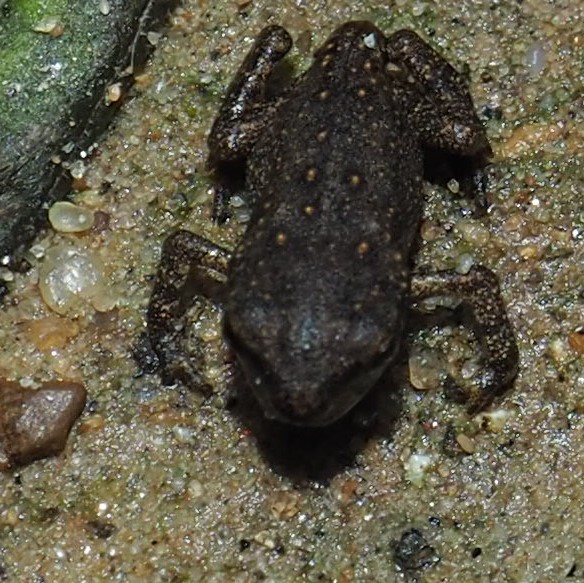
Now for the Wasps. This morning I found the first little Potter Wasp, Eumenes fraternus, the "Brotherly" little Wasp who lays its eggs into a tiny clay pot.
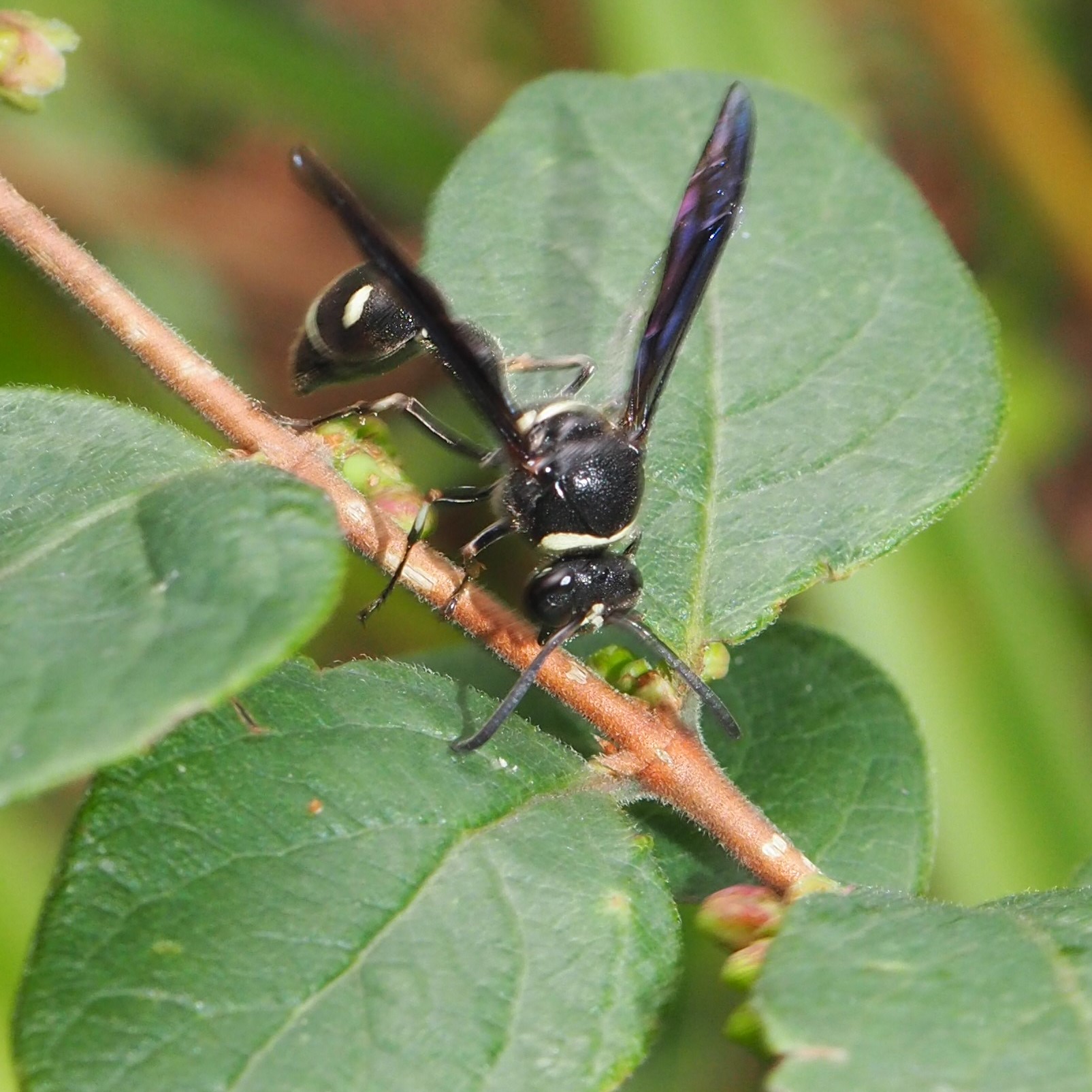
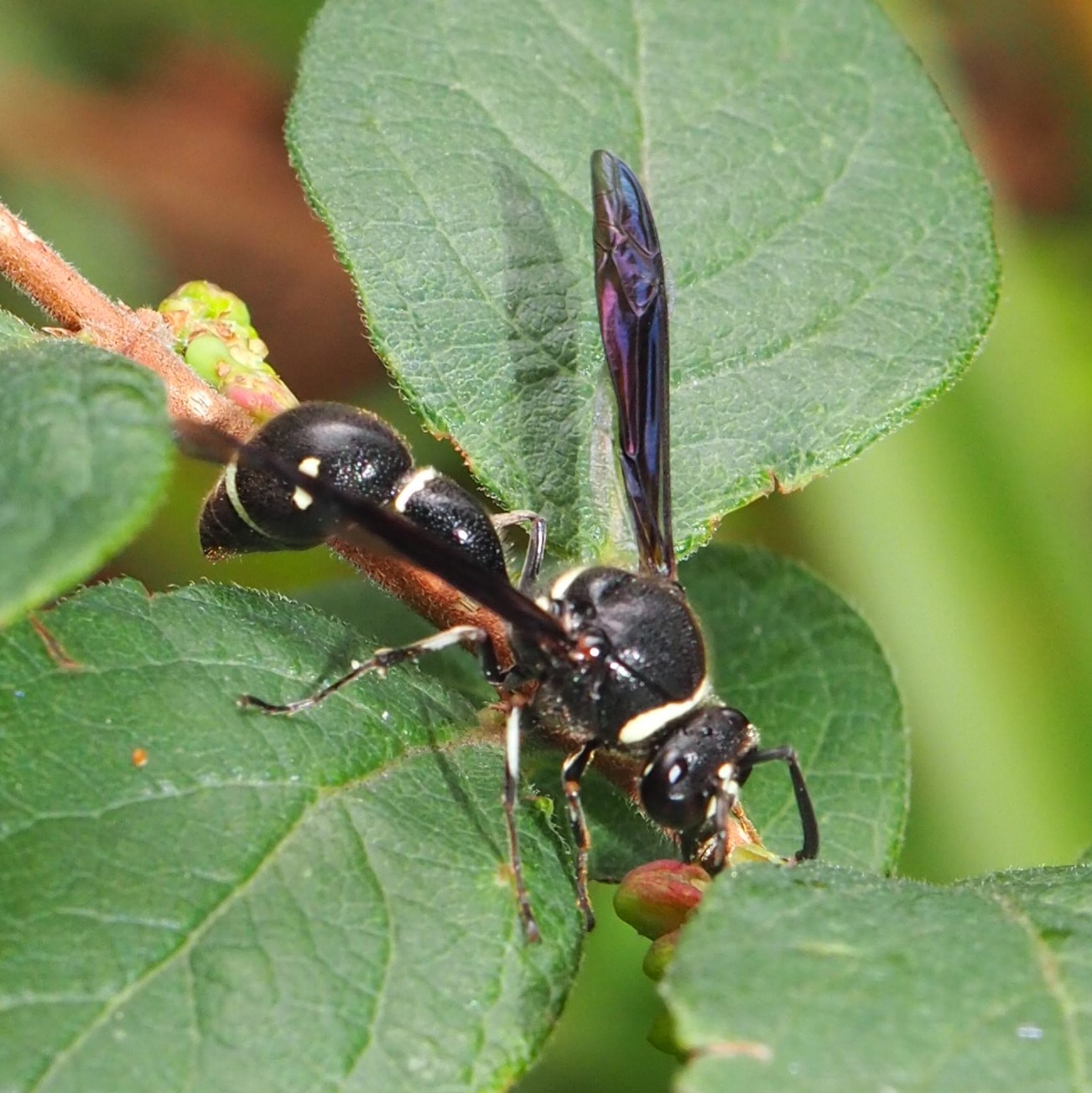
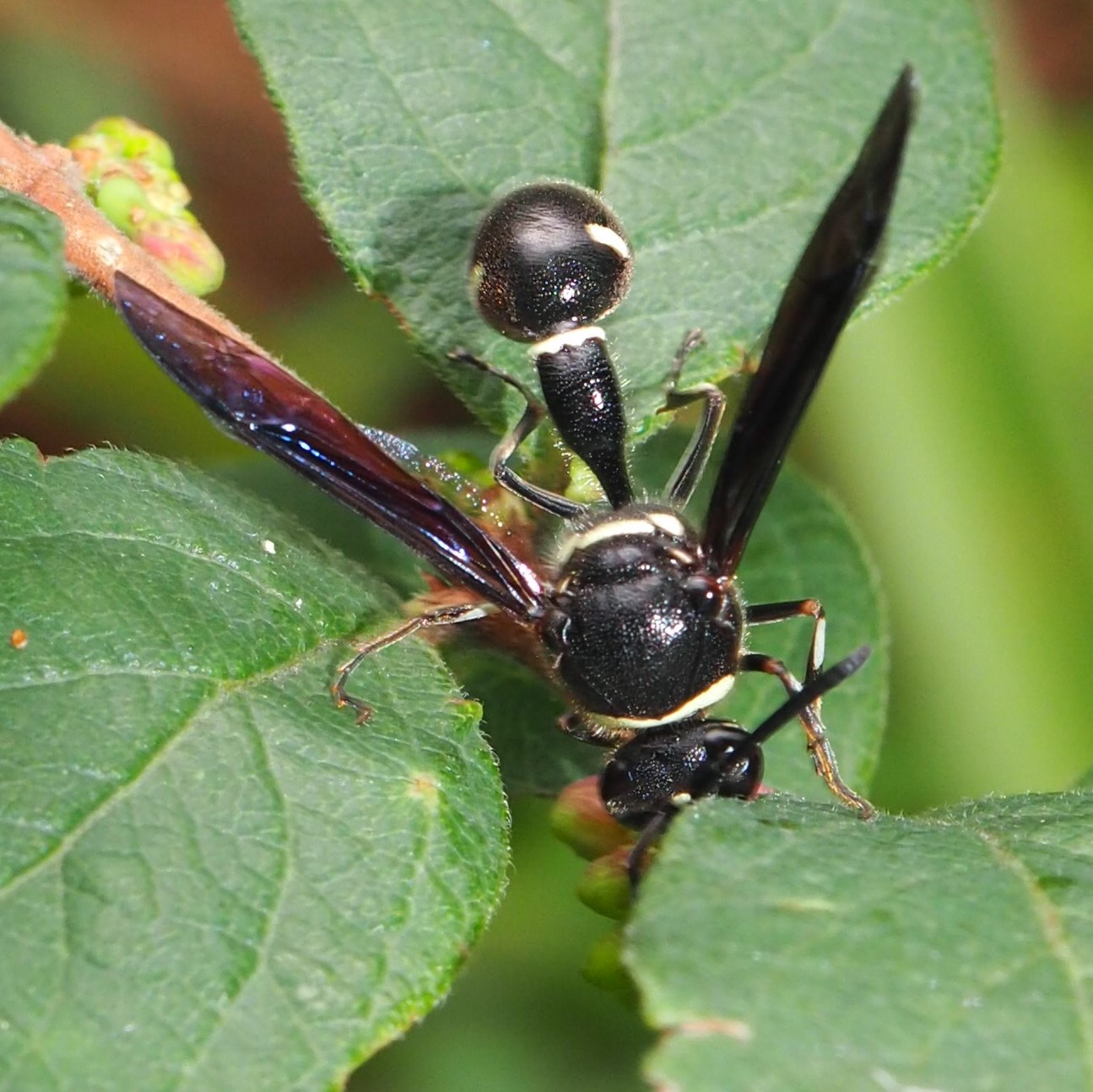
Here are a couple more mystery Wasps.
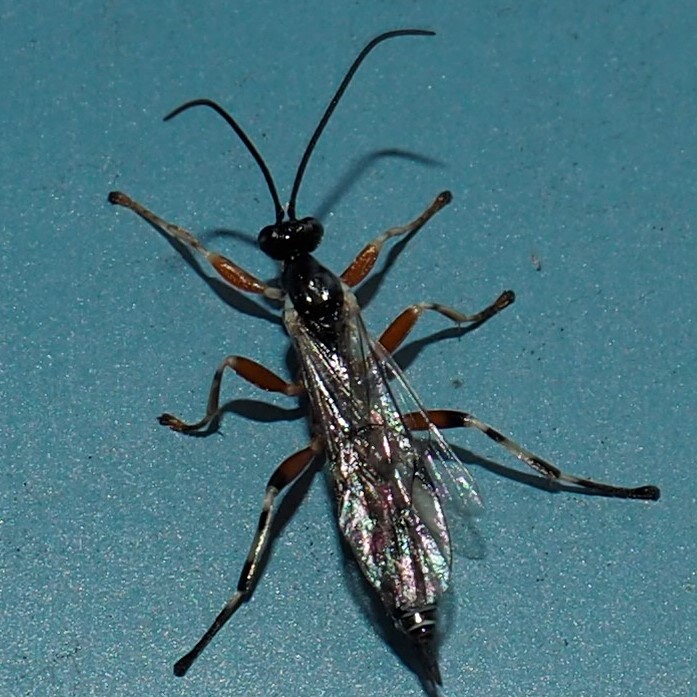
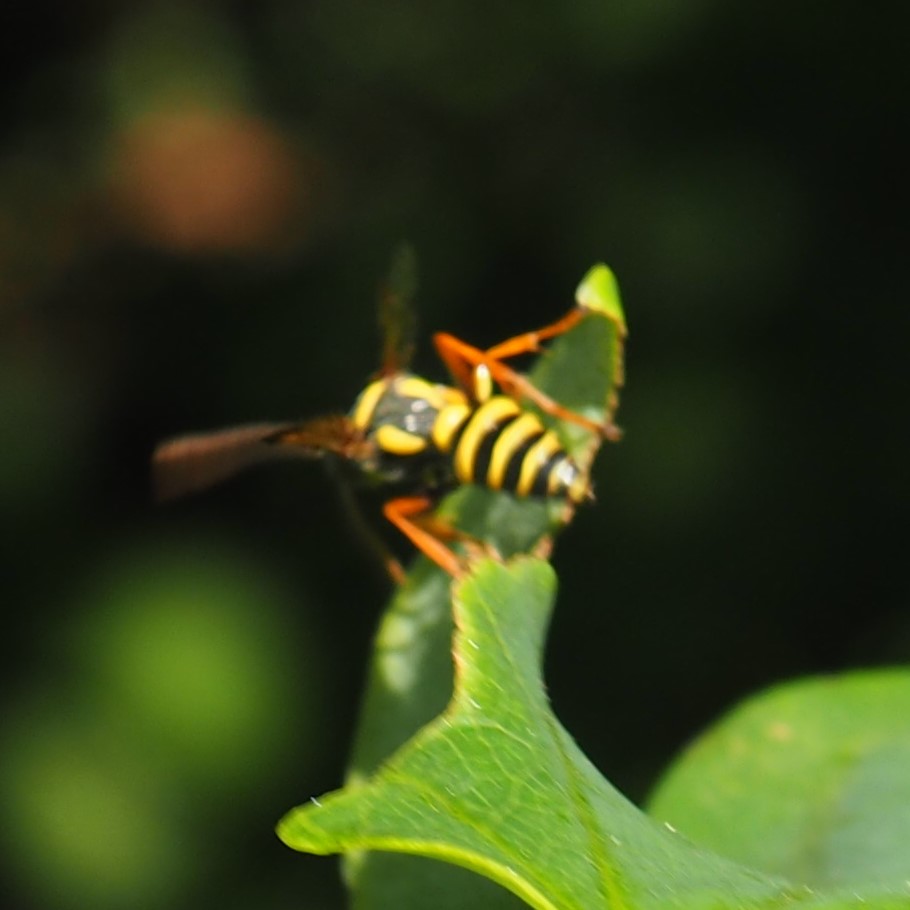
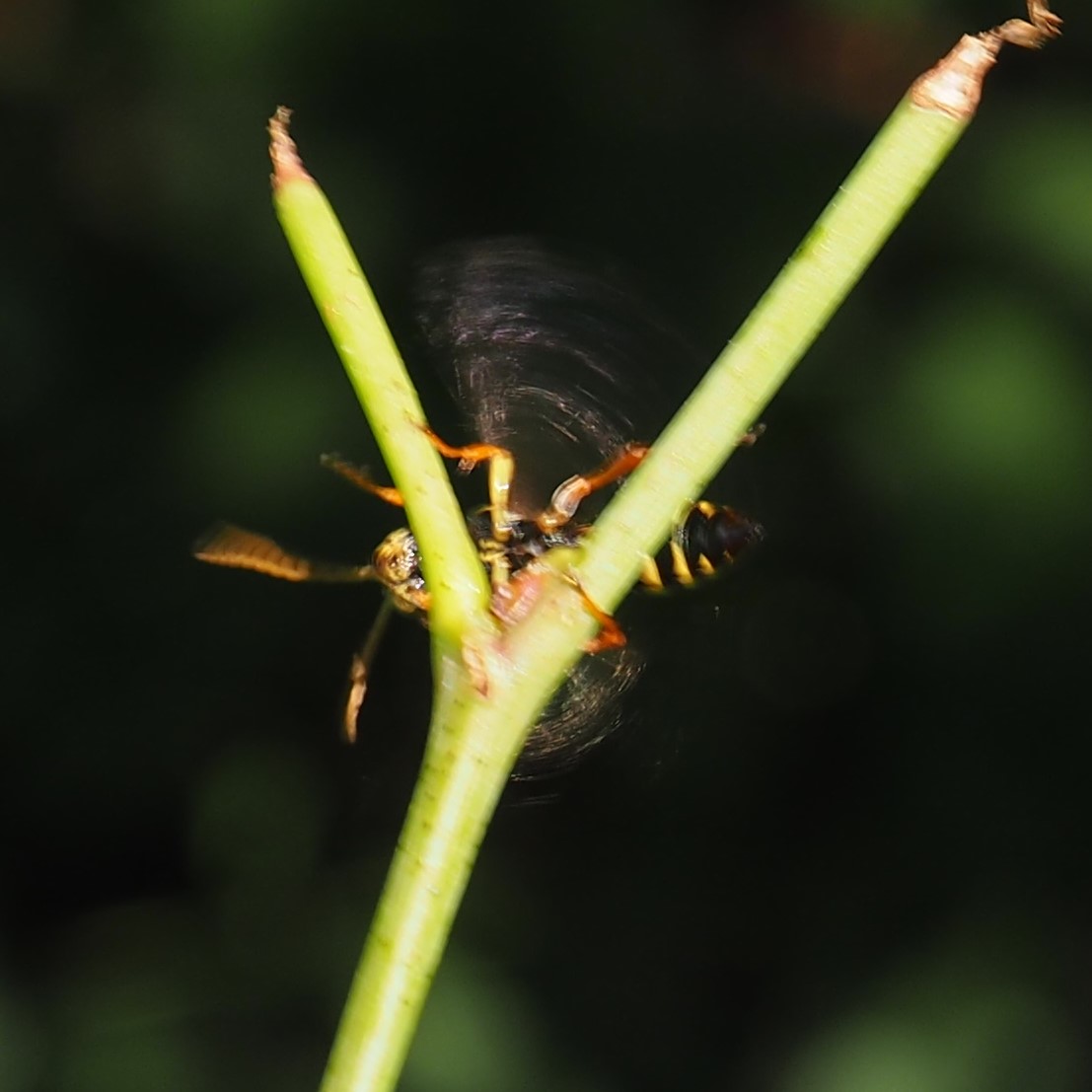
Here's a quick chase around the fishes' favorite territory - out to Rabbit Cove and back and forth...
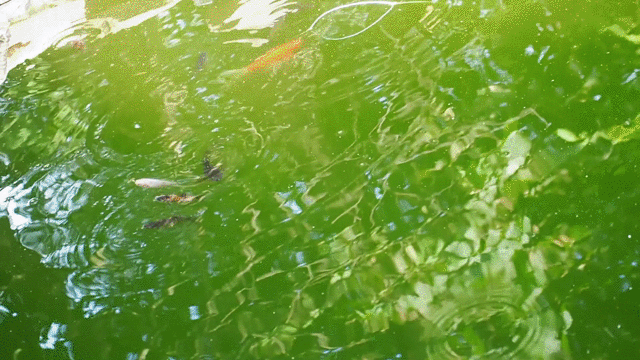
Another short homily: We're gradually trying to chop out as much as possible of the overgrown vegetation all over this place. Thanks to Debbie for letting us borrow her yard waste dumpster in addition to our own, which fills up so fast! Anyone who is handy with lopping shears as well as a saw is welcome. I'll make coffee till we run out and then we'll run out and get some more! What, that wasn't a homily? It included the word "coffee", didn't it?
Love, Martha
Back to August 1, 2021
Forward to august 15, 2021
Back to main menu
copyright Martha O'Kennon 2021




























 ,
,

























































































